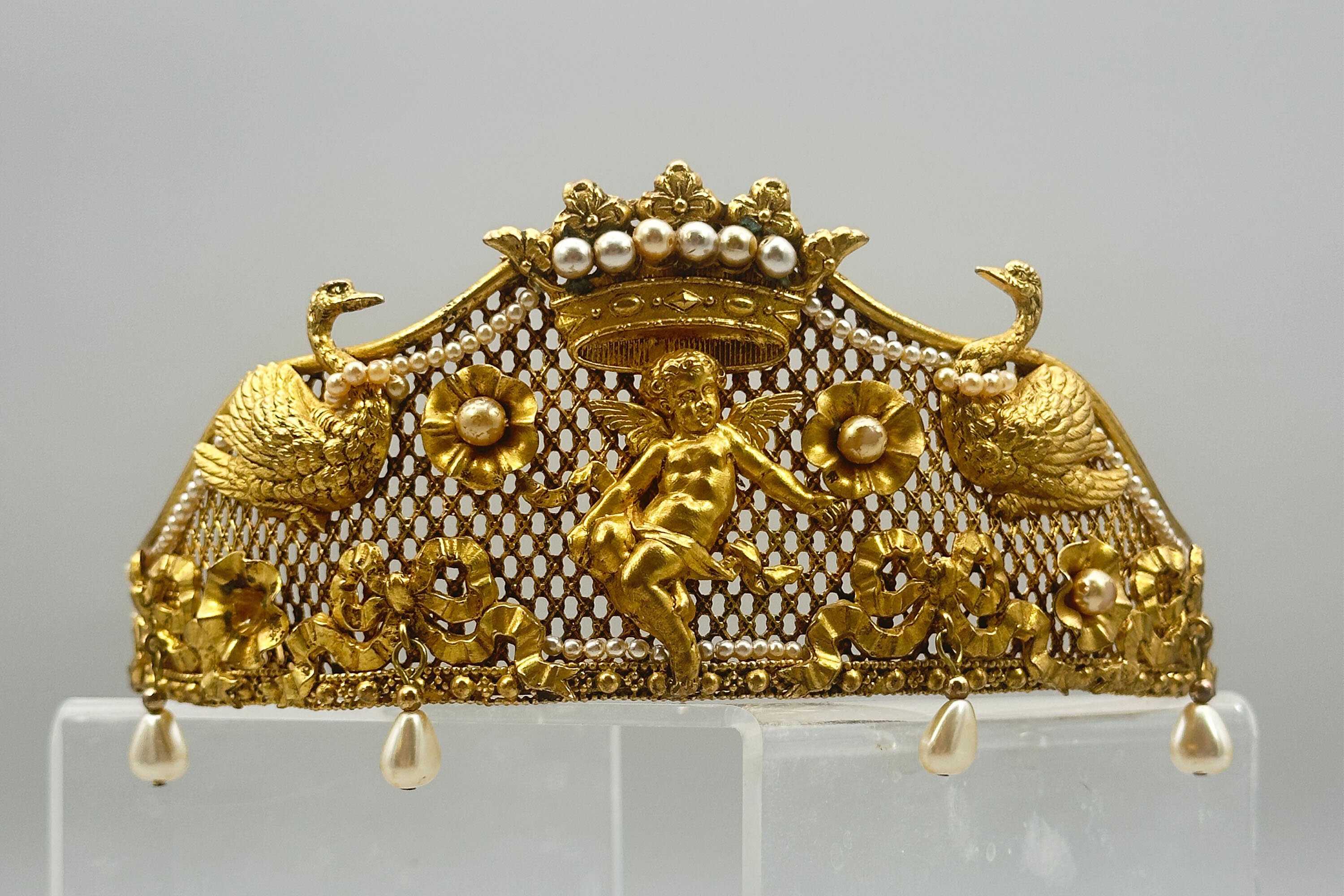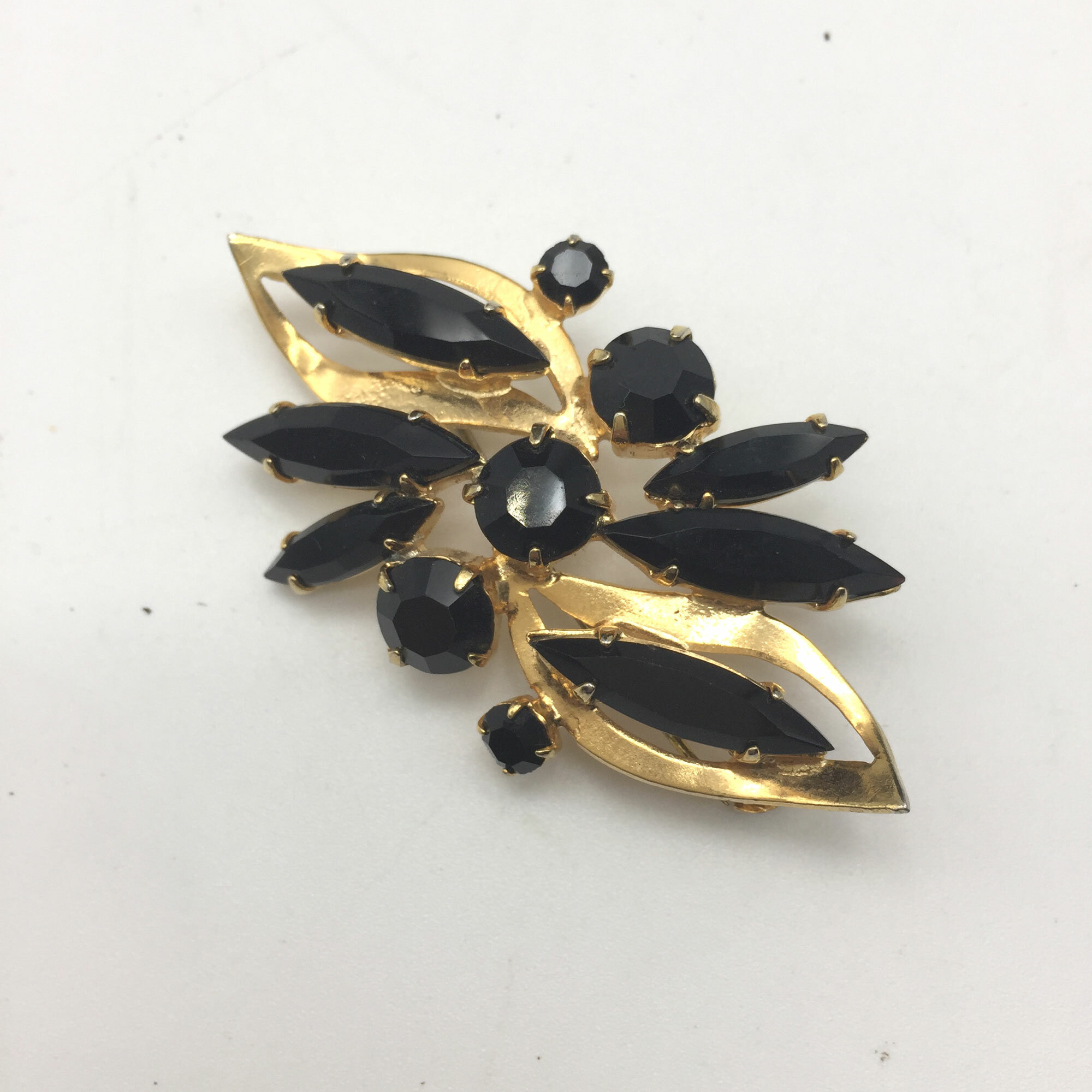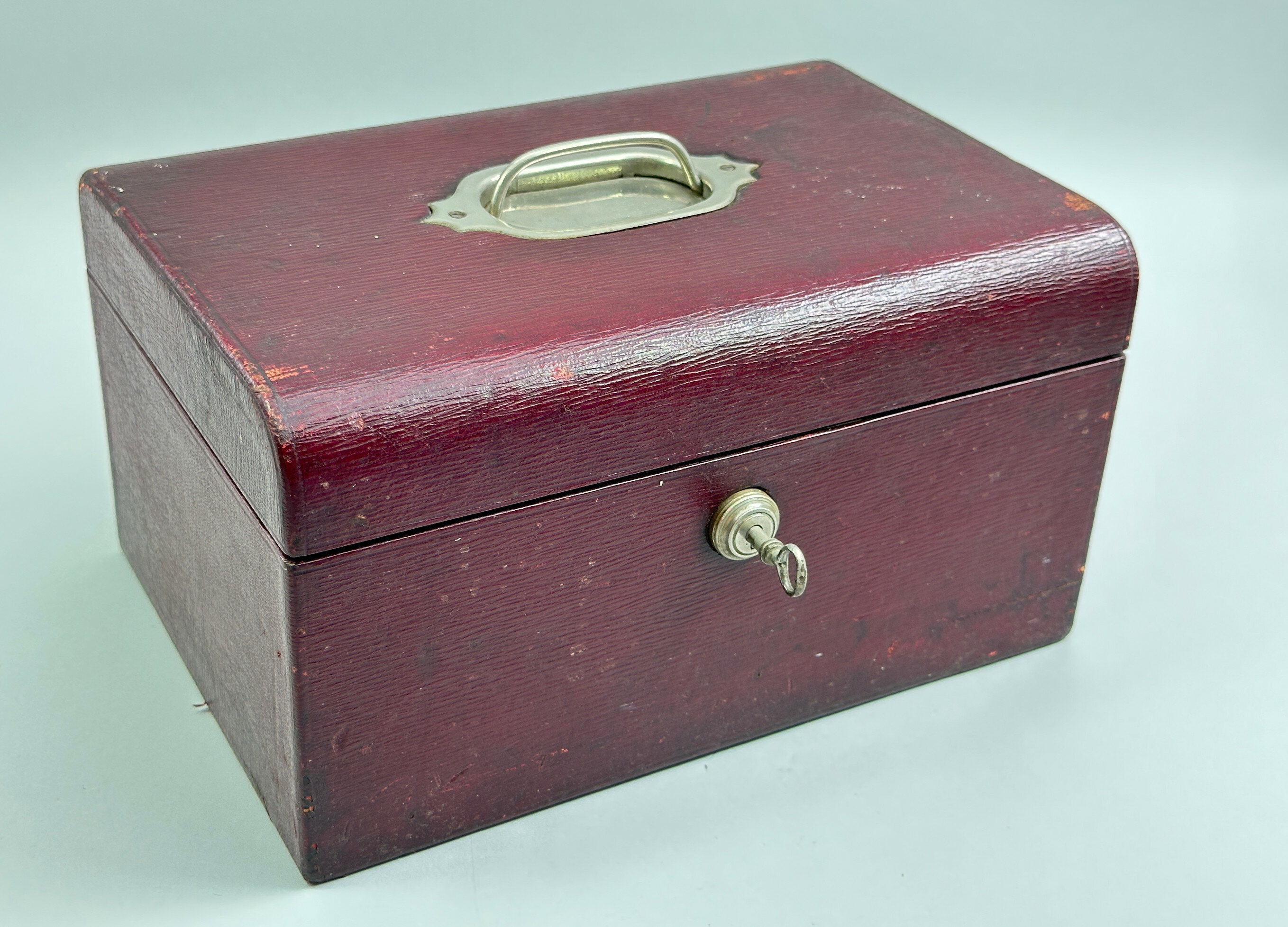
Burgundy Leather Jewellery Box with Bramah Lock, early C20th
Price: £95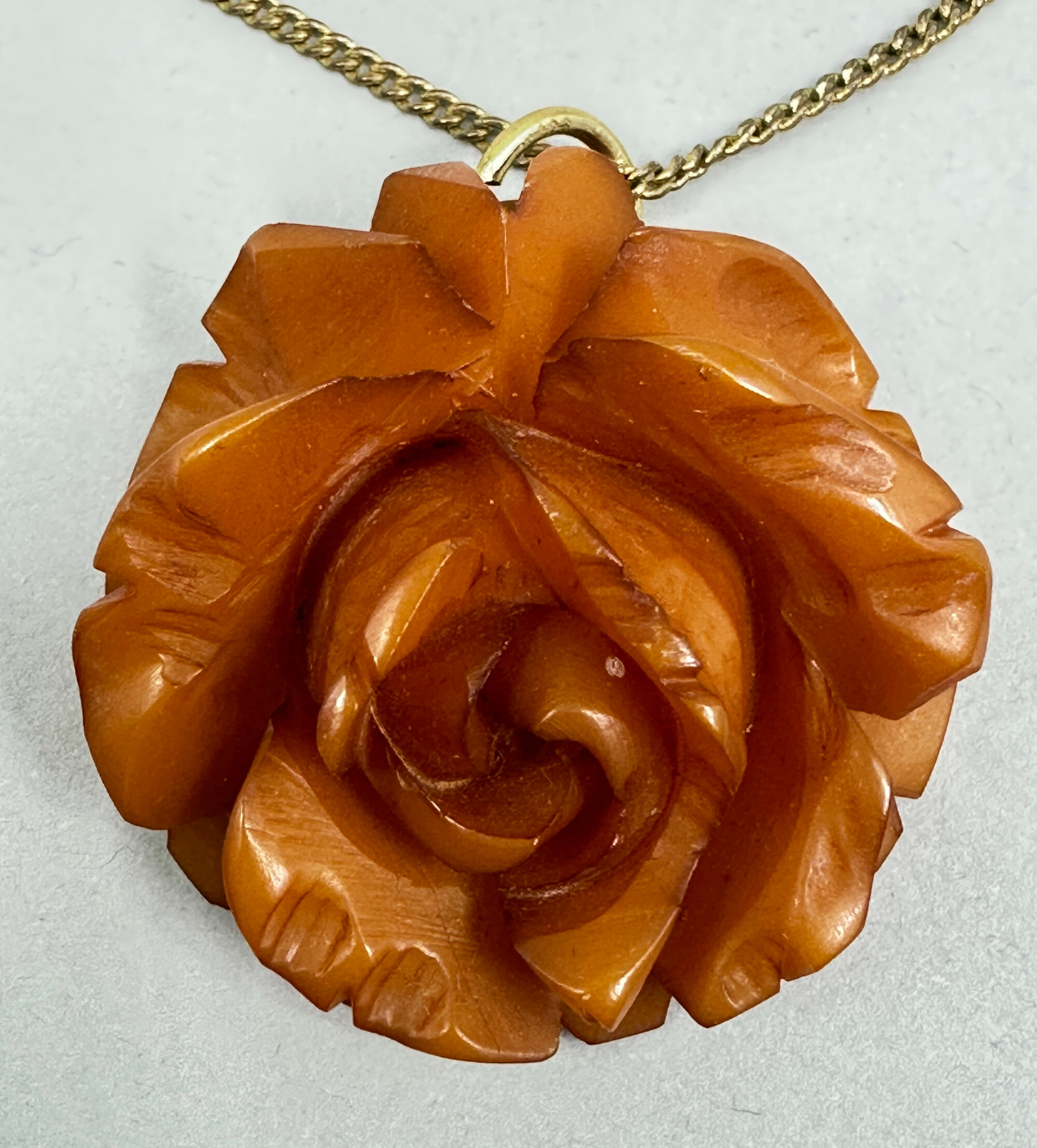
Attractive carved Orange Bakelite Bloom Pendant on modern gold tone chain, British 1930s
Price: £15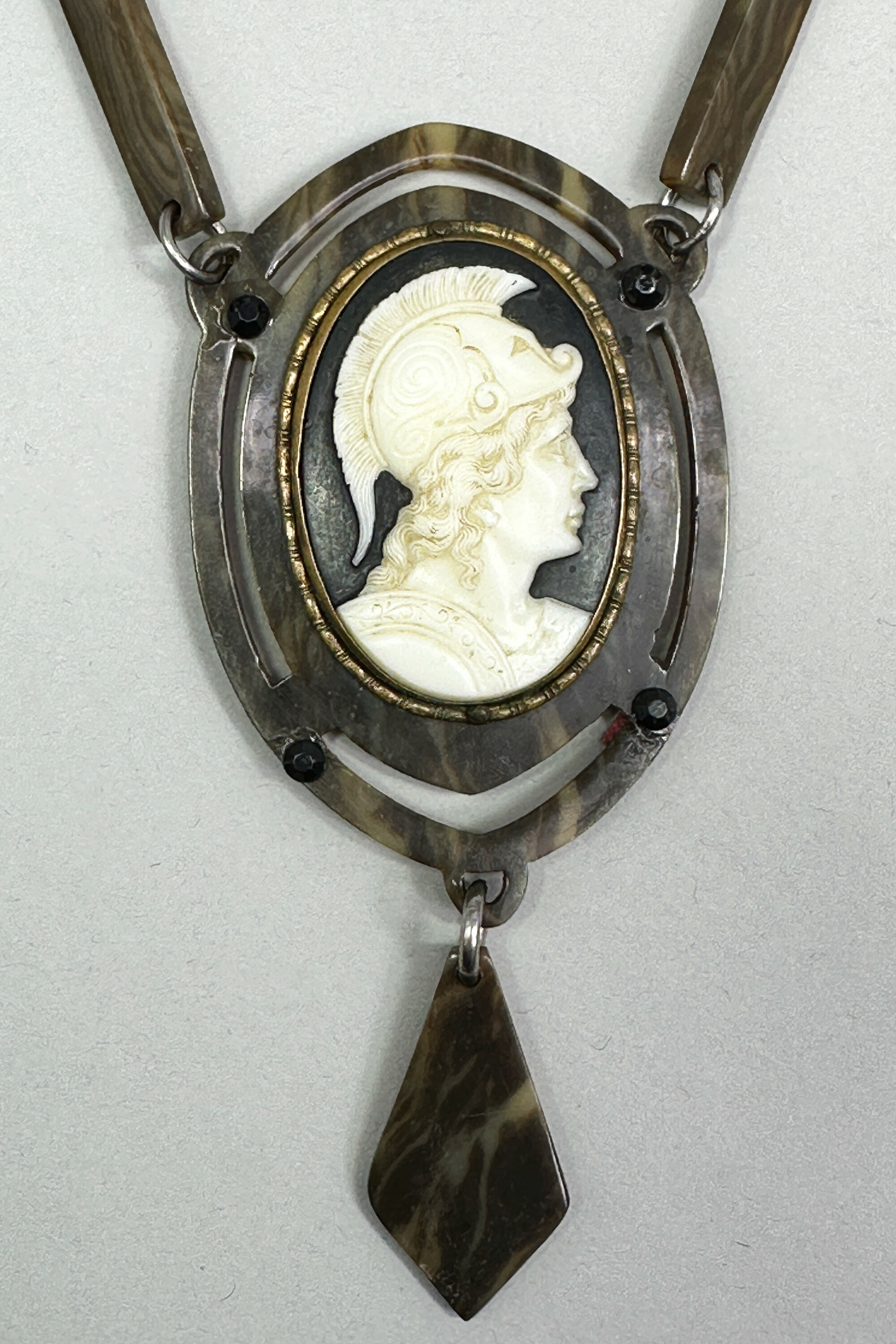
Outstanding brown swirl Bakelite Necklace with faux cameo, French 1920s
Price: £45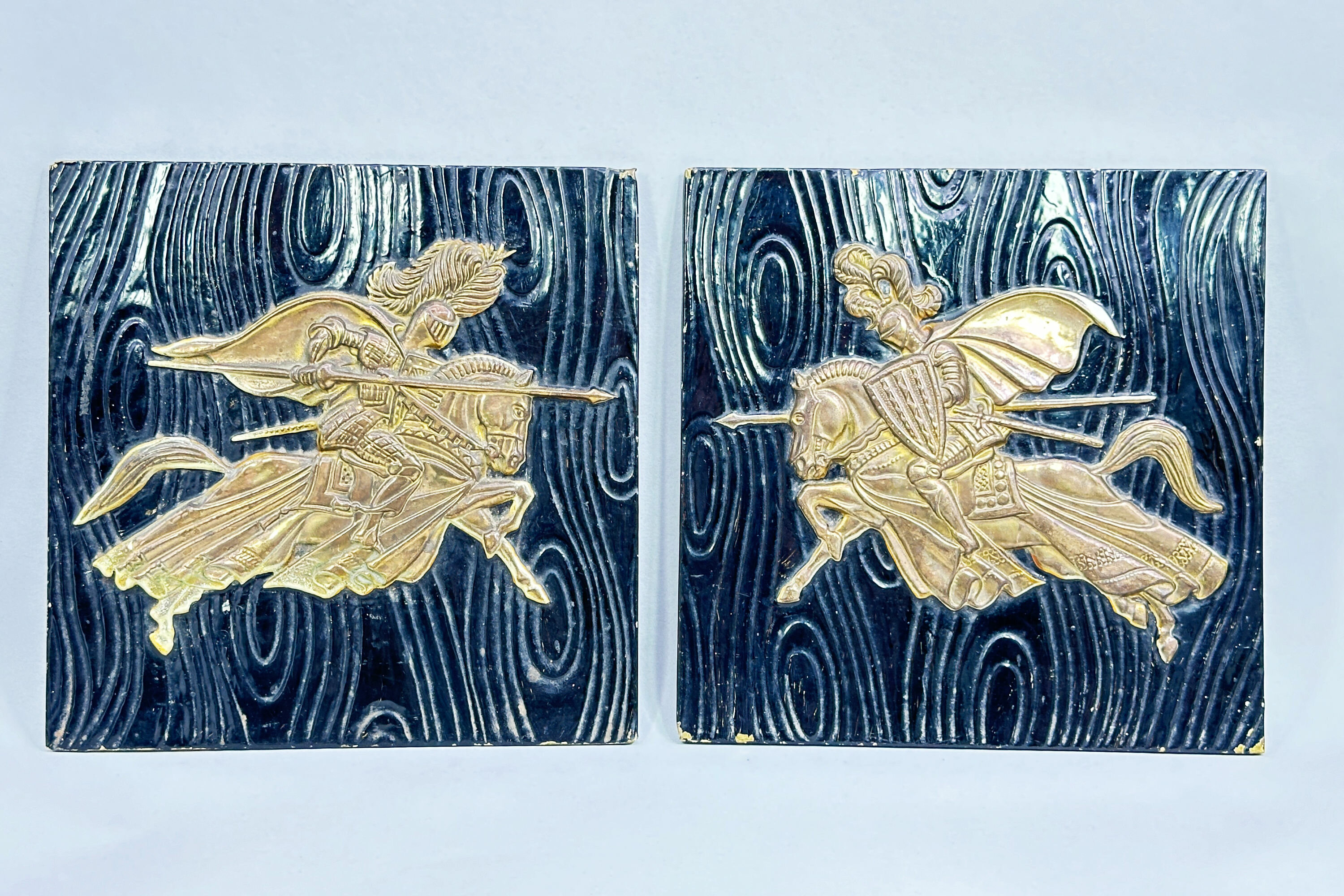
Pair of Brass Wall Plaques of Jousting Knights, Peerage Brass, mid C20th
Price: £45
Silver Art Nouveau Mucha style brooch c1910
Price: £35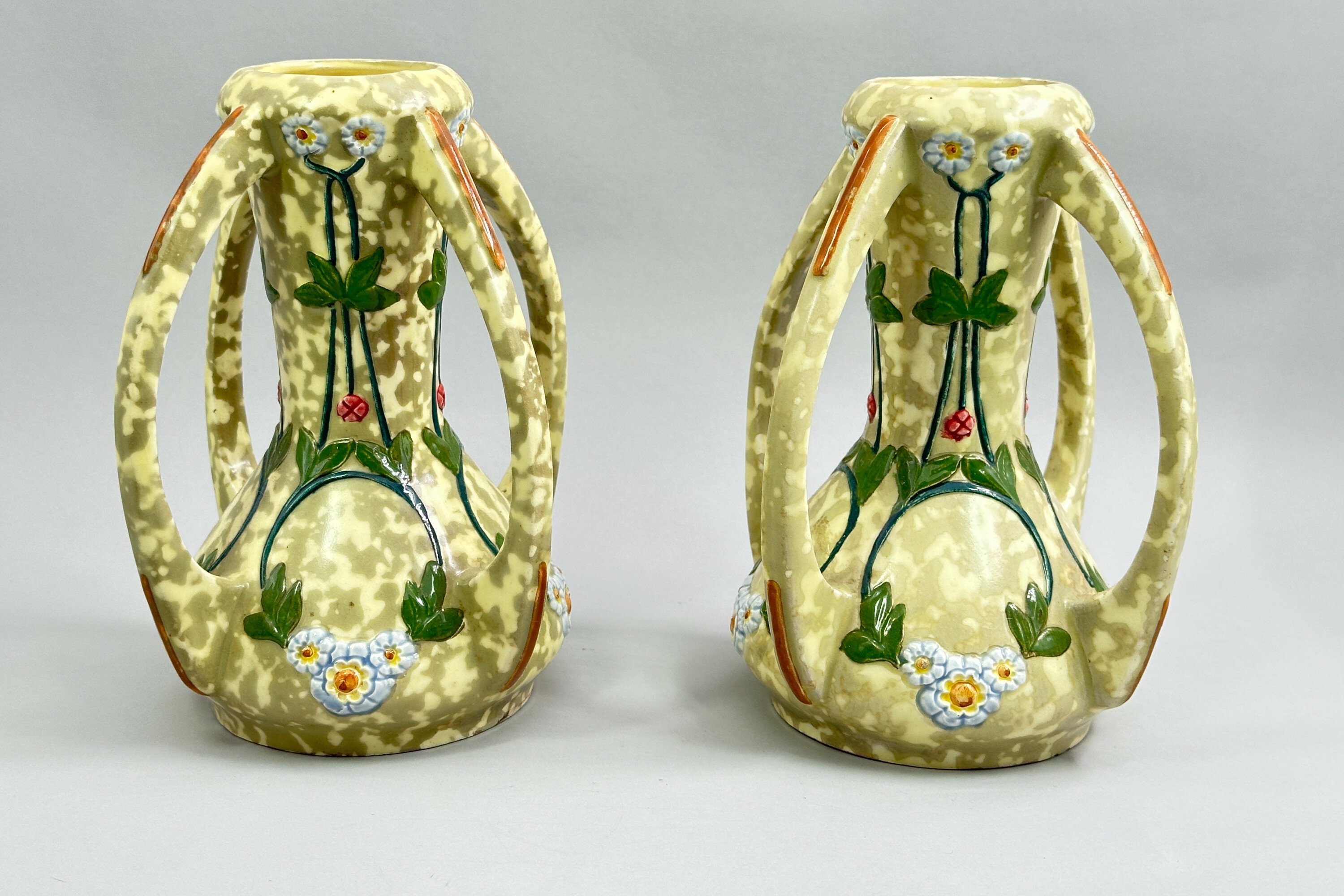
Pair of Royal Dux Secessionist Style Vases, 1930s
Price: £250
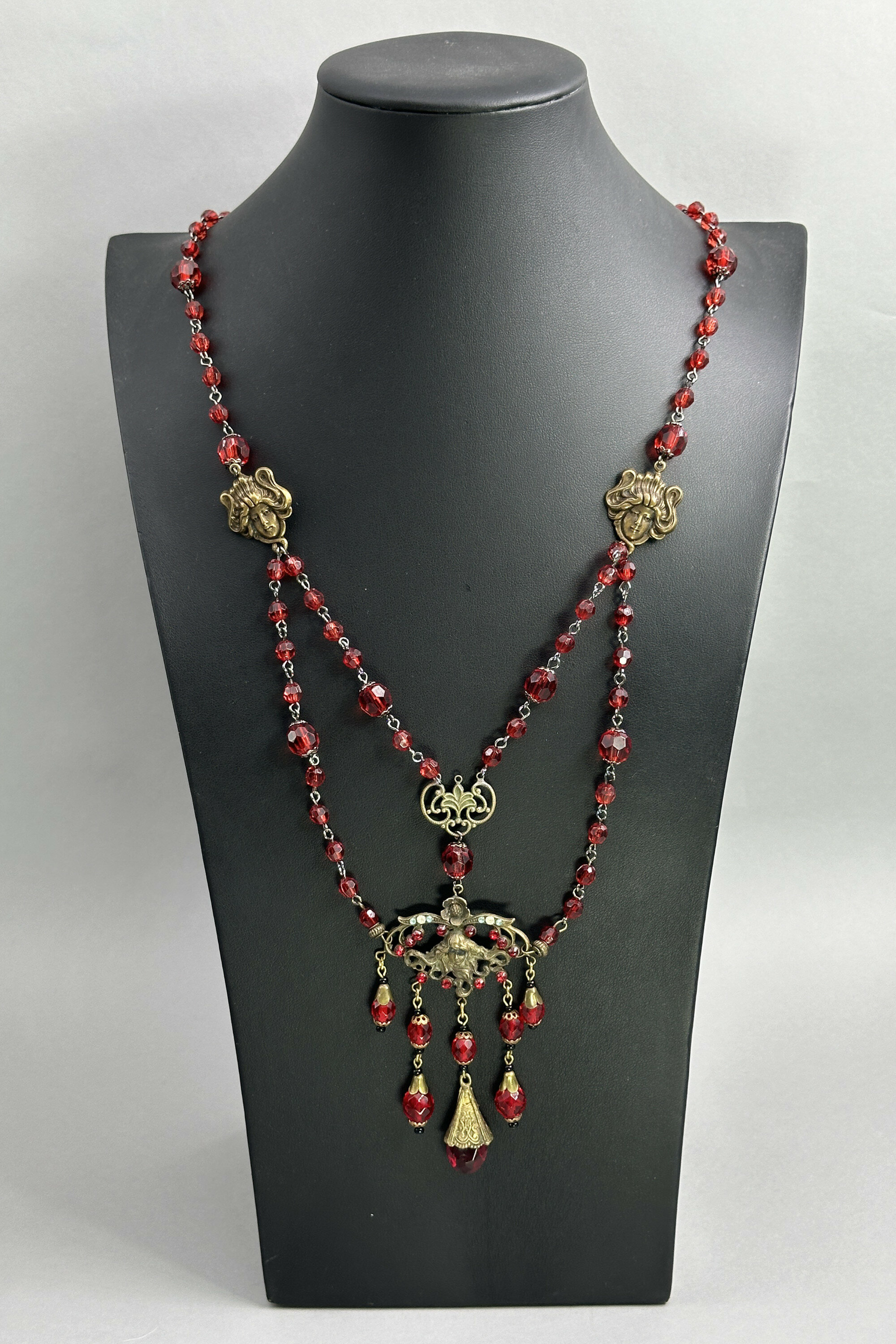
Long Art Nouveau necklace with multiple drops c1930
Price: £75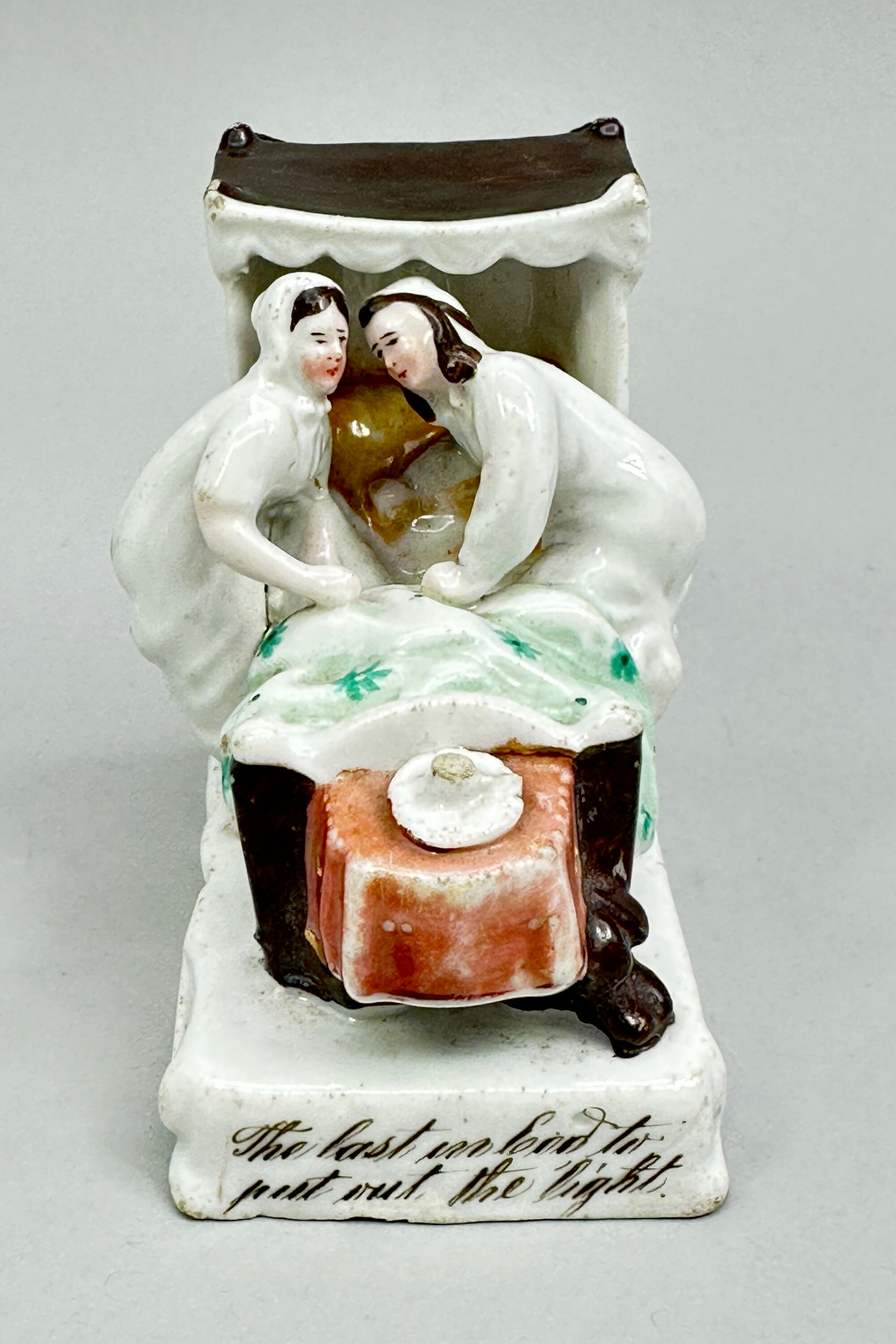
Fairing Figurine - The last in bed to put out the light, German, late Nineteenth Century
Price: £25The various figures were made in white glazed porcelain with coloured decoration. The compositions were sculptural and often accompanied by an inscription, as here. Many models are known. Two typical examples are 'Returning from the Ball' and 'Twelve Months after Marriage' but the most common example is represented here 'The last in bed to put out the light'. A couple are seen climbing into a covered bed at the foot of which stands a candle in a holder. These candles are usually broken off, most likely because of simple damage over the years but it has been suggested that this was done deliberately for good luck.
Some of the fairing figurines are marked, as here. The impressed number '2851' comes from the first series of figures produced by the Conta factory with numbers ranging from 2850 to 2899. The earlier examples do not have the shield mark found on most of the pieces which indicates an earlier dating here, more towards the middle of the nineteenth century.
Fairings have been collectors' items for many years now and still hold a naif charm which makes them appealing display items, with a history of their own.
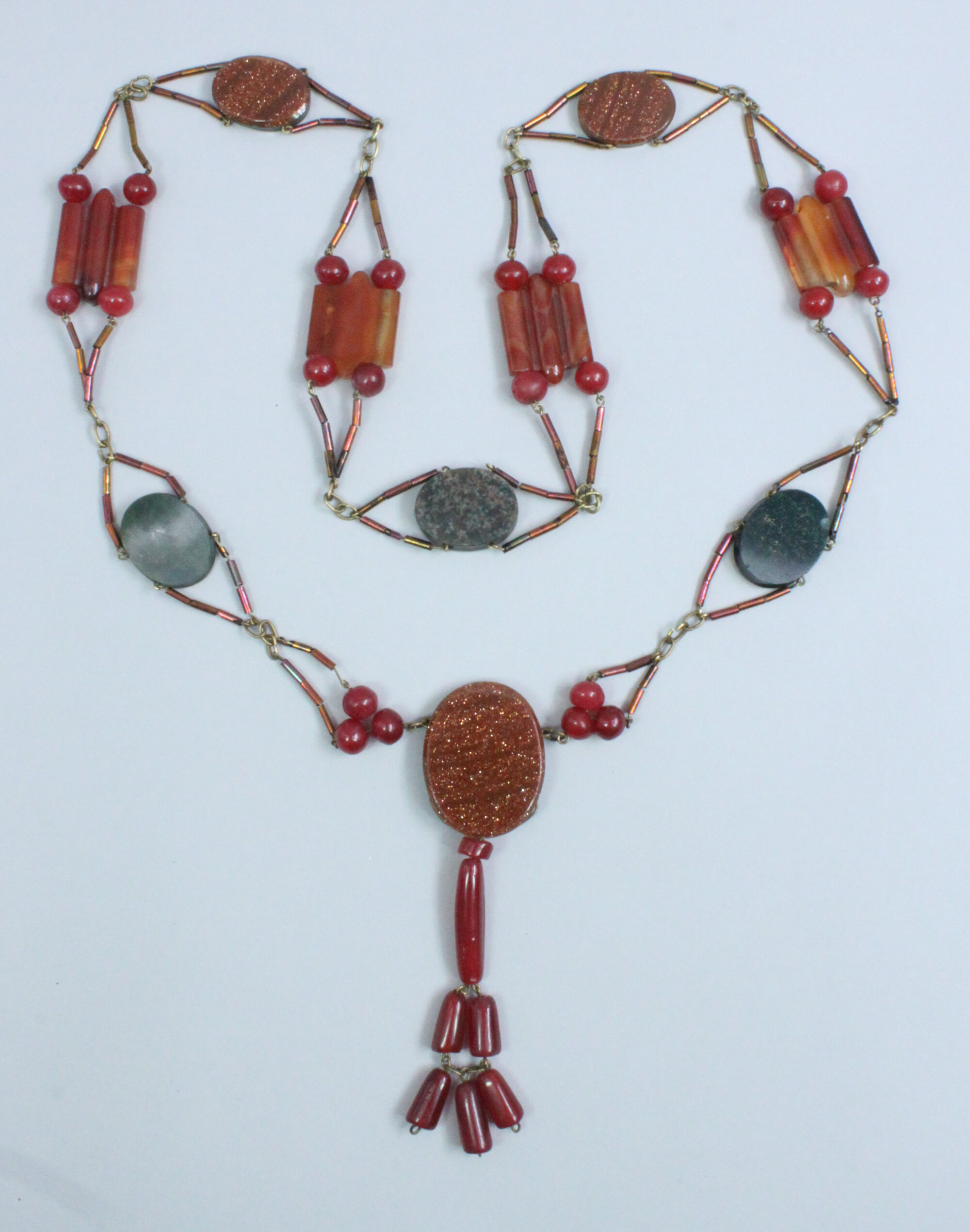
Long Art Deco carnelian, bloodstone and goldstone necklace 1930s
Price: £95Goldstone is a type of glittering glass made in a low-oxygen reducing atmosphere. The finished product can take a smooth polish and be carved into beads, figurines, or other artifacts suitable for semiprecious stone, and in fact goldstone is often mistaken for or misrepresented as a natural material. It was first made in the 17th century in Italy. (Credit: Wikipedia)
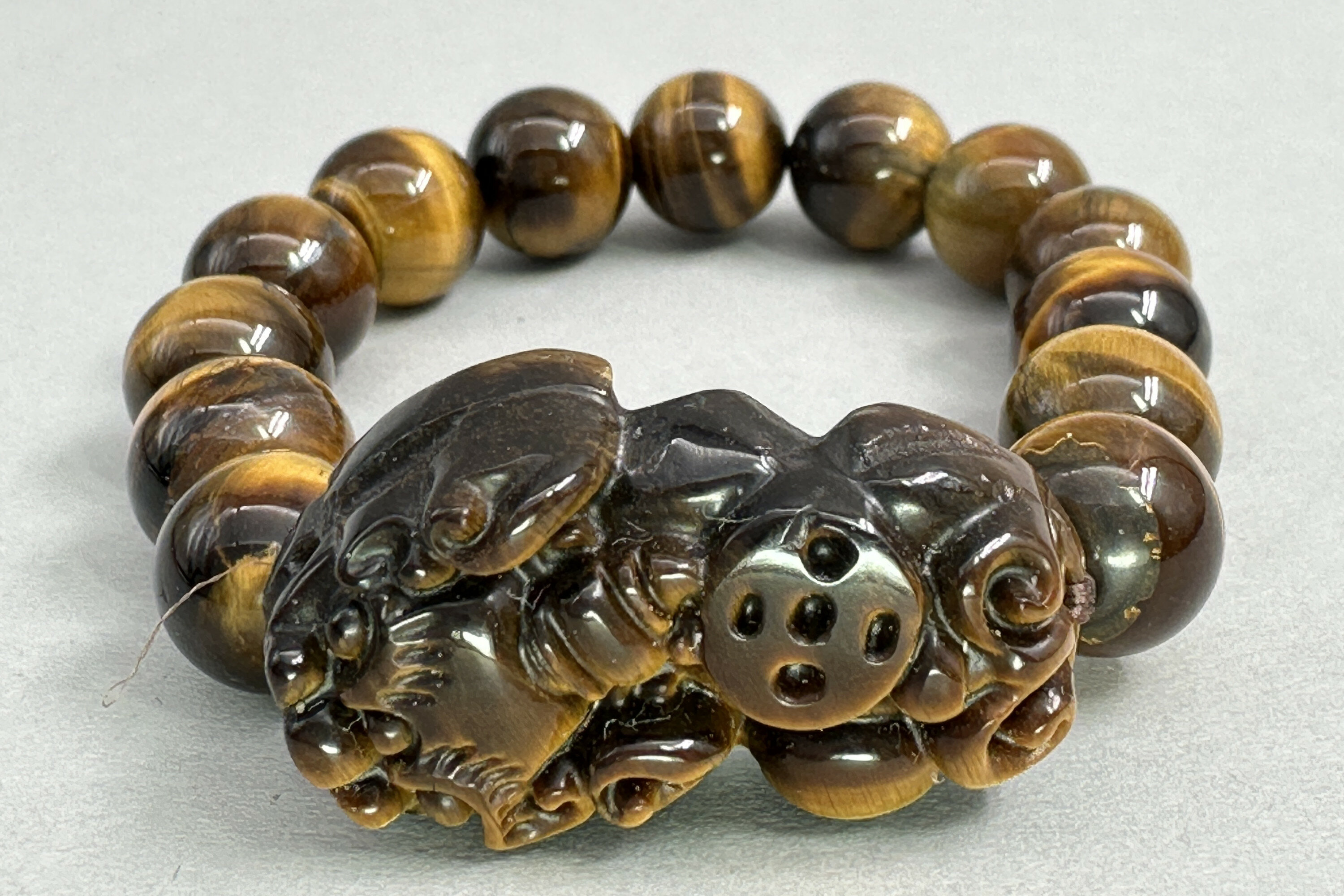
Tigers Eye bracelet with a large central carved dragon bead, certificate for 2012
Price: £15PLEASE NOTE THAT THERE IS FREE UK SHIPPING ON THIS ITEM. For international buyers the shipping cost will be reduced by the UK shipping cost, so don't worry if you are outside the UK, you still receive this benefit!
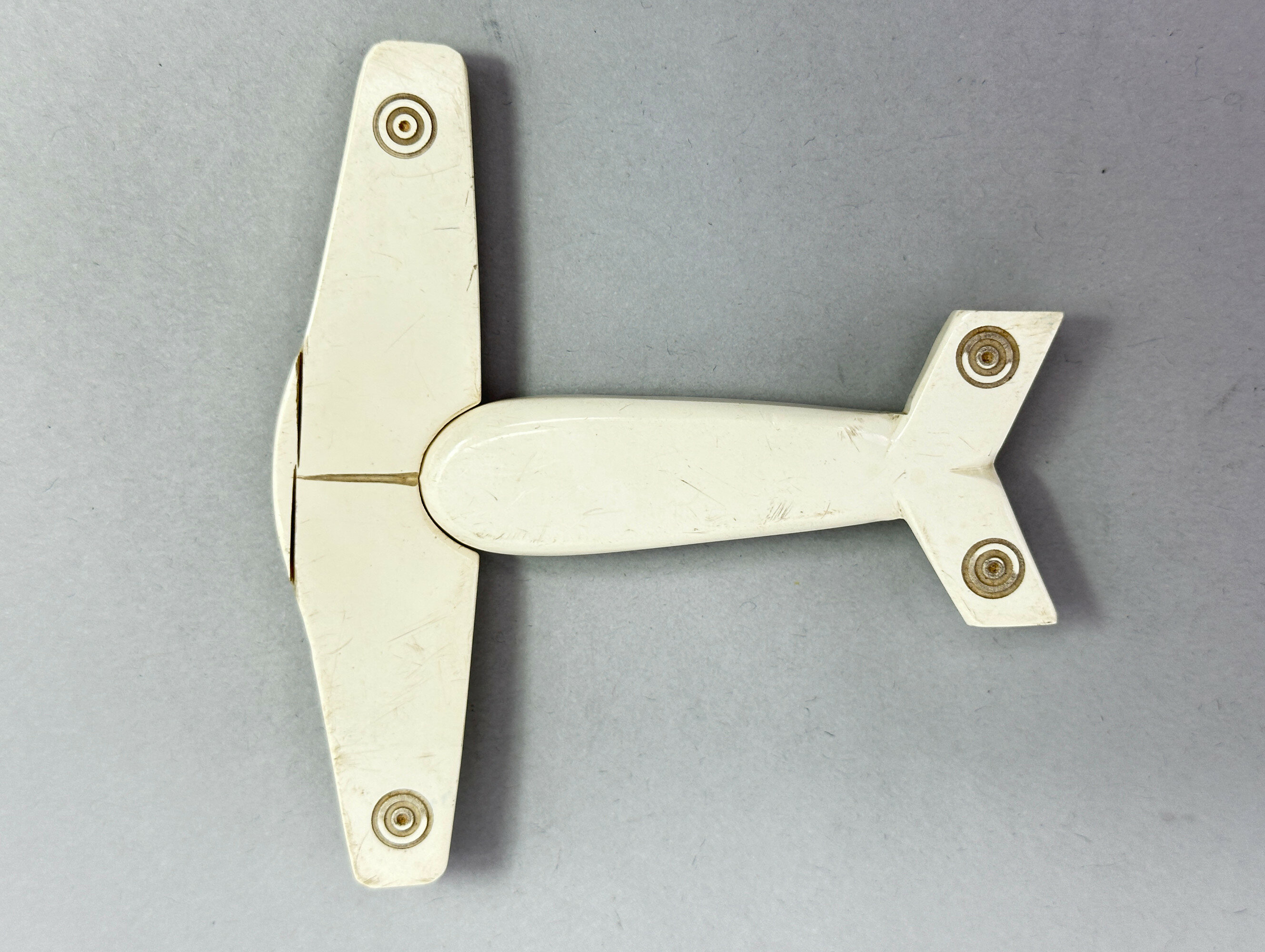
Striking Bakelite buckle in the shape of an airplane, American 1930s
Price: £45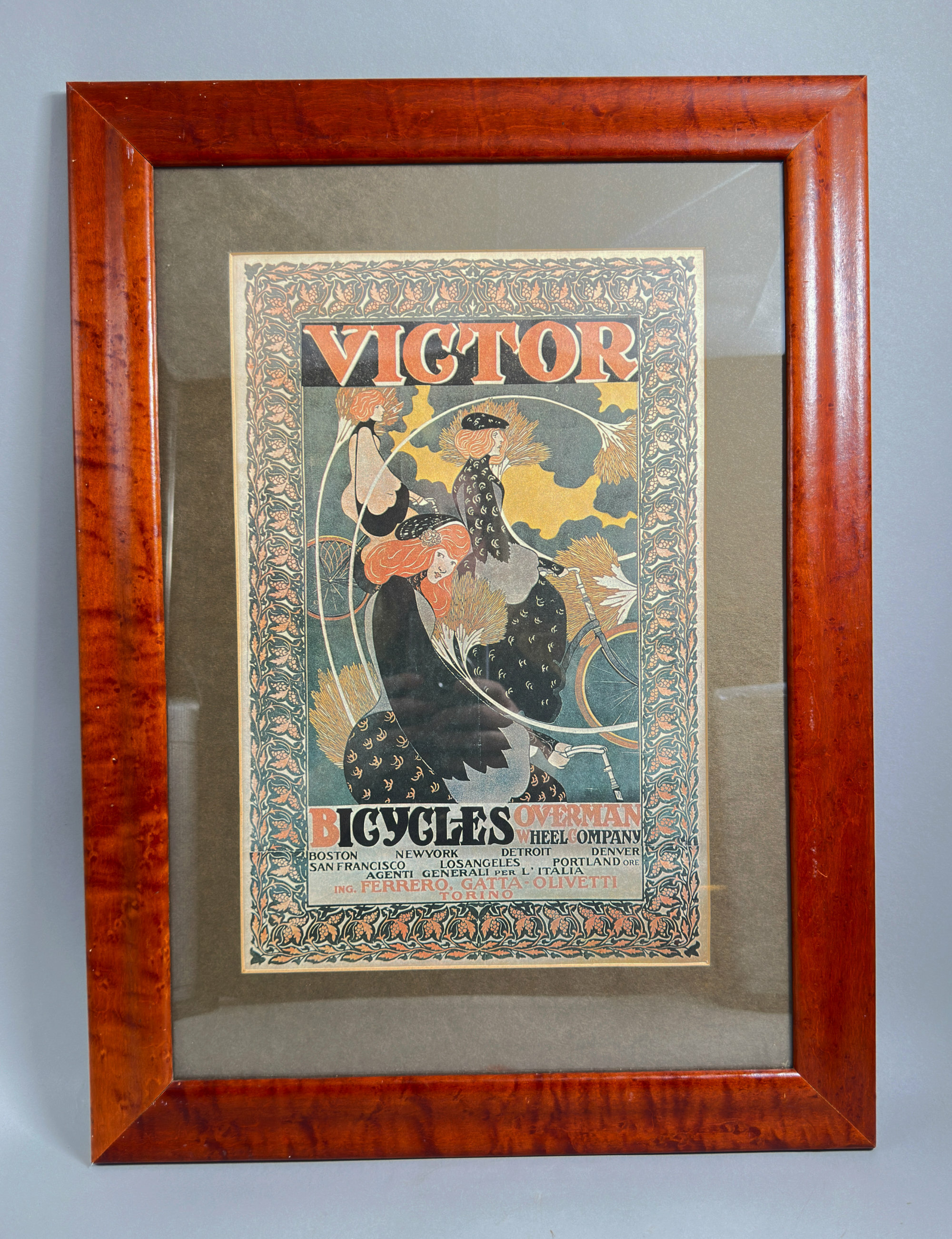
Framed poster for Victor Bicycles, Overman Wheel Company, C20th
Price: £55Will H. Bradley (1868-1962) was an American artist and illustrator whose work enjoyed enormous popularity in the late nineteenth and early twentieth centuries, indeed he became America’s highest paid artist. Some of his most elaborate and original poster and advertisement designs were produced in the last years of the nineteenth century and he was an apt choice for Albert Overman’s then thriving business. His style was quintessentially Art Nouveau and is often compared to that of the English artist, Aubrey Beardsley, indeed he was sometimes dubbed as the ‘American Beardsley'. This poster design for Overman has been much copied and reproduced over the years with original examples residing in museum collections. The dating of this particular printing is not wholly certain; the reproduction is certainly way superior to that of more modern versions and the accompanying frame also indicates some age, perhaps to the 1960s or through to the 1980s. We have, then, both an elegant decorative item and an excellent addition to a collection important poster art.
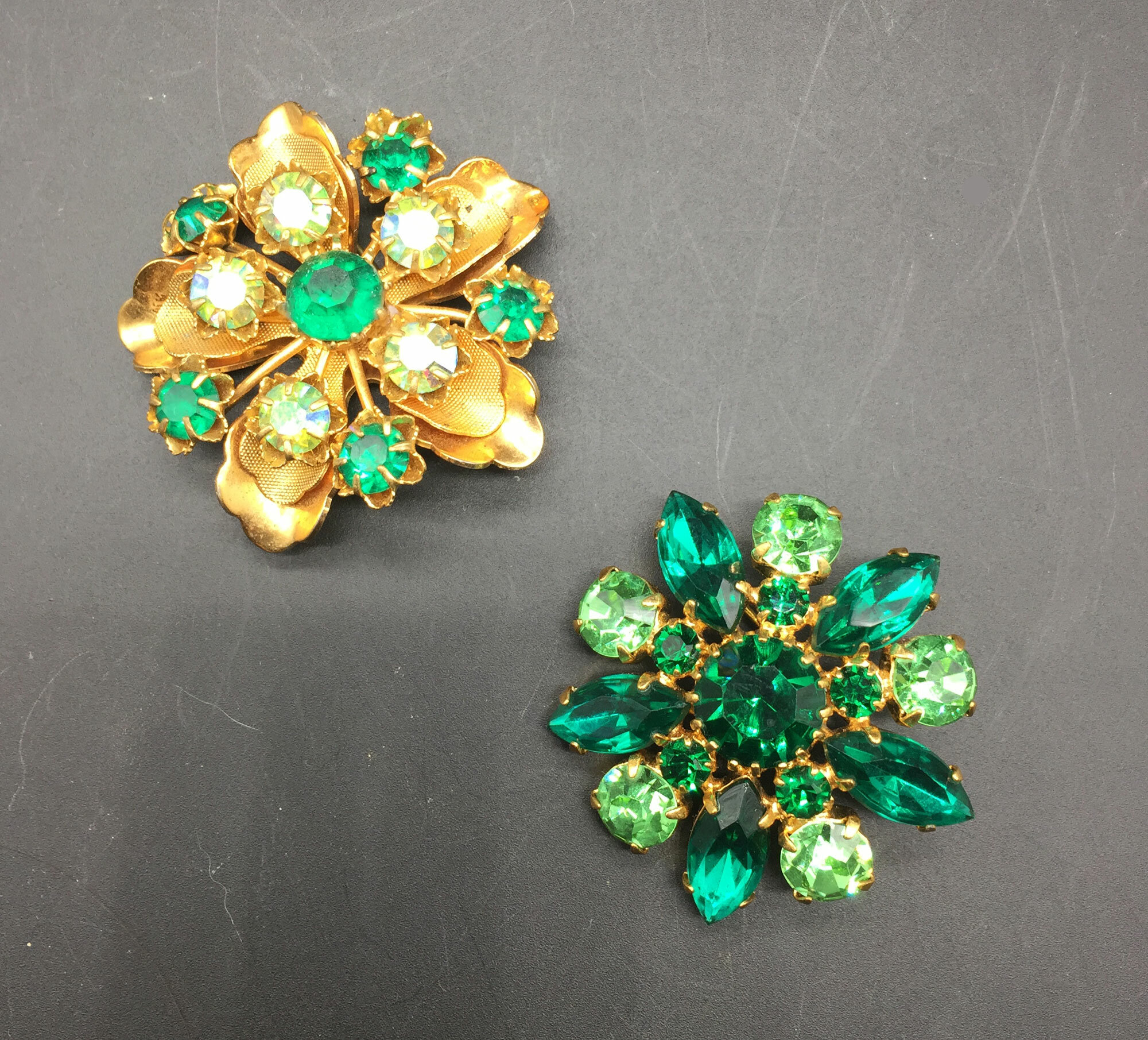
2 1950s floral brooches
Price: £10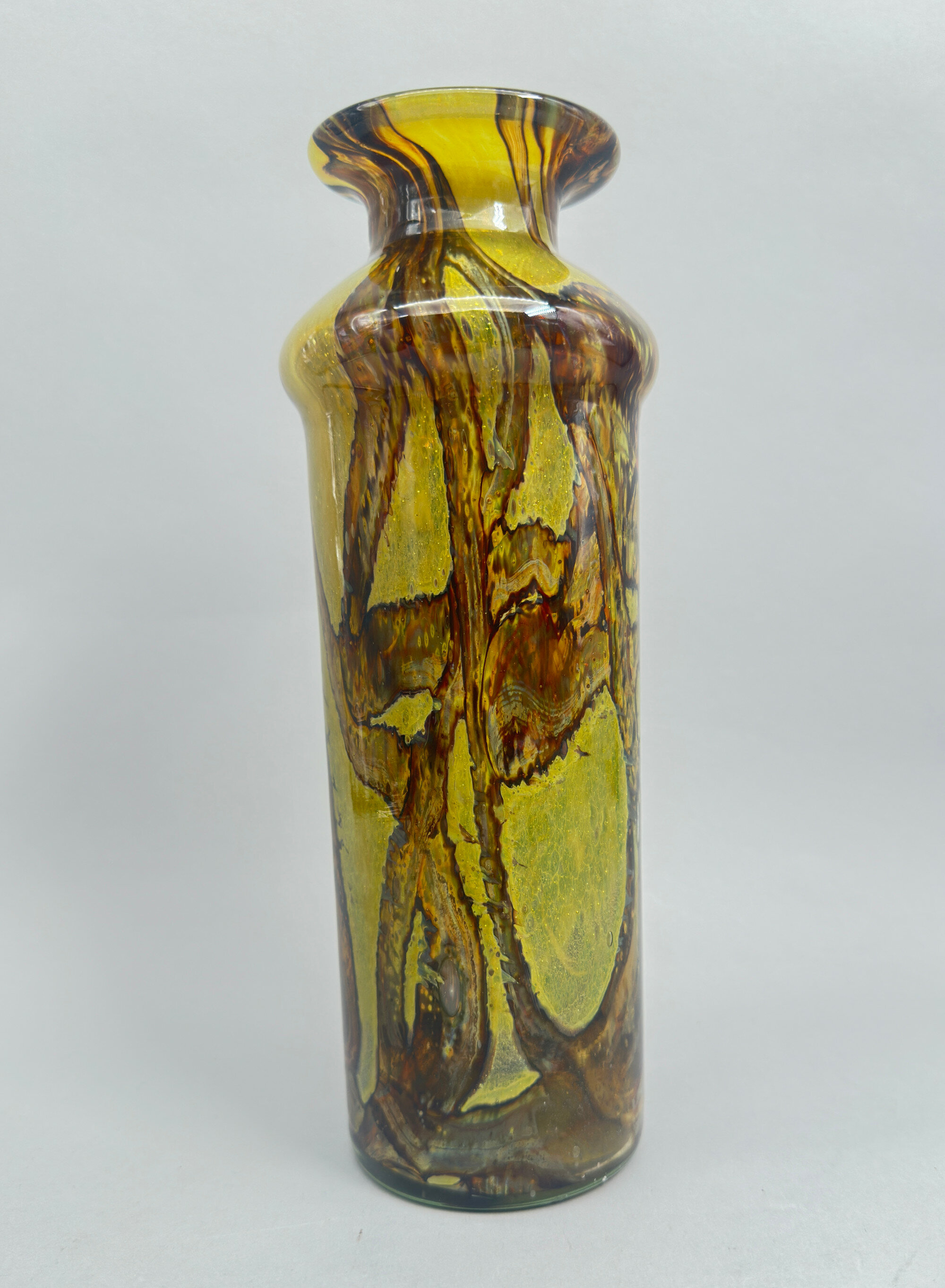
Mdina Earthtones Pattern Vase, late C20th
Price: £85Mdina Glass was founded in the Maltese town of Mdina in 1968 by Michael Harris and Eric Dobson. The town had no history of glass making but the venture proved to be a success. Its wares, free formed organic glassware, often in colours inspired from the sea, sand, earth and sky, proved very popular with tourists visiting Malta. Michael Harris left Mdina in 1972 and formed a new company, Isle of Wight Studio Glass, on the Isle of Wight, UK, leaving Eric Dobson in charge, but many of the designs he created continued to be made at Mdina Glass after his departure although new designs and patterns were added as well of which this vase is an example. Ownership of the company later changed but it is still producing a popular range of glasswares today.
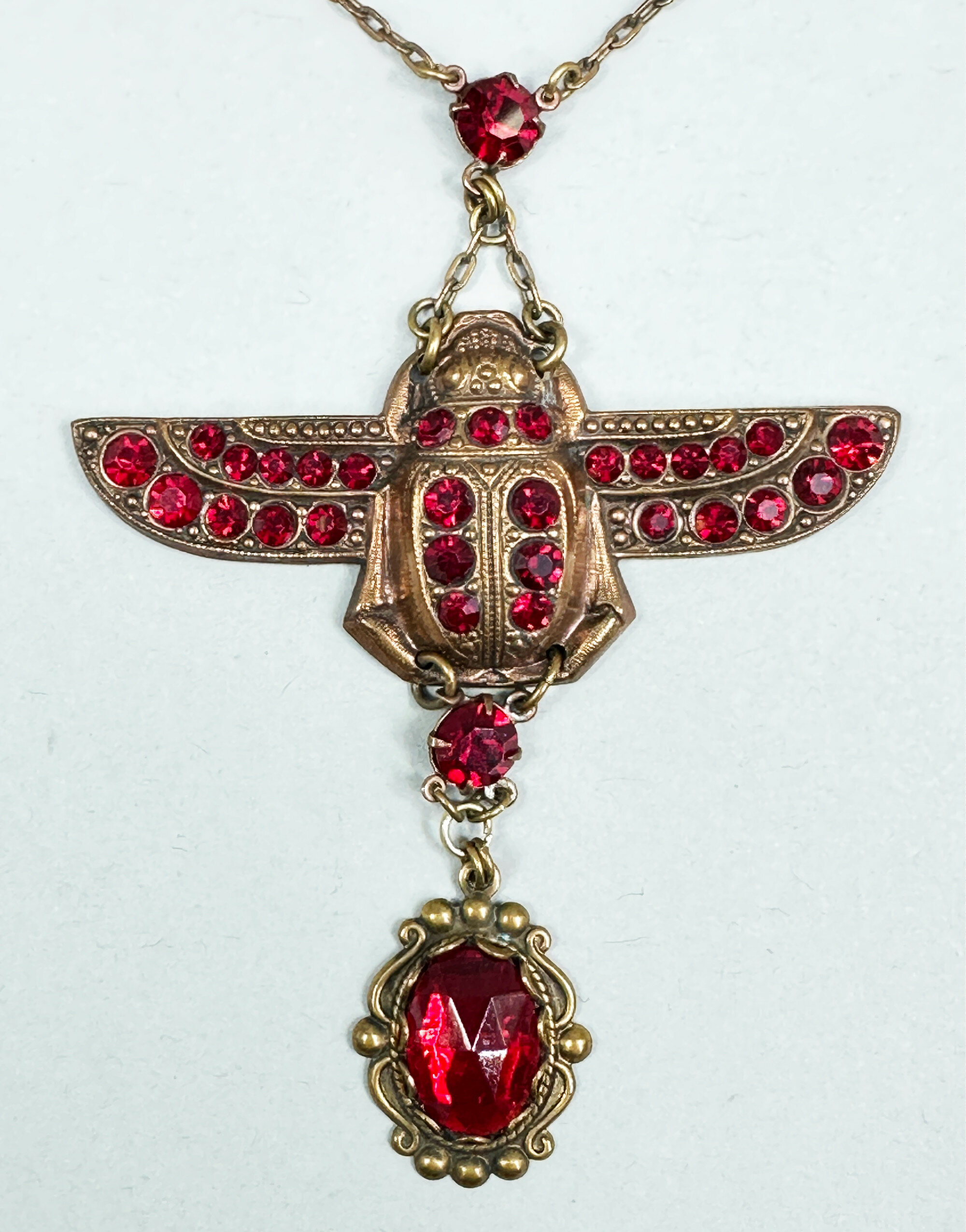
Early Egyptian Revival necklace c1900
Price: £65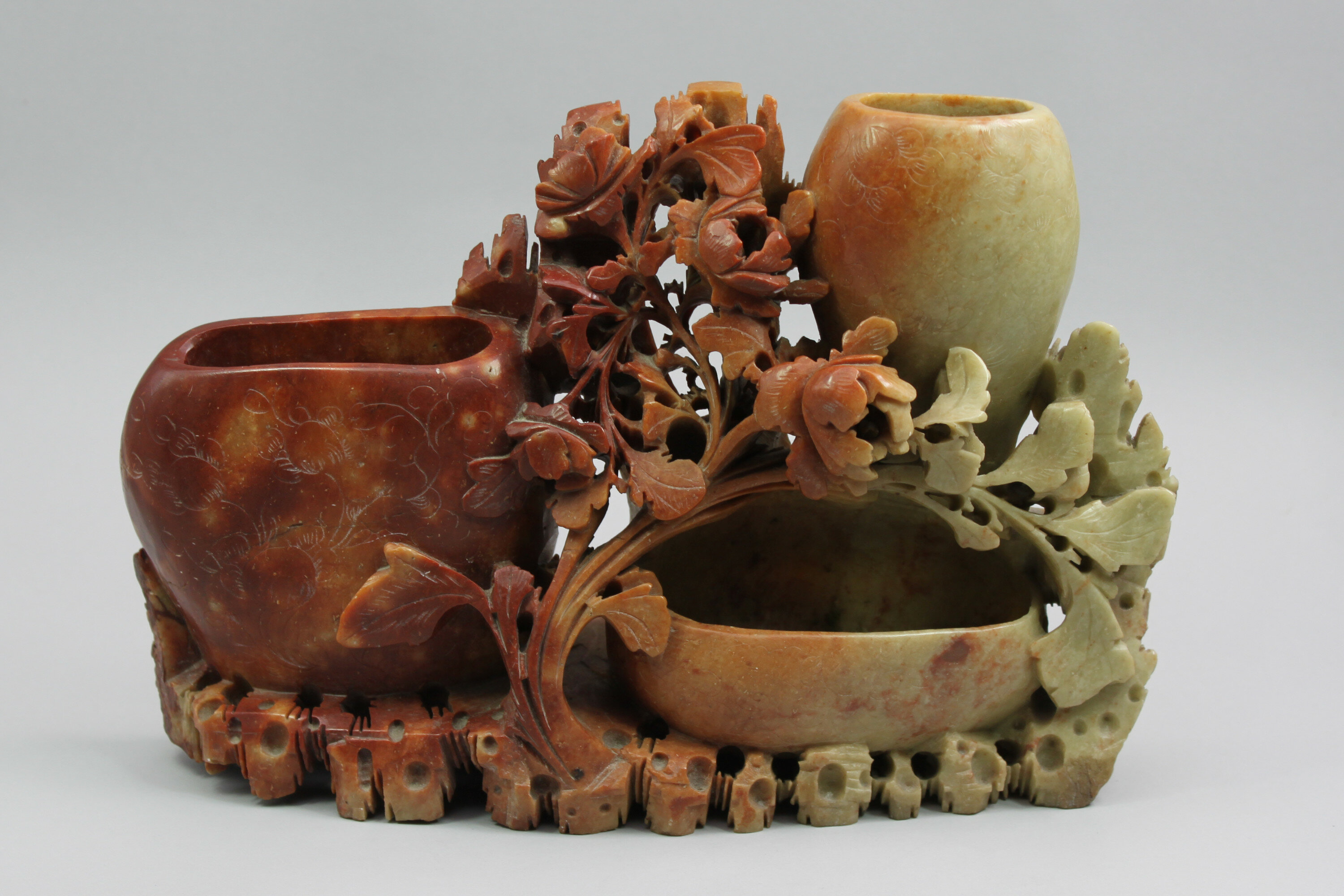
Chinese Soapstone Brushwasher decorated with flowering Lotus, early 20th Century
Price: £45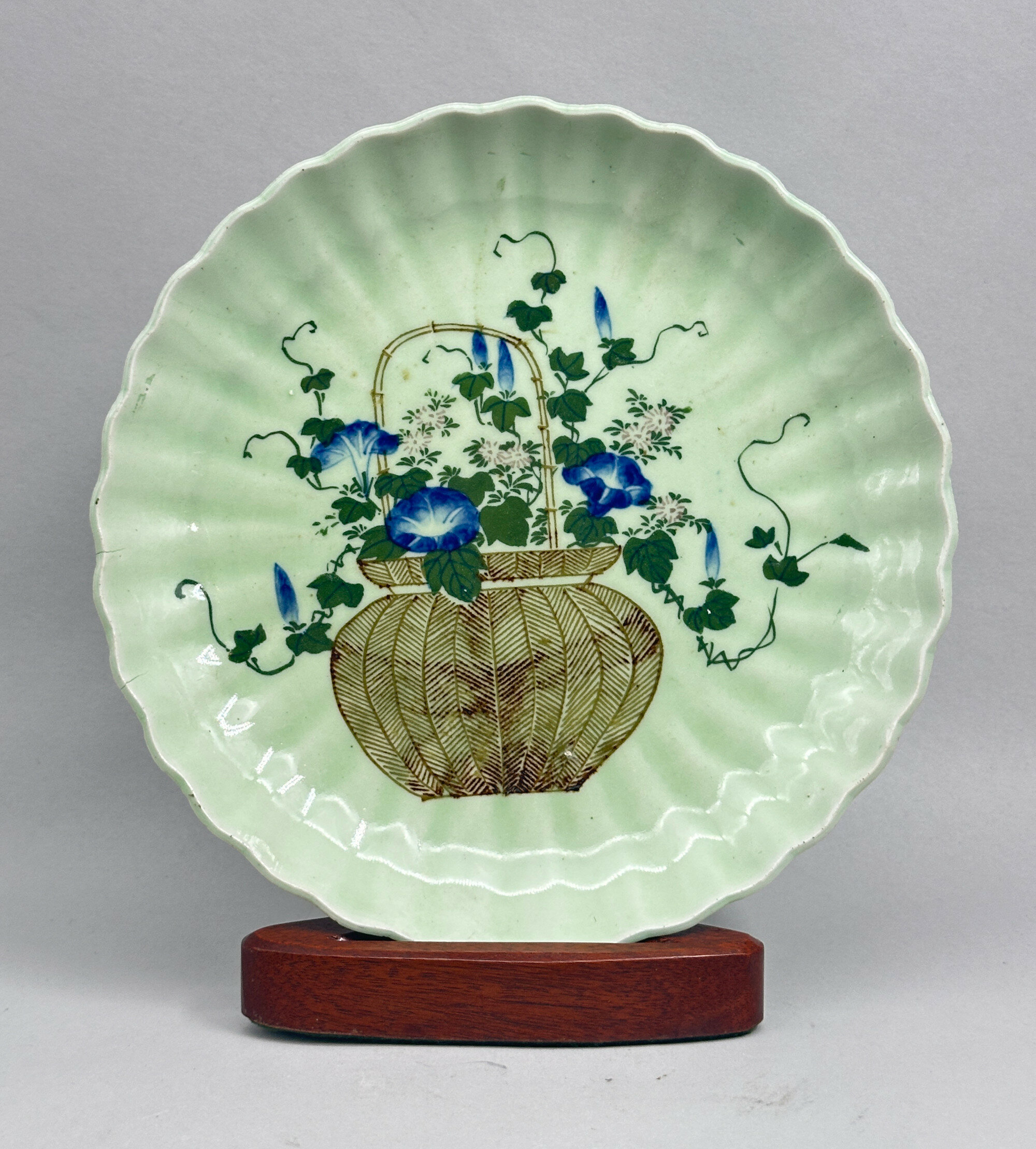
Japanese Celadon Dish decorated basket of flowers, circa 1900
Price: £45Celadon glazed wares with enamel decoration in fairly muted colours are a familiar product amongst the ceramics produced by Japanese potters at the end of the nineteenth century but examples of this type of dish are rather less commonly found. The basket of flowers is a regular decorative feature of Chinese ceramics, but given here a slightly different interpretation with the depiction of lotus, the emblem of summer. The mark probably imitates Chinese ‘commendation’ marks inscribed within the foot rim, another nod on the part of the Japanese potters towards their Chinese counterparts.
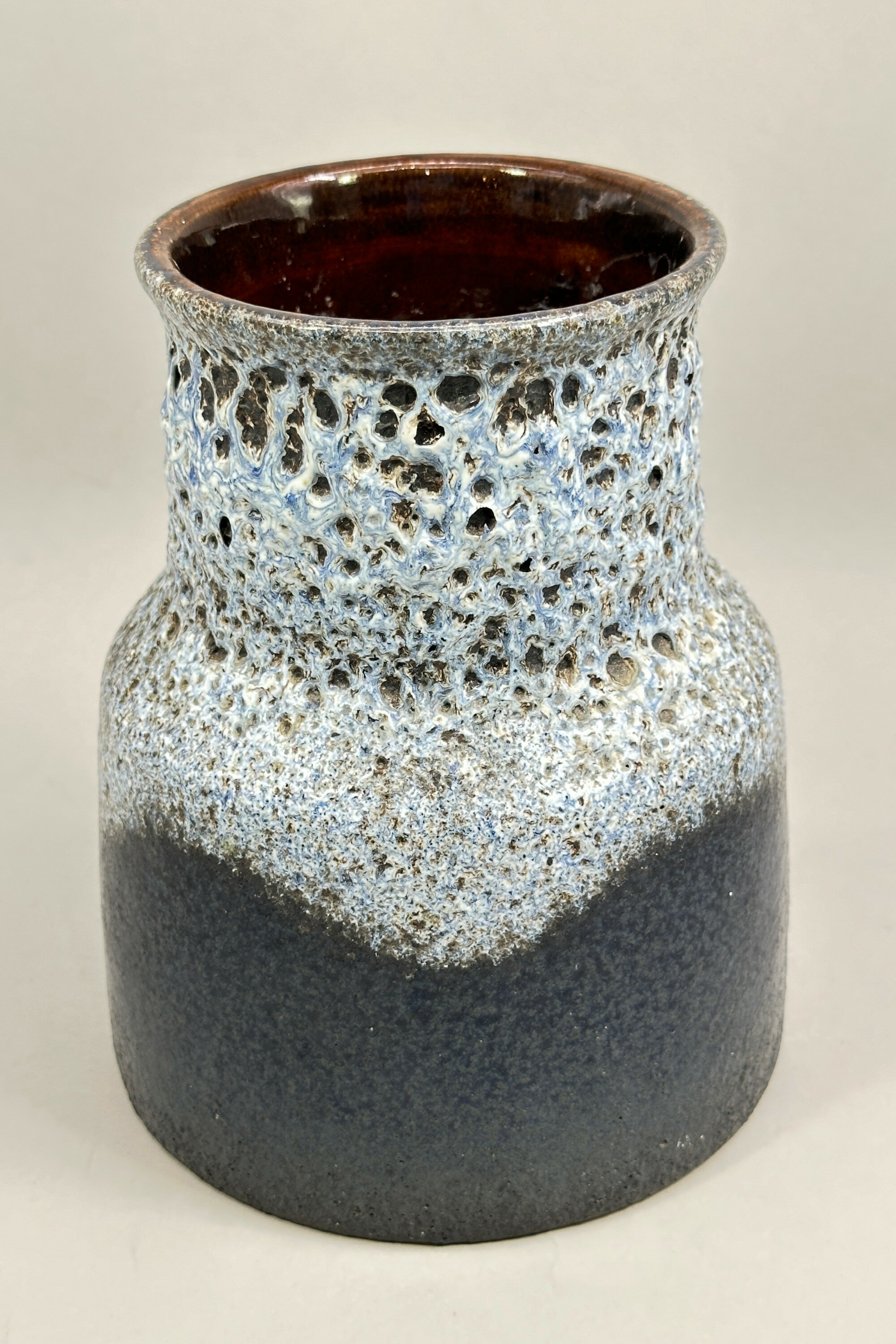
West German Pottery Lava Glaze Vase, Scheurich, 1960s
Price: £45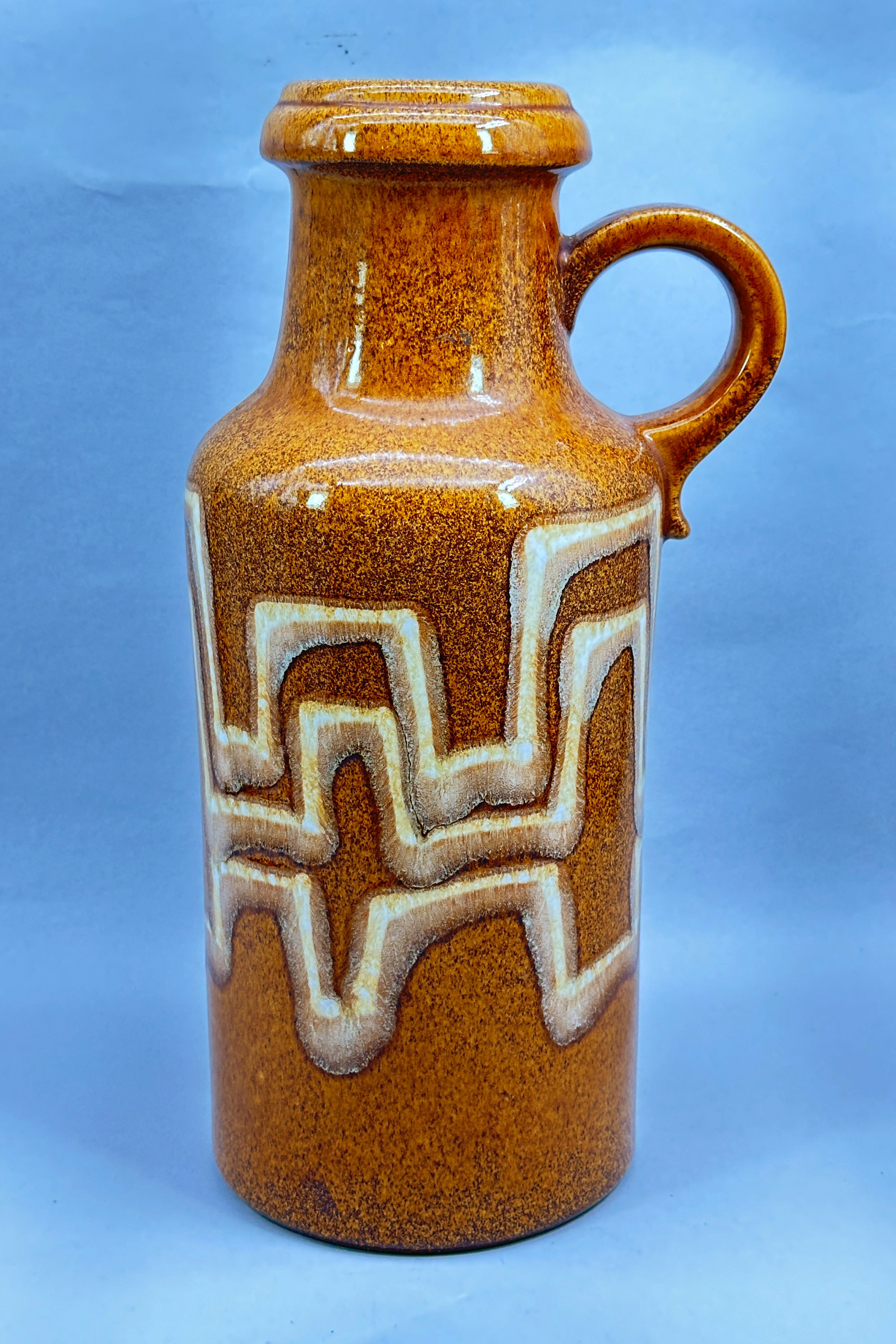
Scheurich West German Vase in Brutalist Style, late C20th
Price: £55Although not marked with their name (few pieces were until the later years of production) this vase has all the hallmarks of the Scheurich factory founded in 1954 by Alois Scheurich who had been a partner before then in the firm ‘Scheurich and Greulich’ (S&G) since 1927. While founded later than many of its competitors, Scheurich grew to become the principal exporter of West German ceramics through until the 1980s and beyond, making vases in a wide variety of shapes and designs. This piece is rather more austere than many of their productions and the clean lines of the form combined with the rather stark decoration perhaps make it particularly suitable for a contemporary interior.
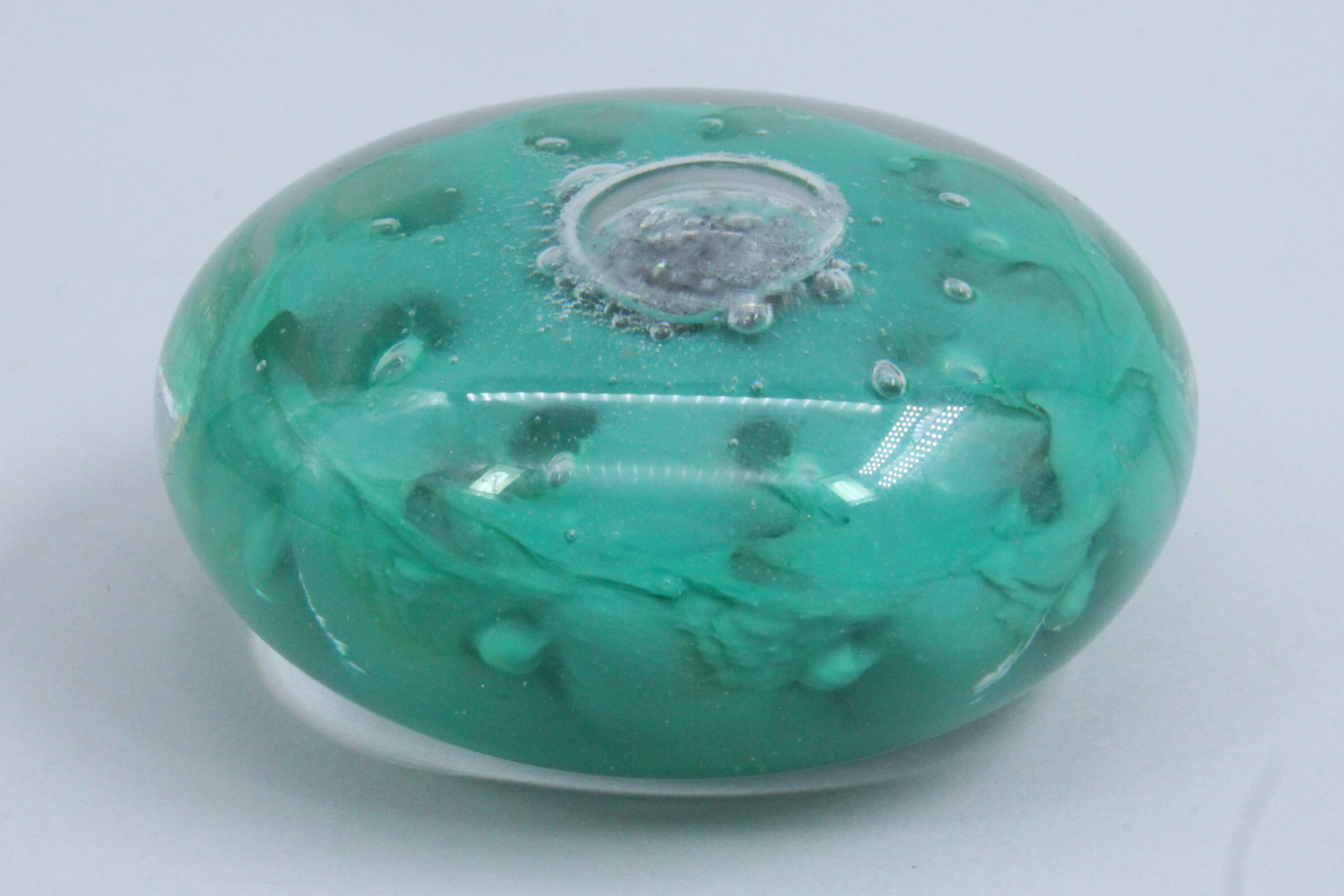
A green glass paperweight, Tweedsmuir Glass, Chris Dodds, late C20th
Price: £25It is sold with a matching contemporary illuminated stand which enhance the decorative effect considerably and provides a modest light display installation for the home (see image 6).
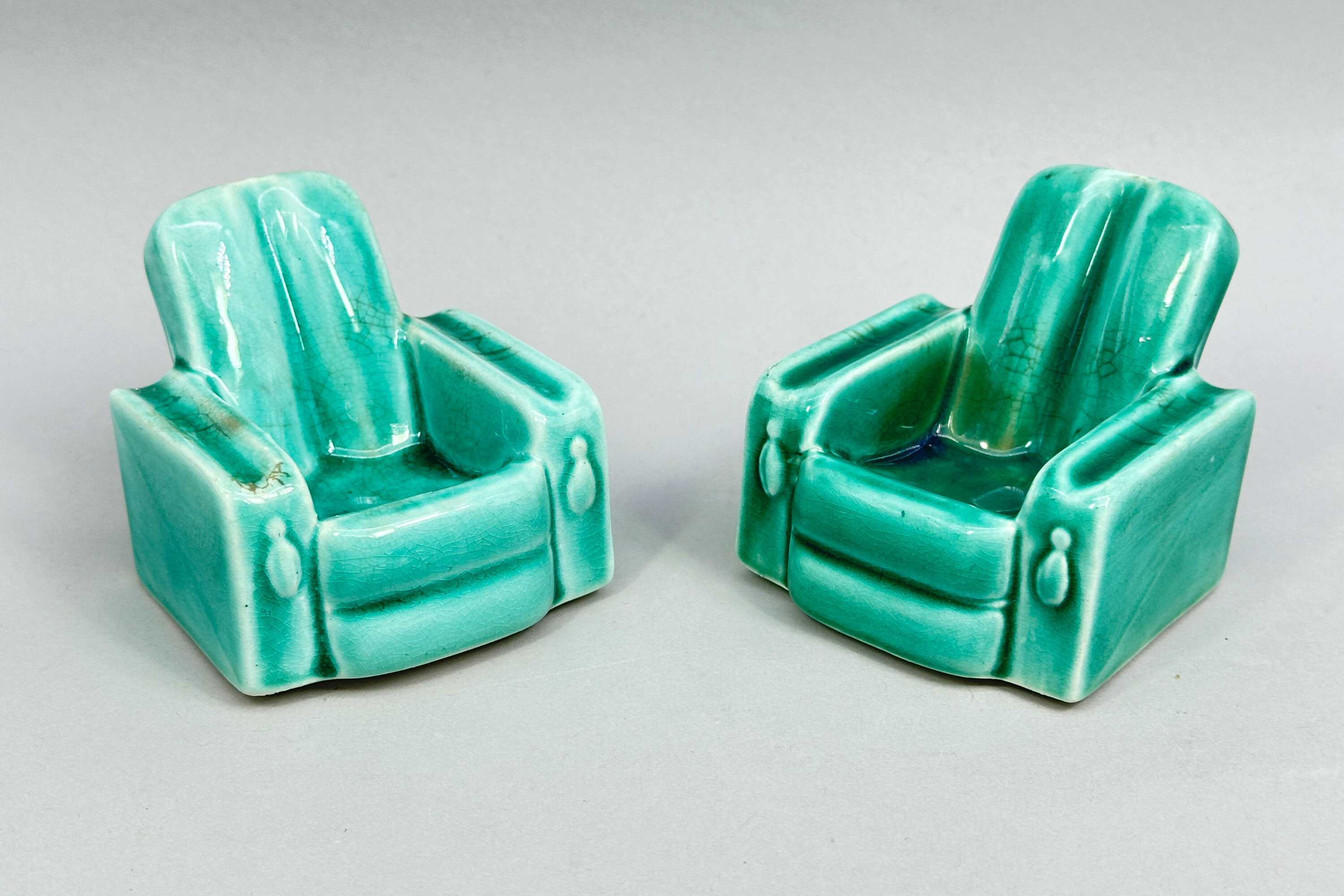
Pair of Vintage Art Deco style armchair Pipe Rests, English c1930
Price: £55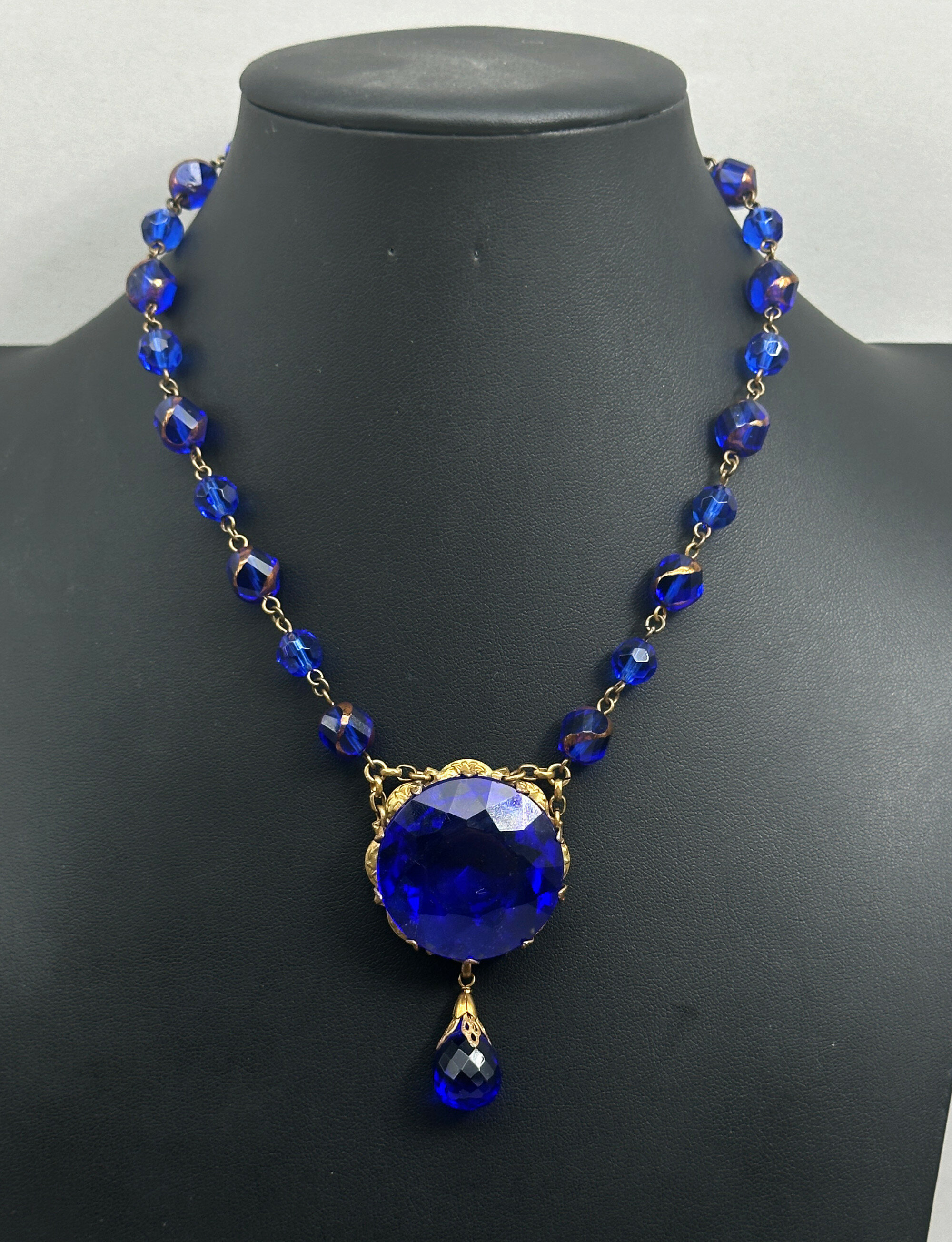
Art Deco necklace with blue paste stones 1930s
Price: £75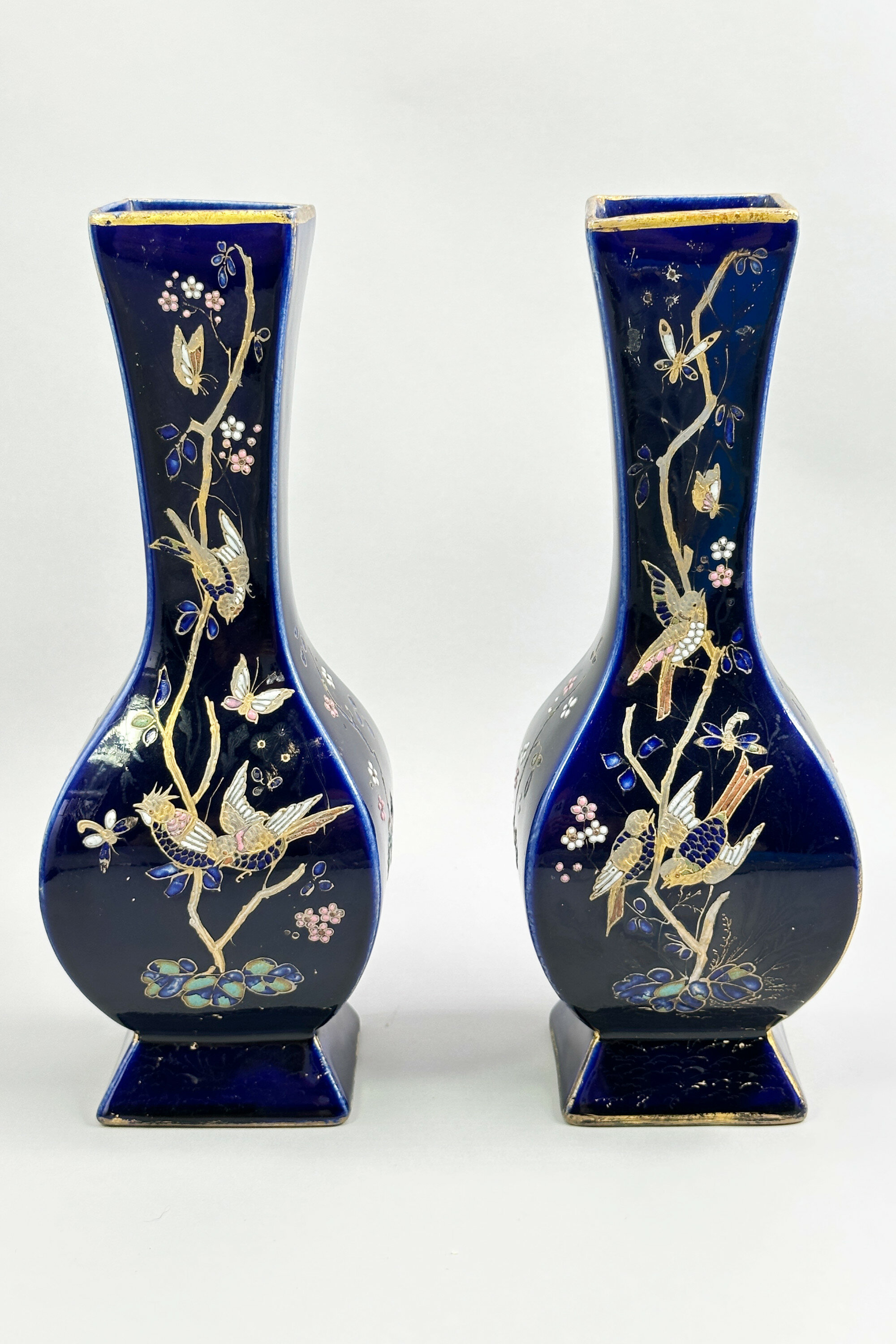
Pair of French Blue Ground Square Vases Choisy Le Roi, late C19th
Price: £45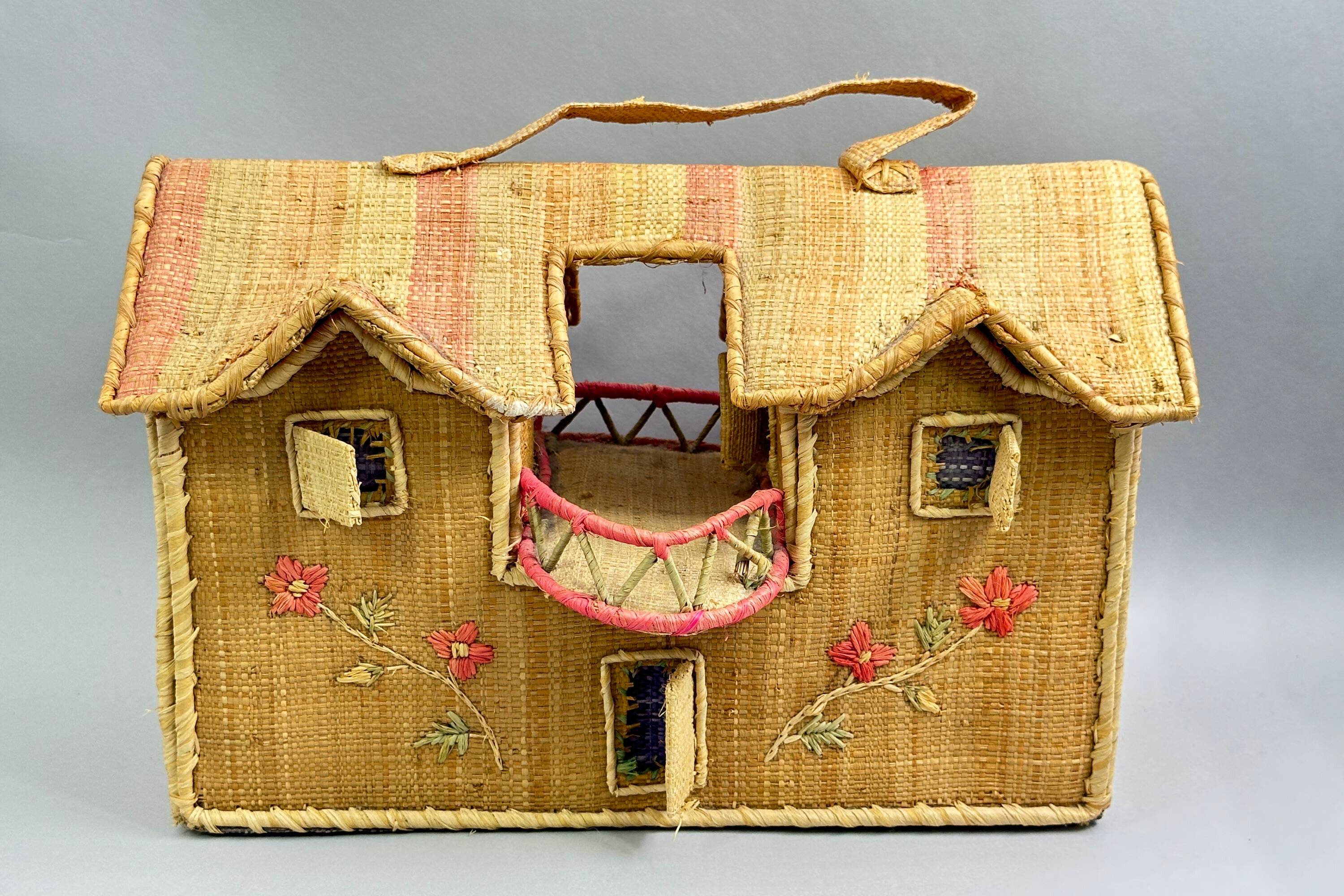
Charming Novelty handbag, Thailand 1950s
Price: £45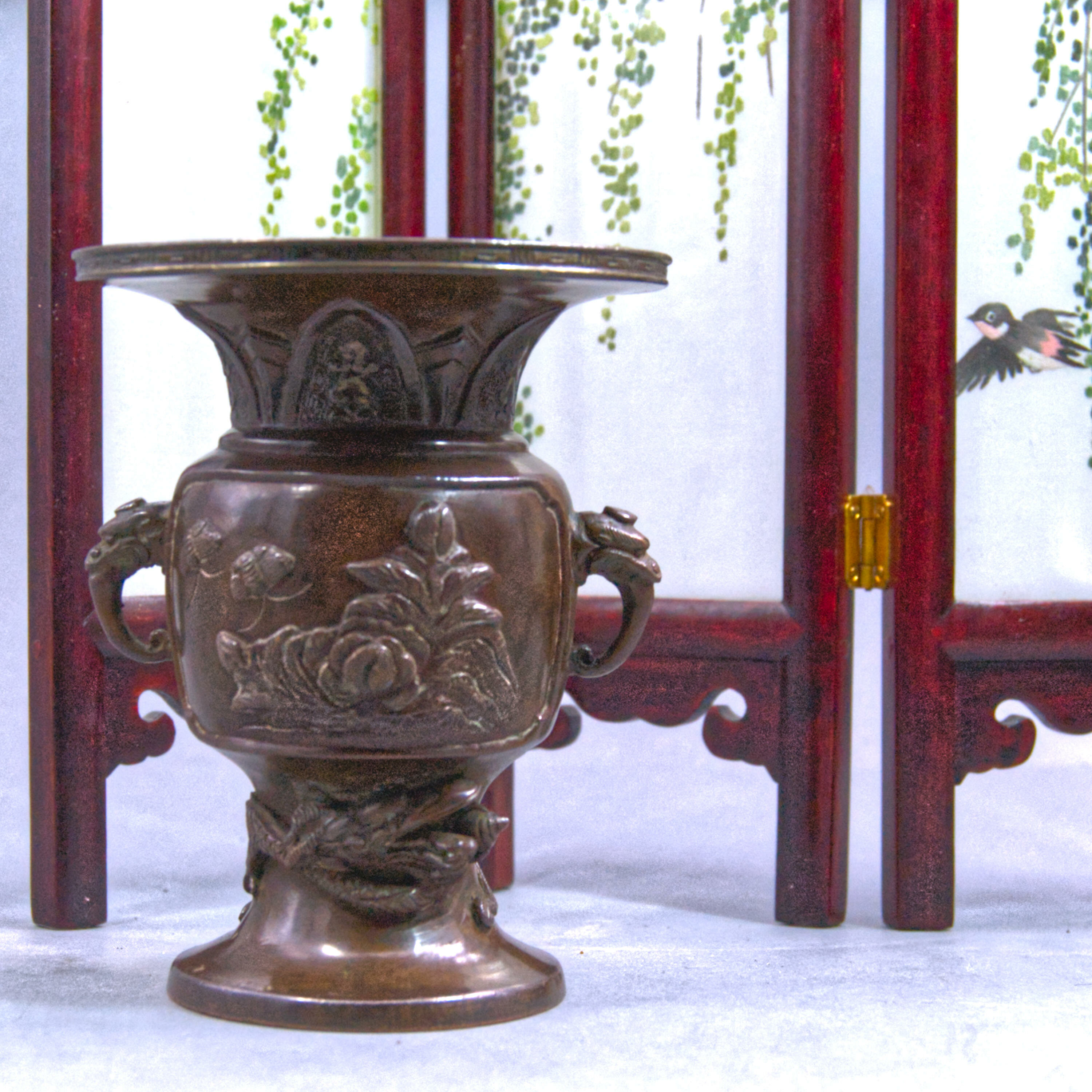
Small Chinese Bronze Vase of Ku Form with Elephant Head Handles, Qing Dynasty circa 1800
Price: £75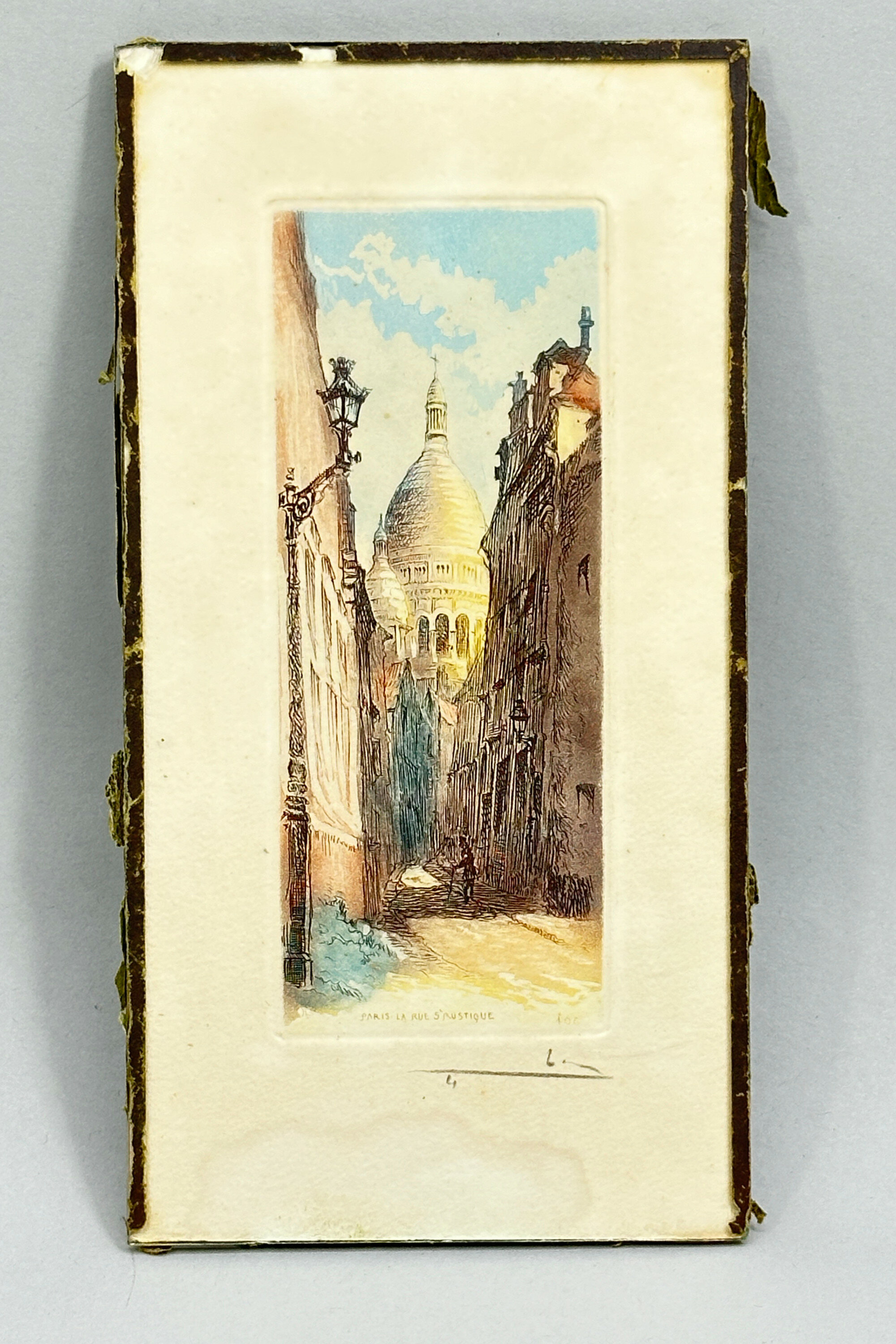
French Orientalist etching aquatint - Paris La Rue Saint Rustique
Price: £35
Outstanding Suede Lanvin Clutch in original box 1950s
Price: £250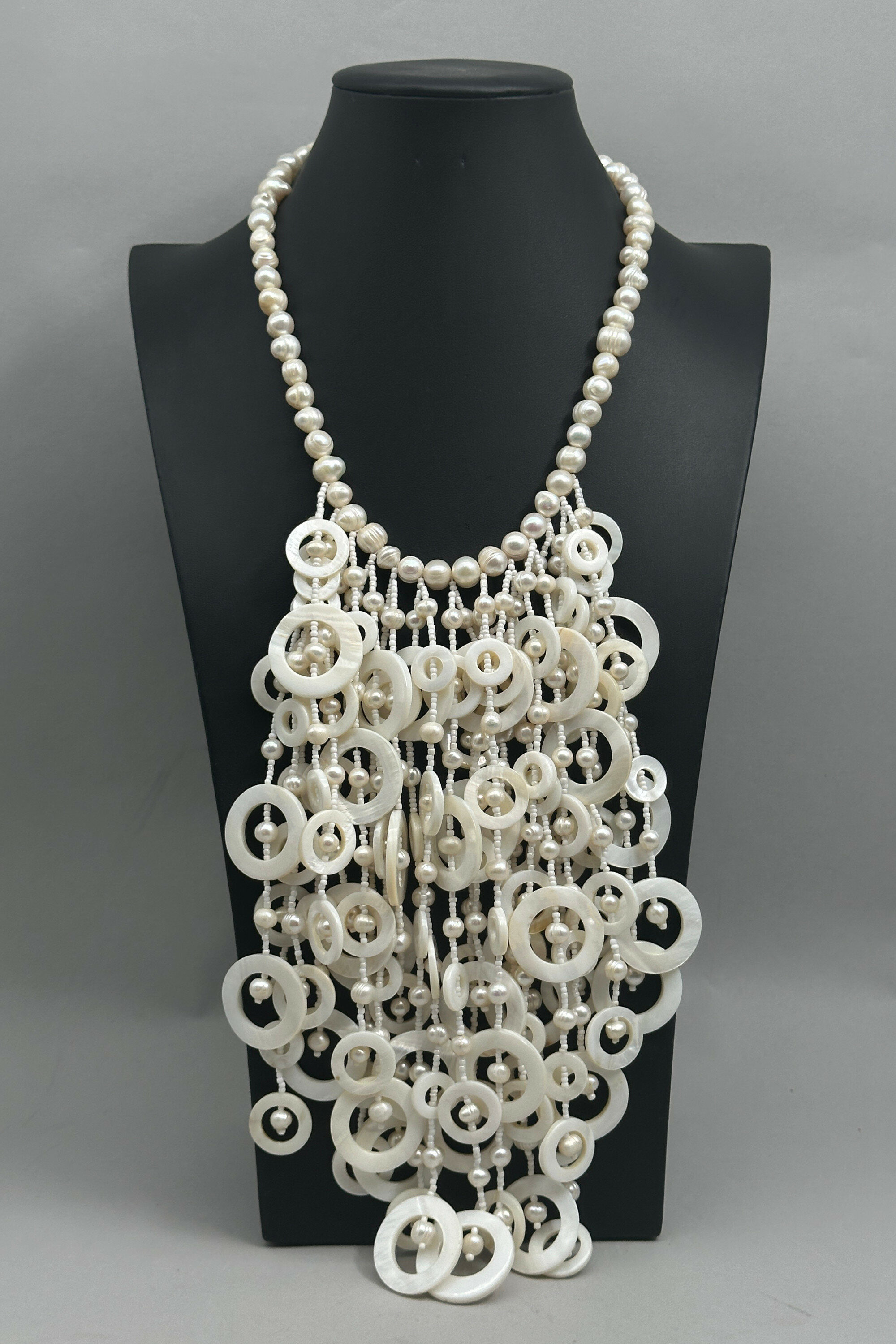
Massive pearl and mother of pearl necklace and earrings 1970s
Price: £95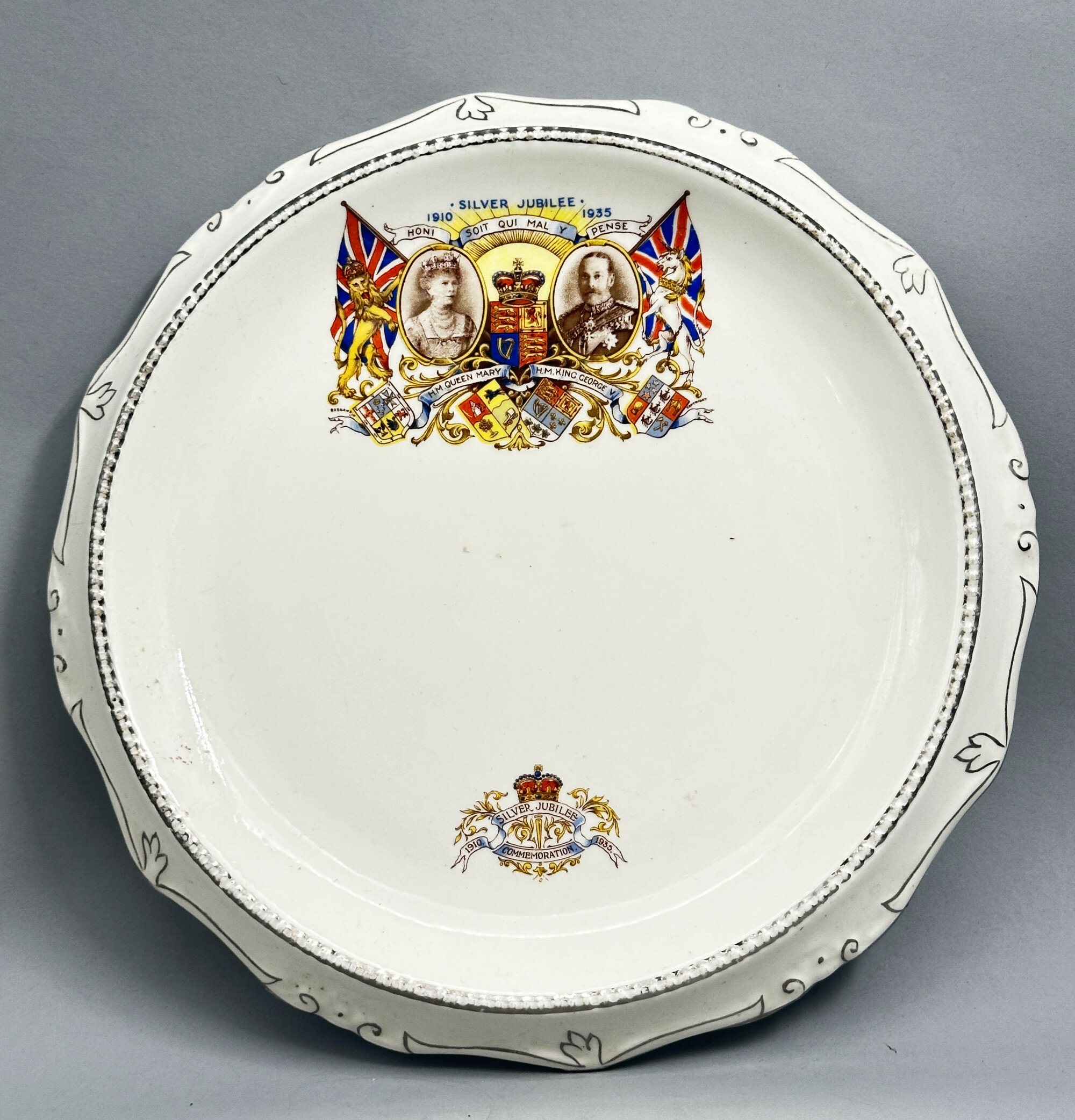
Commemorative Ware Silver Jubilee Plate, James Kent Ltd, England, 1935
Price: £35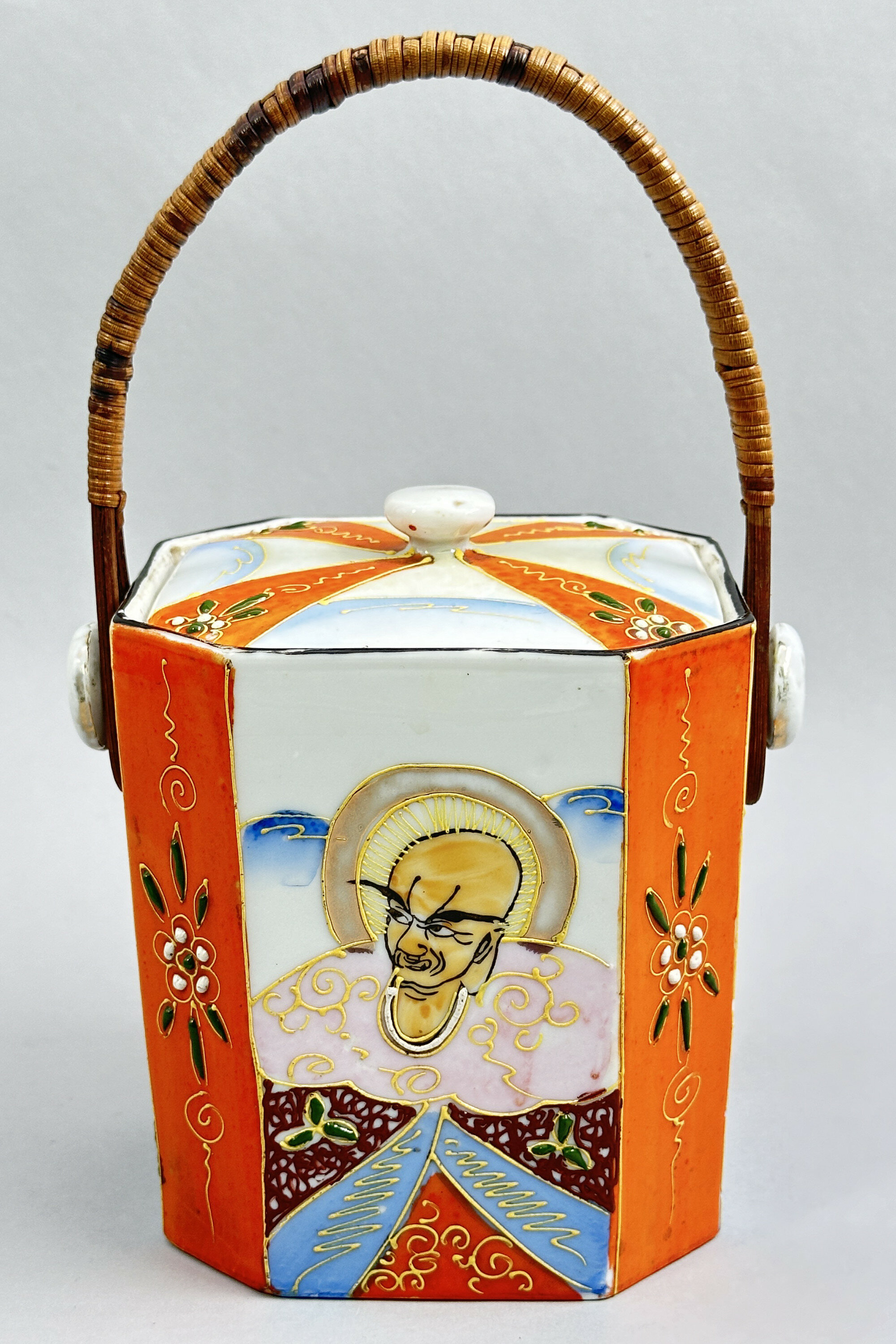
Japanese Samurai China Biscuit Box and Cover, C20th
Price: £25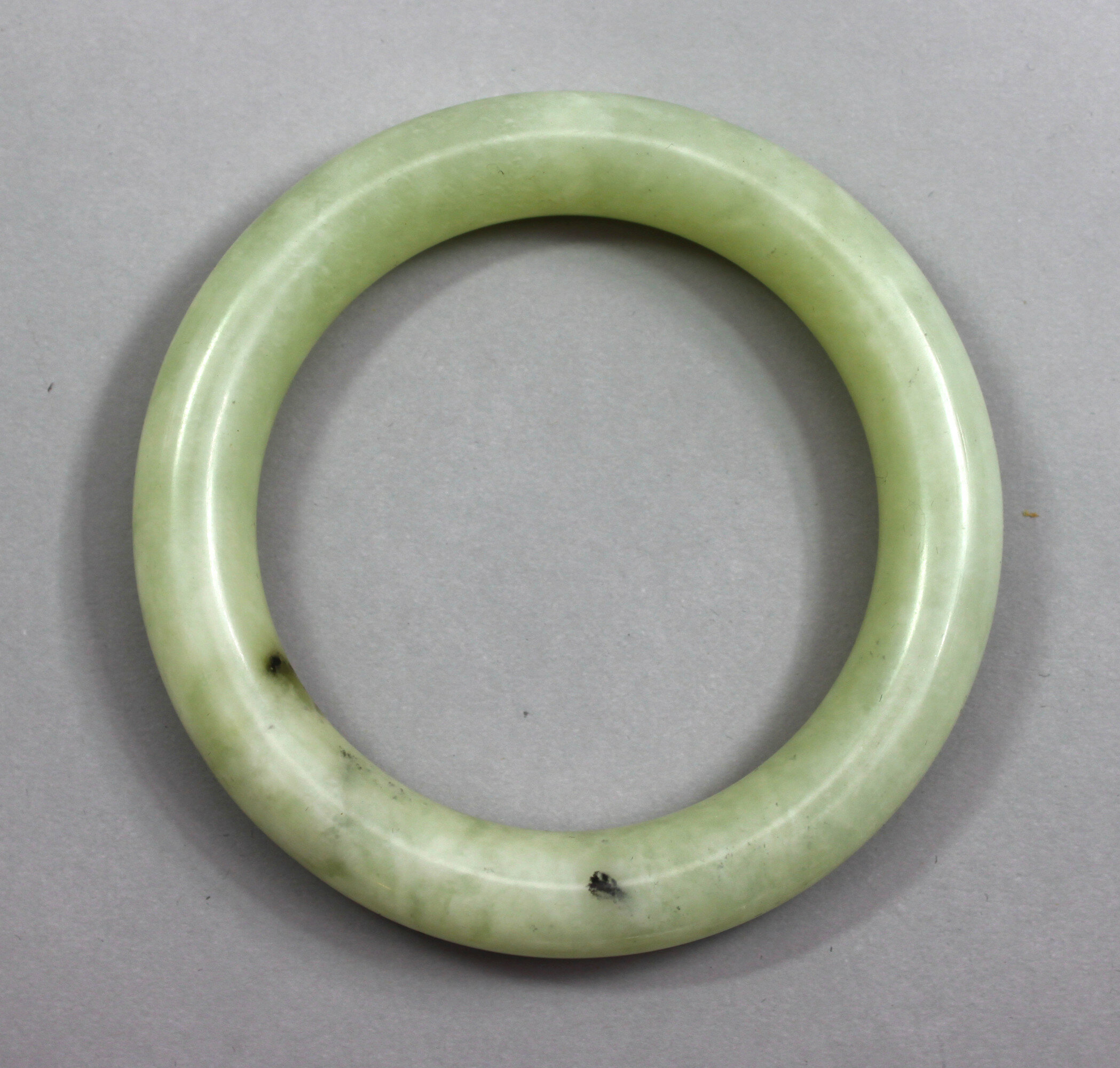
Chinese Pale Celadon Jade Bangle, probably Nineteenth Century
Price: £45Jade is usually divided into two types, nephrite jade and jadeite jade. The latter is heavier and slightly harder, making it more difficult to scratch. The weight of this piece suggests that we do have jadeite here. The stone was selected for carving on the basis of its attractive appearance and the finish, which bears no trace of machine tooled manufacture, suggests a pre twentieth century dating, but certainty in these matters is notoriously difficult
The size of this piece is unusually large, suggesting that it would have been intended for a male wearer. This too suggests an earlier rather than later time of manufacture. The stone is exceptionally pleasant to the hand and would have been an elegant accompaniment to any wardrobe.
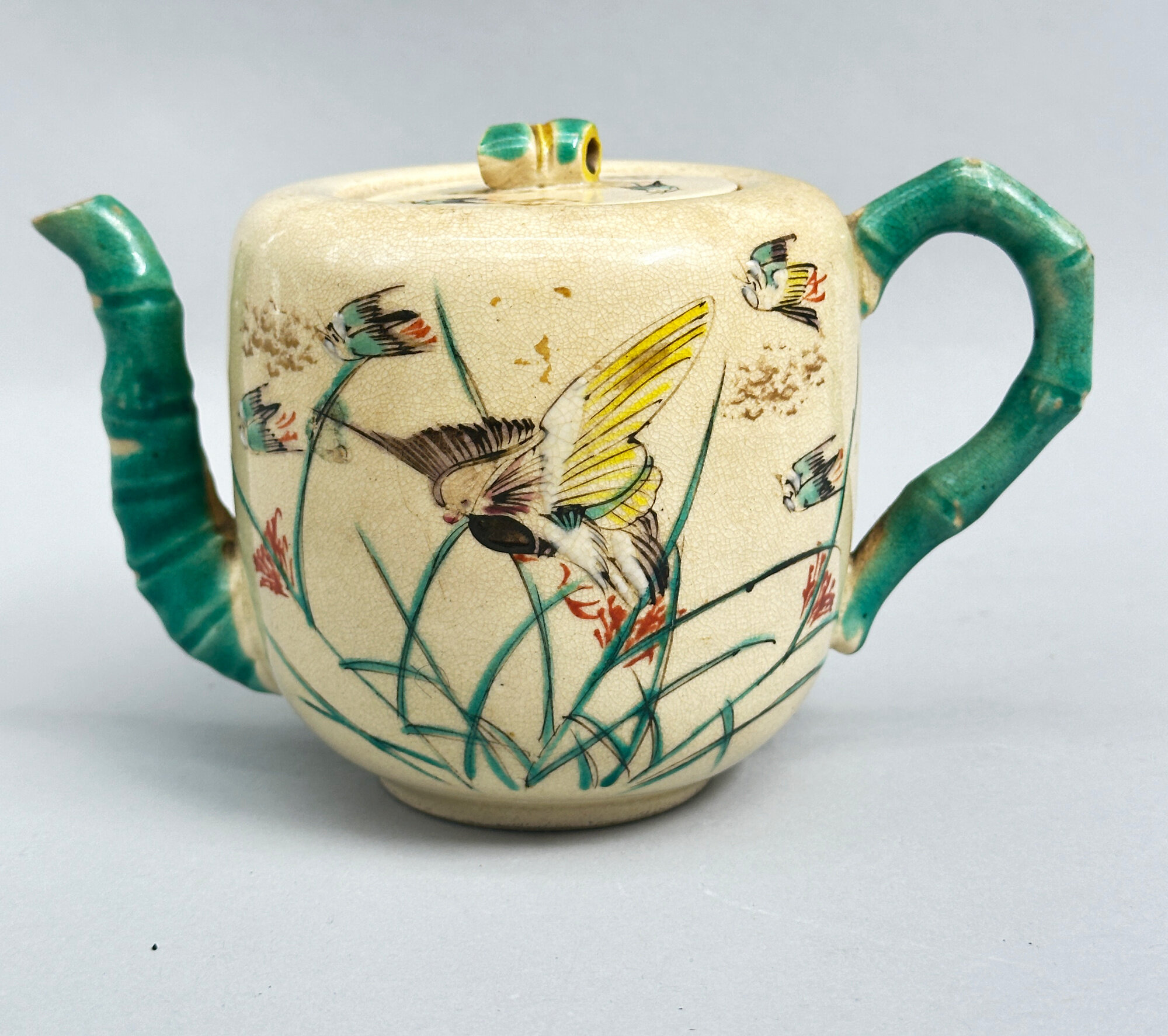
Japanese Awata ware Teapot and Cover, signed, circa 1900
Price: £25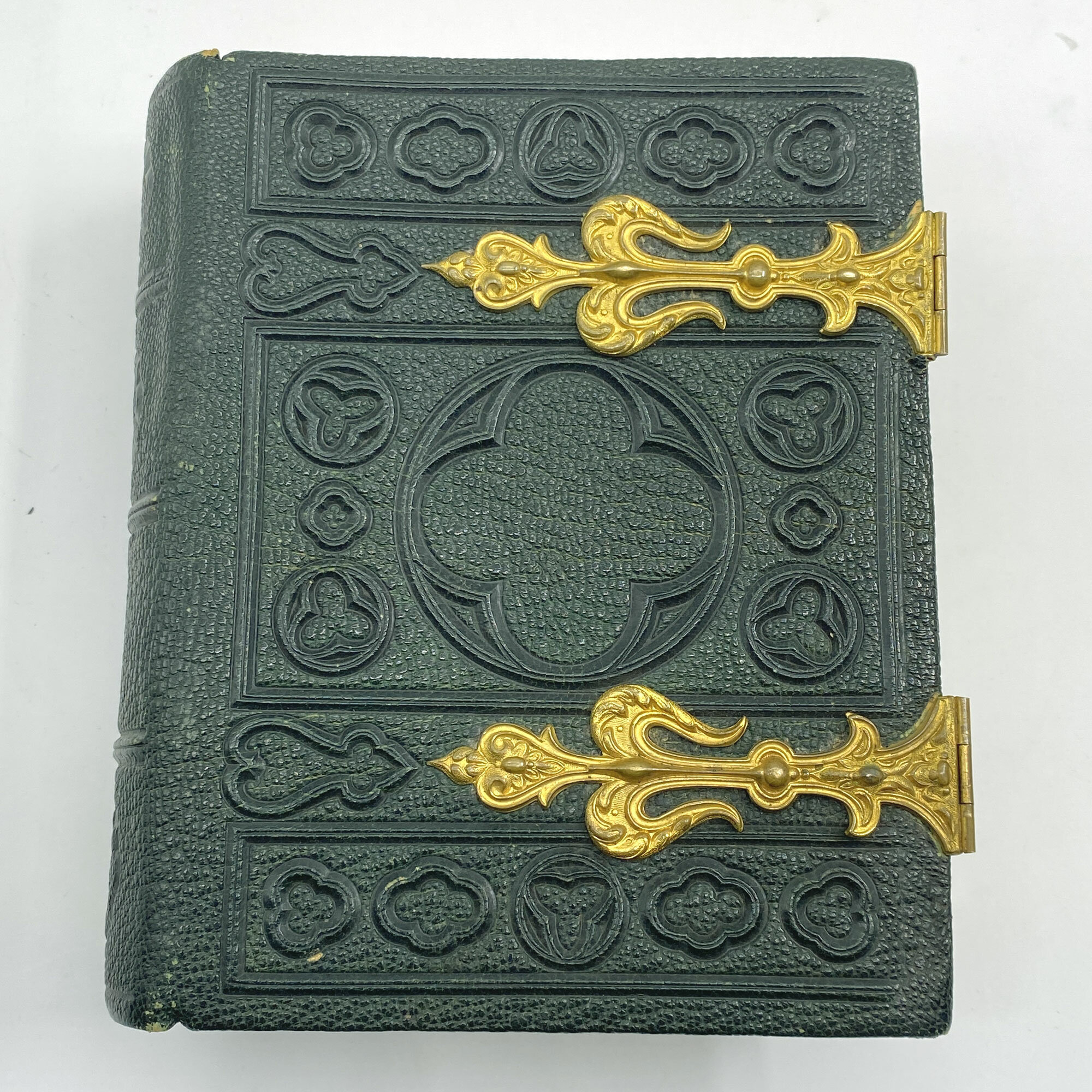
Victorian leather bound photo album made by Mechi and Bazin c.1870
Price: £110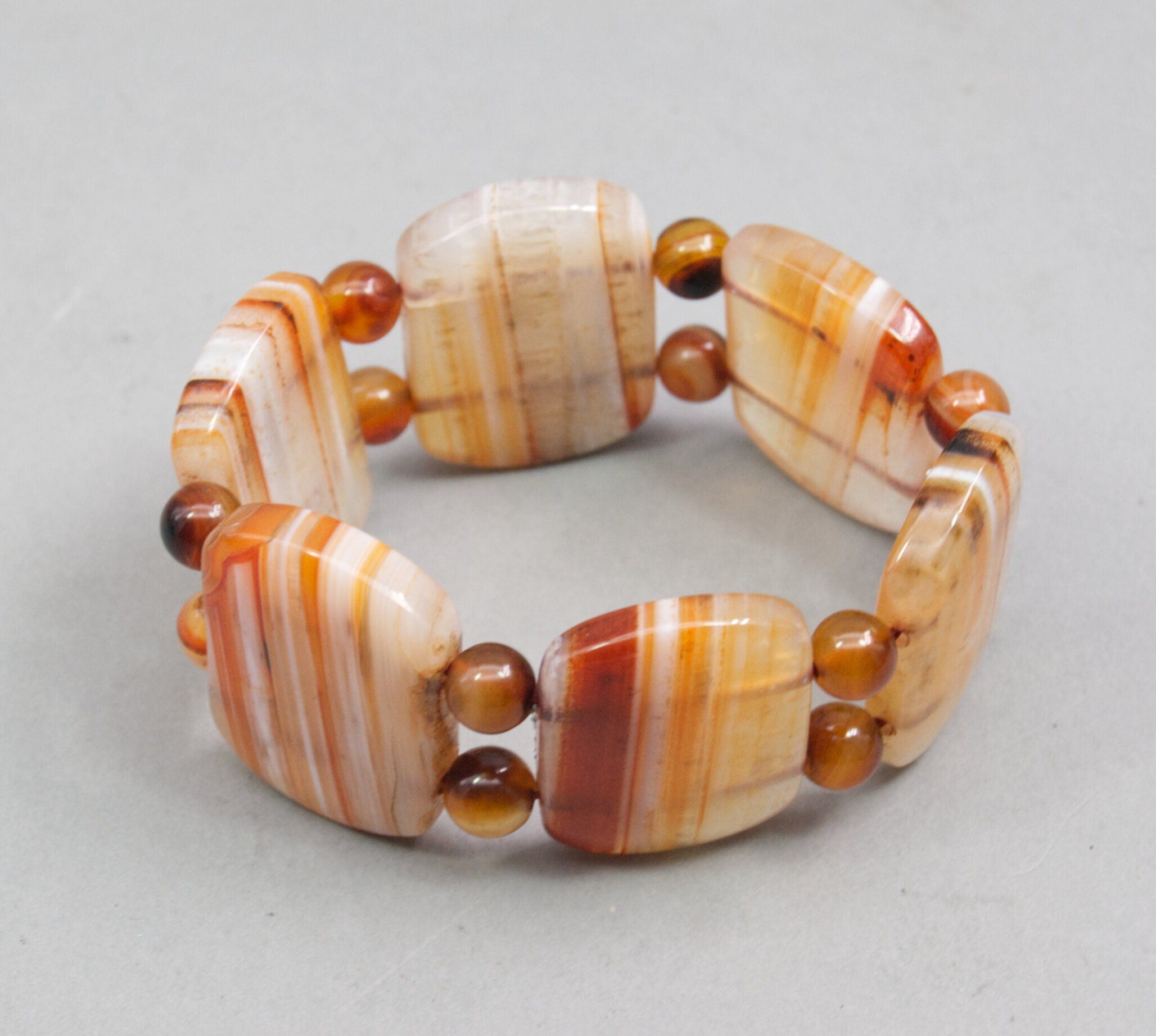
Very unusual banded carnelian panel bracelet
Price: £45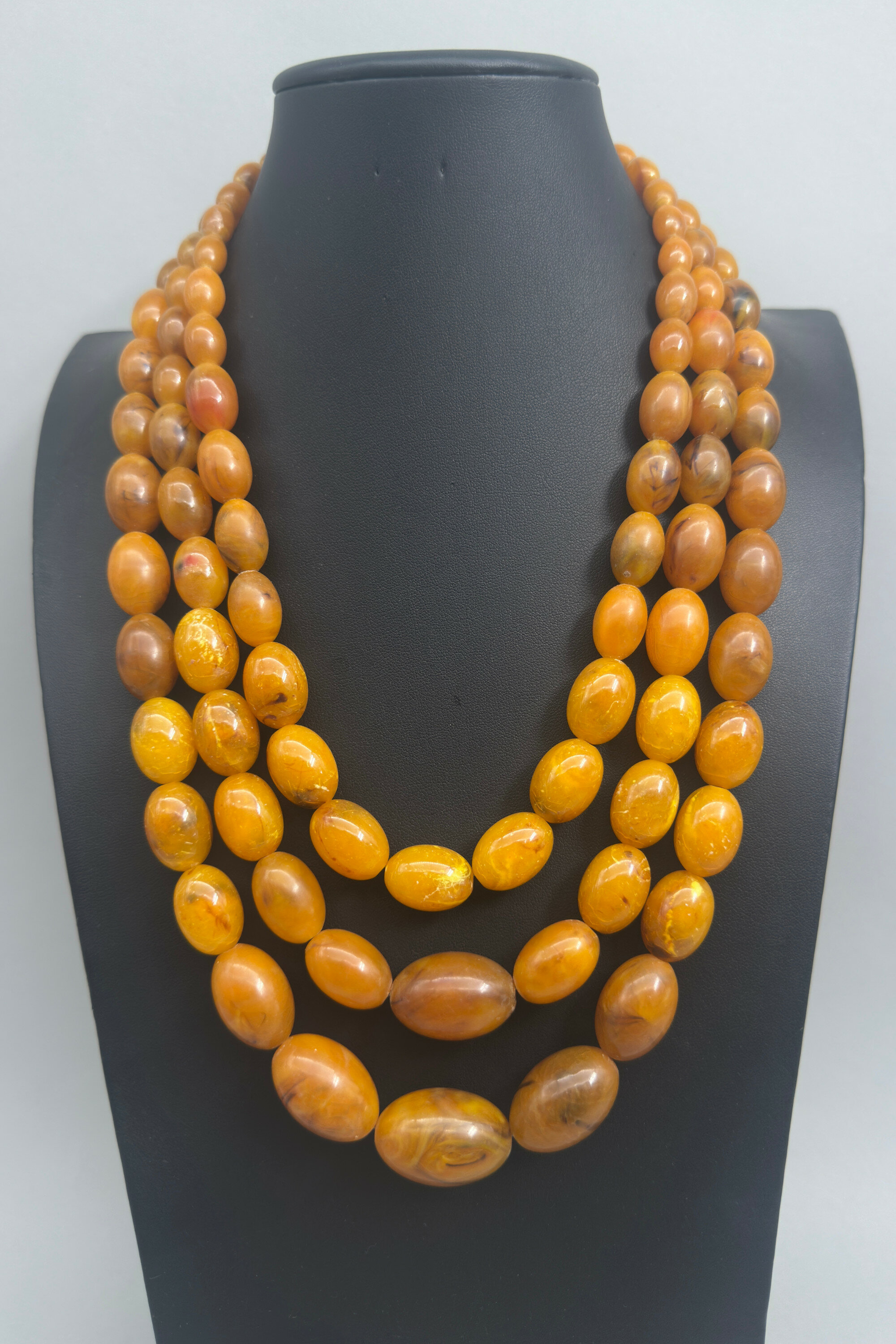
Triple strand of amber Bakelite beads, British 1930s
Price: £750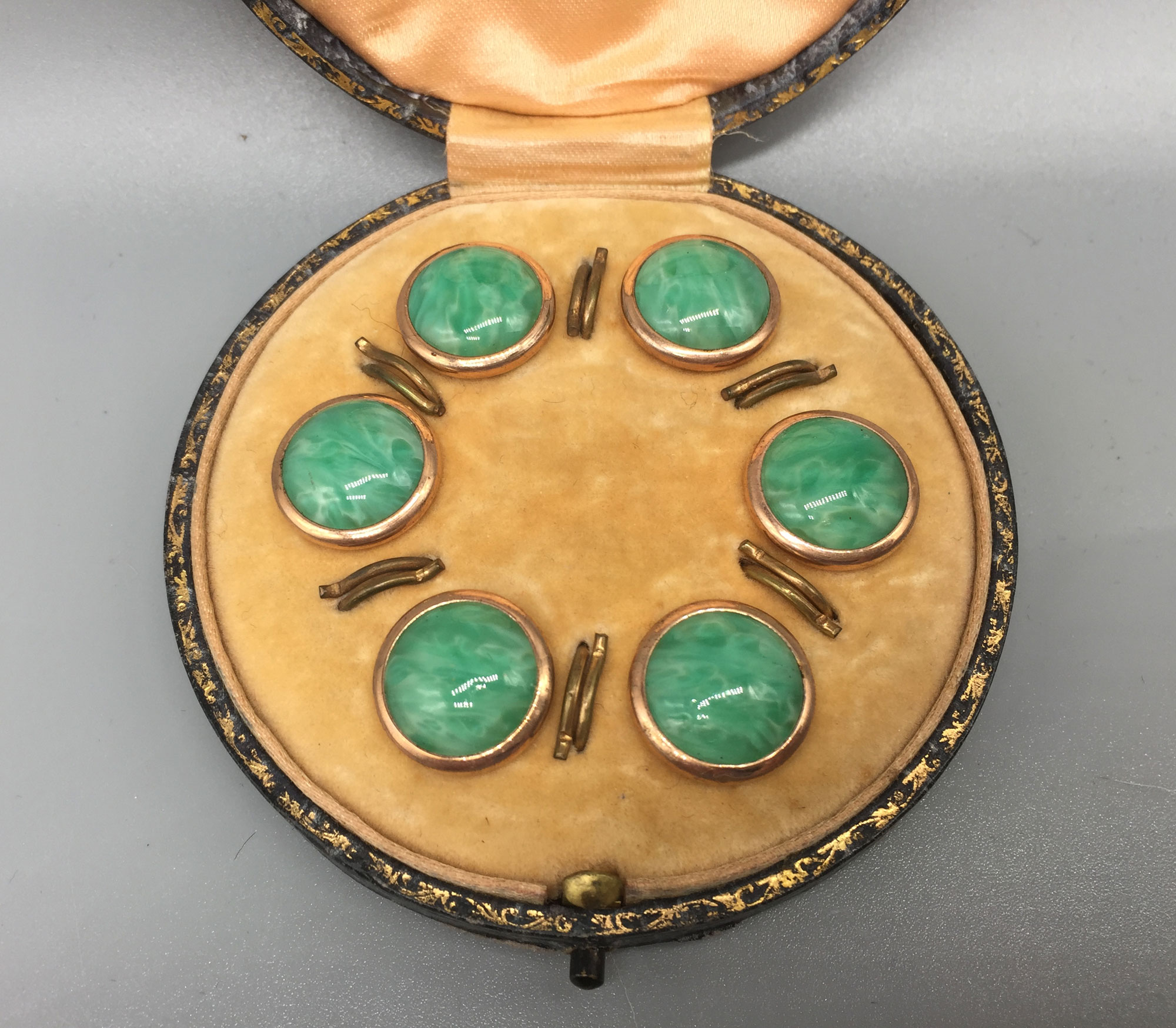
Set of 6 Peking glass shirt studs in fitted box
Price: £45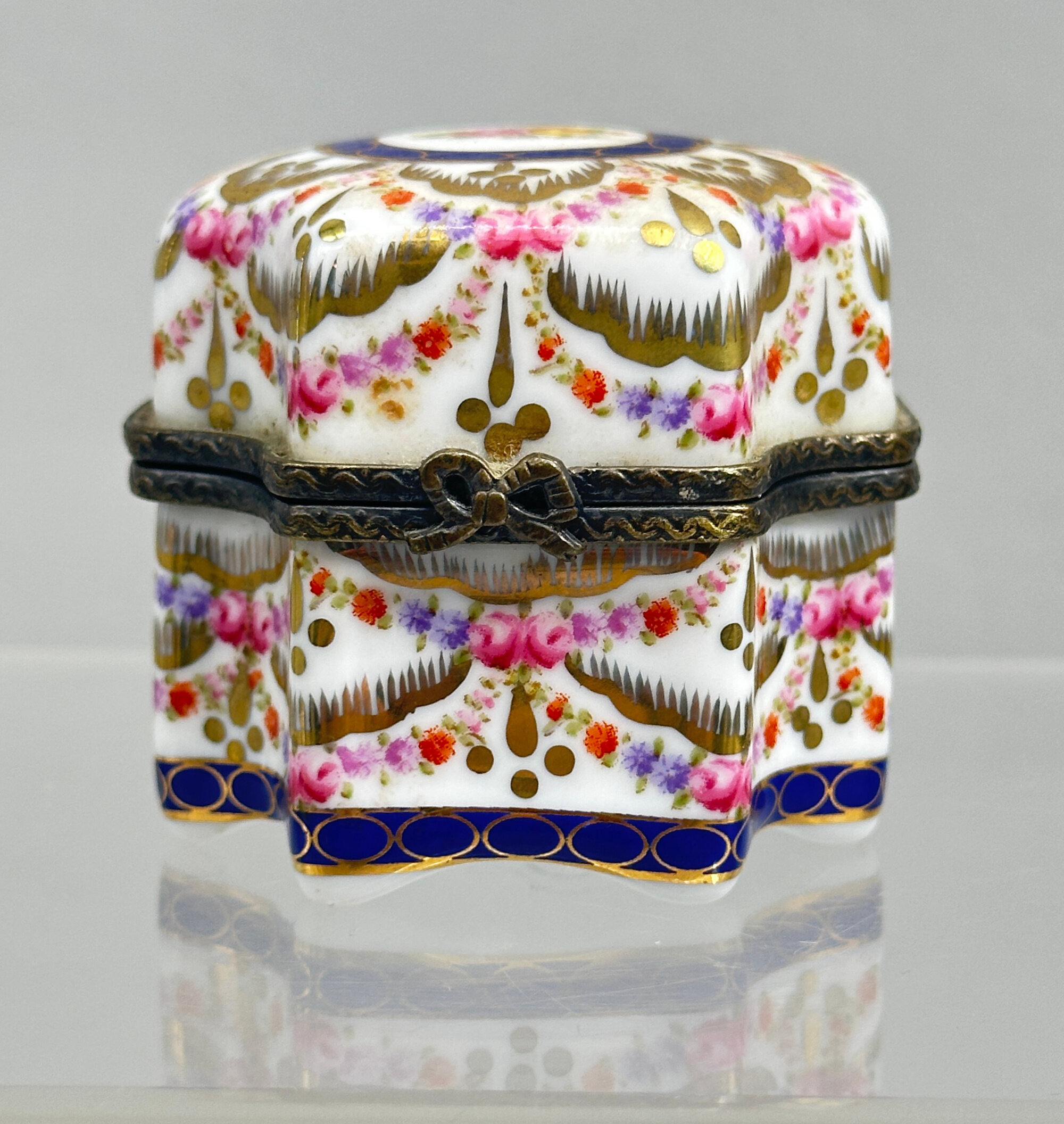
Reproduction Limoges Porcelain Box with Scent Bottles, Modern
Price: £25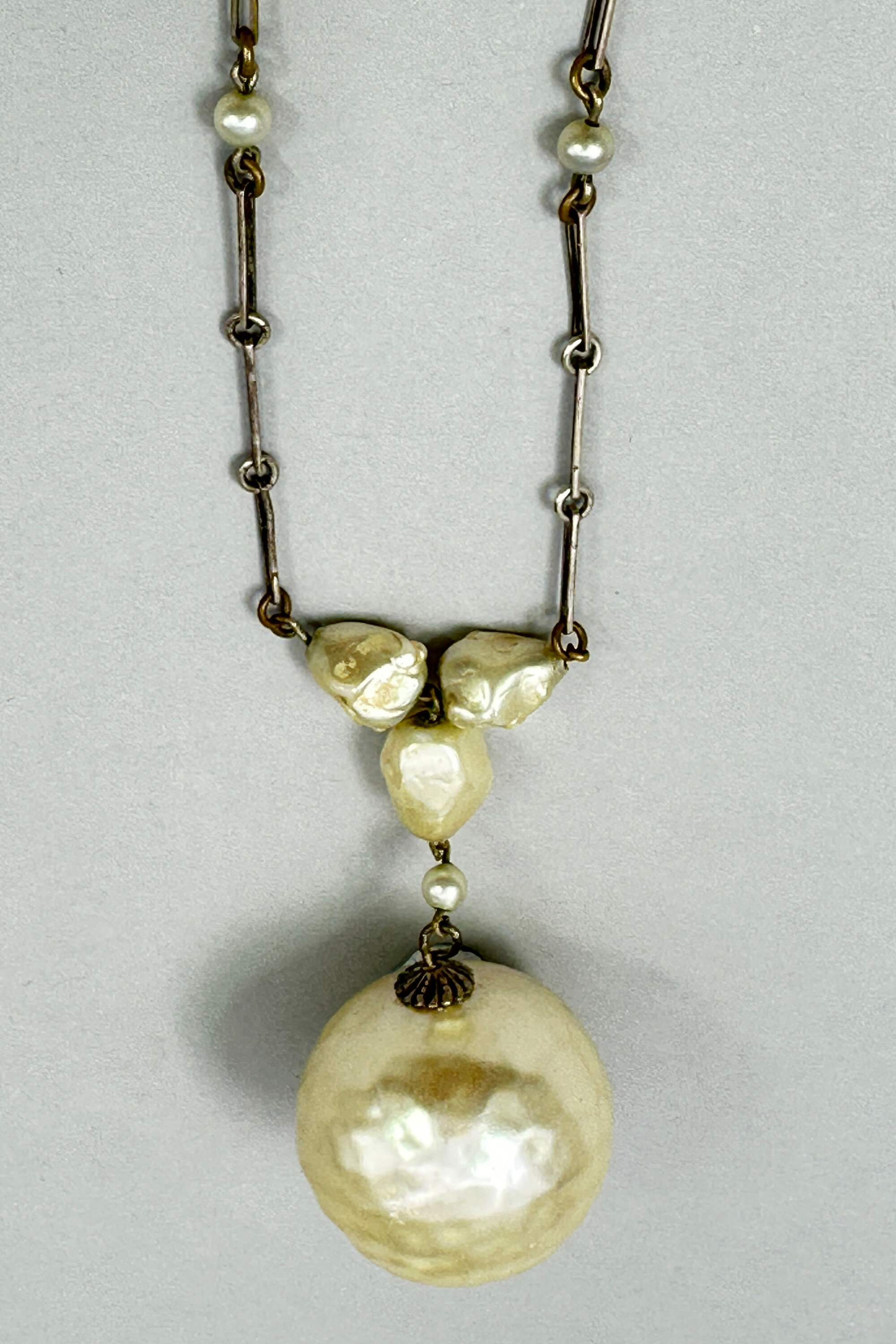
Faux pearl necklace c1910
Price: £15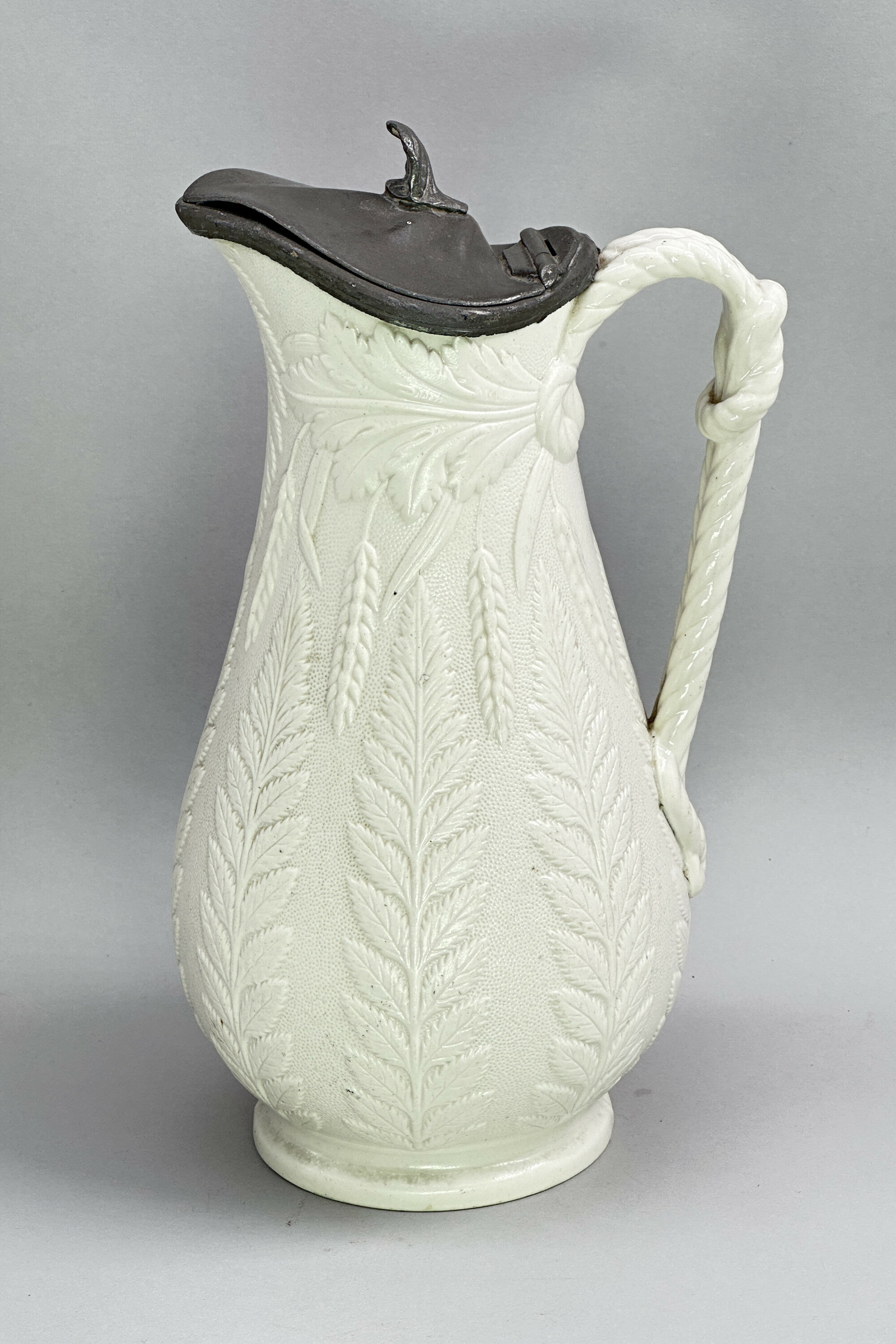
Antique English Staffordshire pitcher, William Brownfield and Sons, circa 1860.
Price: £55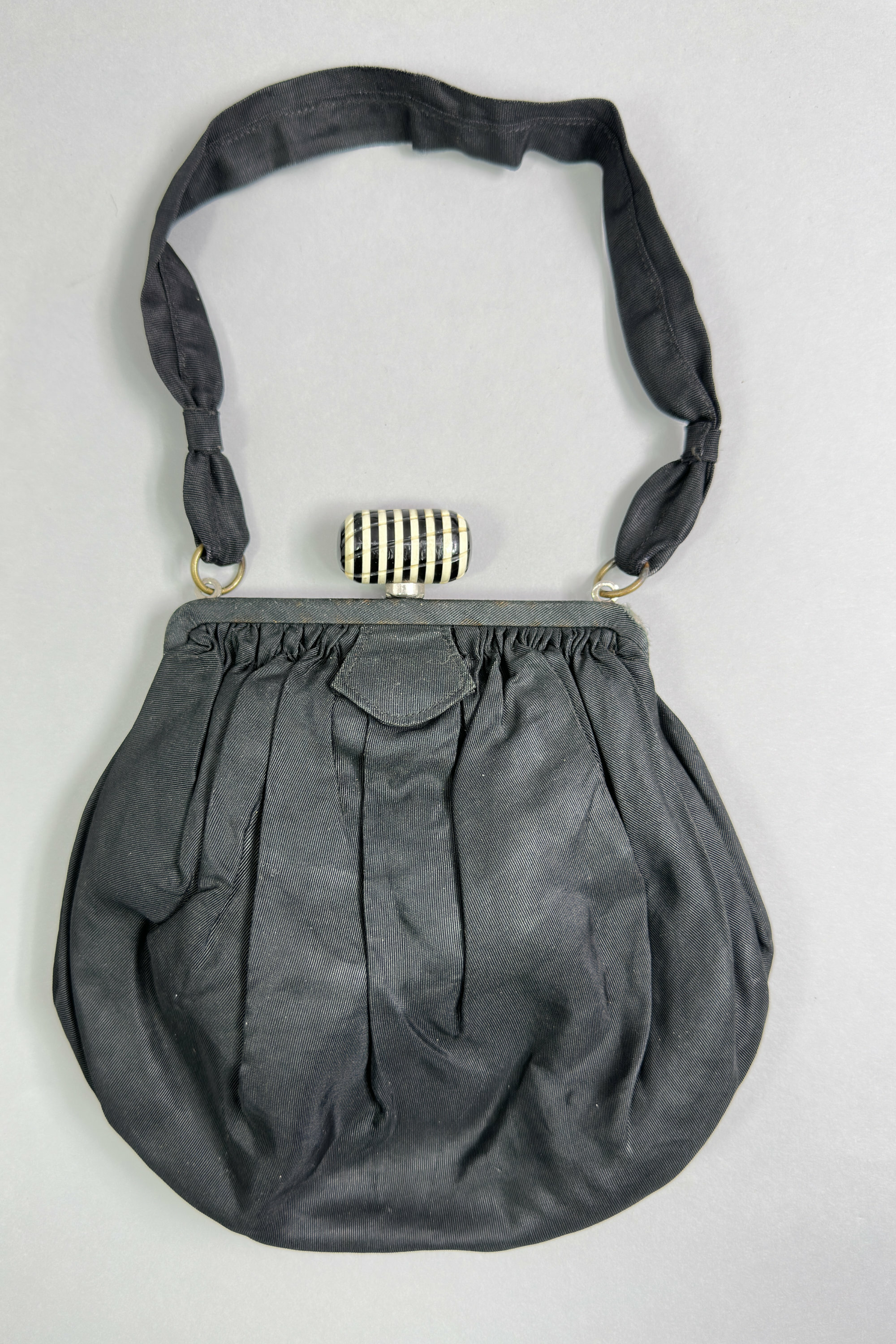
Small Art Deco wrist bag with Bakelite closure, French 1920s
Price: £35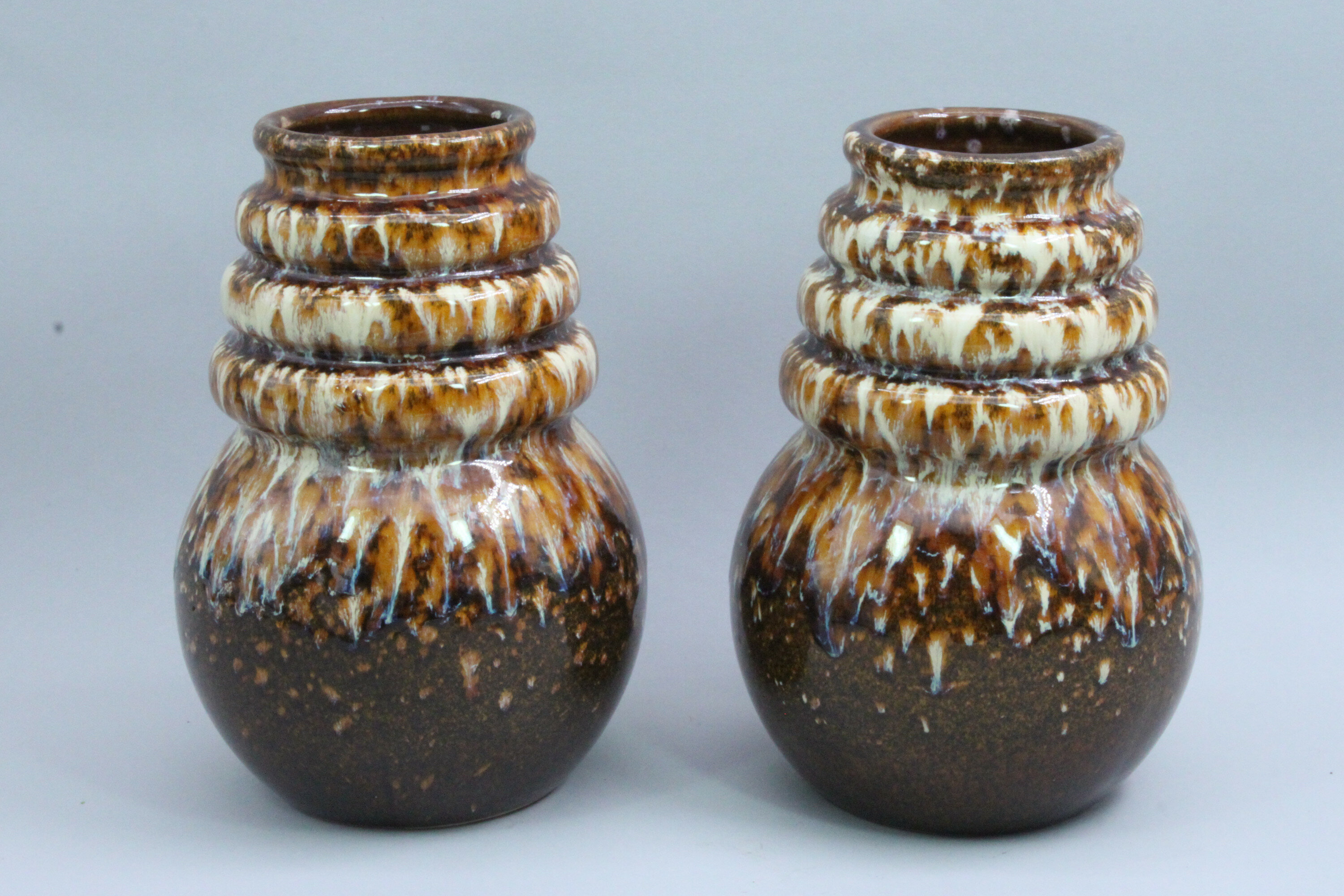
Pair of West German Scheurich Pottery ‘Wien’ Vases, model 269-18, mid 20th Century
Price: £45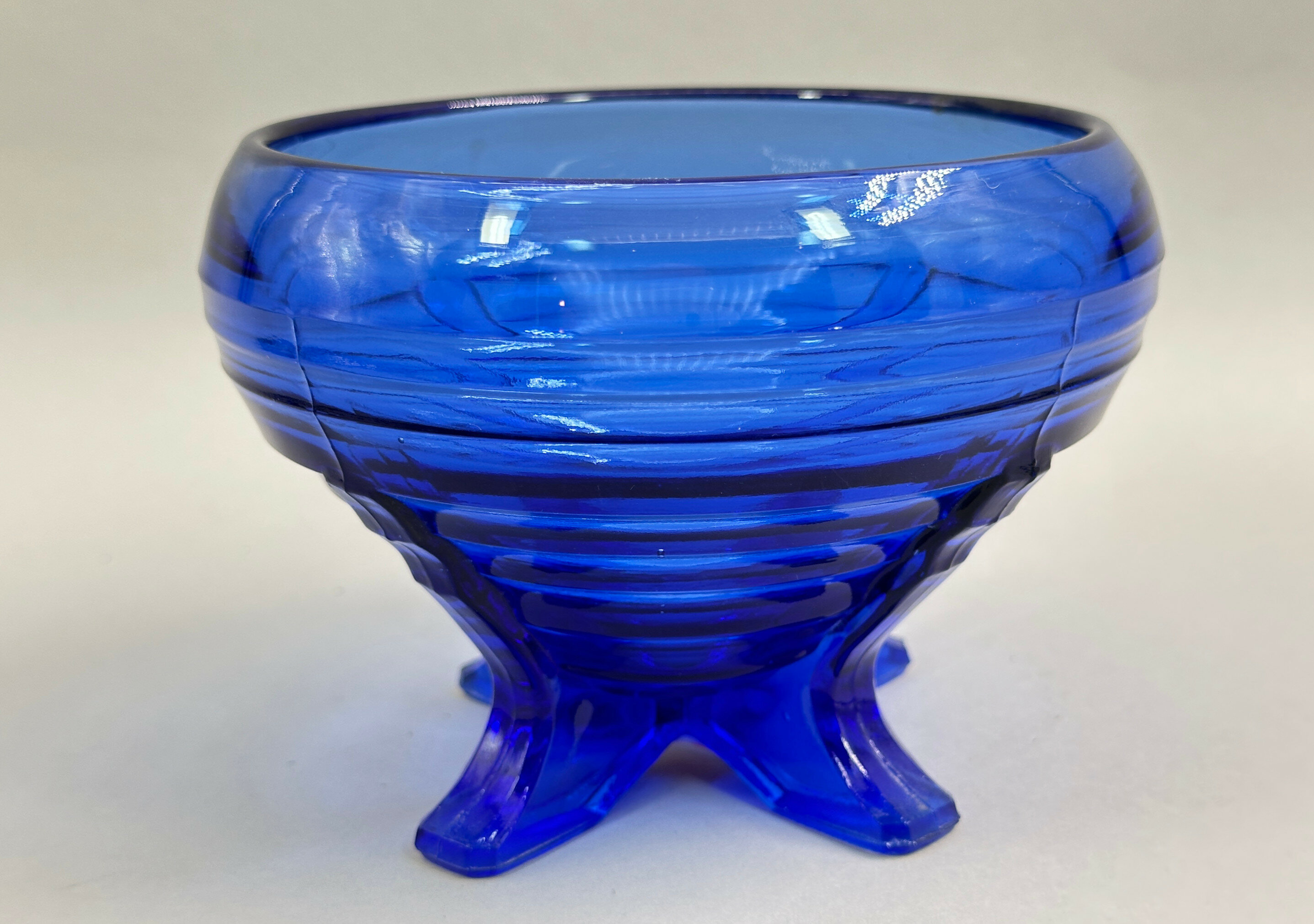
Sowerby Blue Glass Footed Bowl, 1930s/1940s
Price: £25The Sowerby family came from the North West of England near Carlisle and settled in Gateshead in the late eighteenth century. The firm Sowerby Glassworks is known from 1807 onwards and continued production until 1972, concentrating on pressed glass. Catalogues of their wares still exist and they produced pieces in a wide variety of styles and shapes which retain their popularity today.
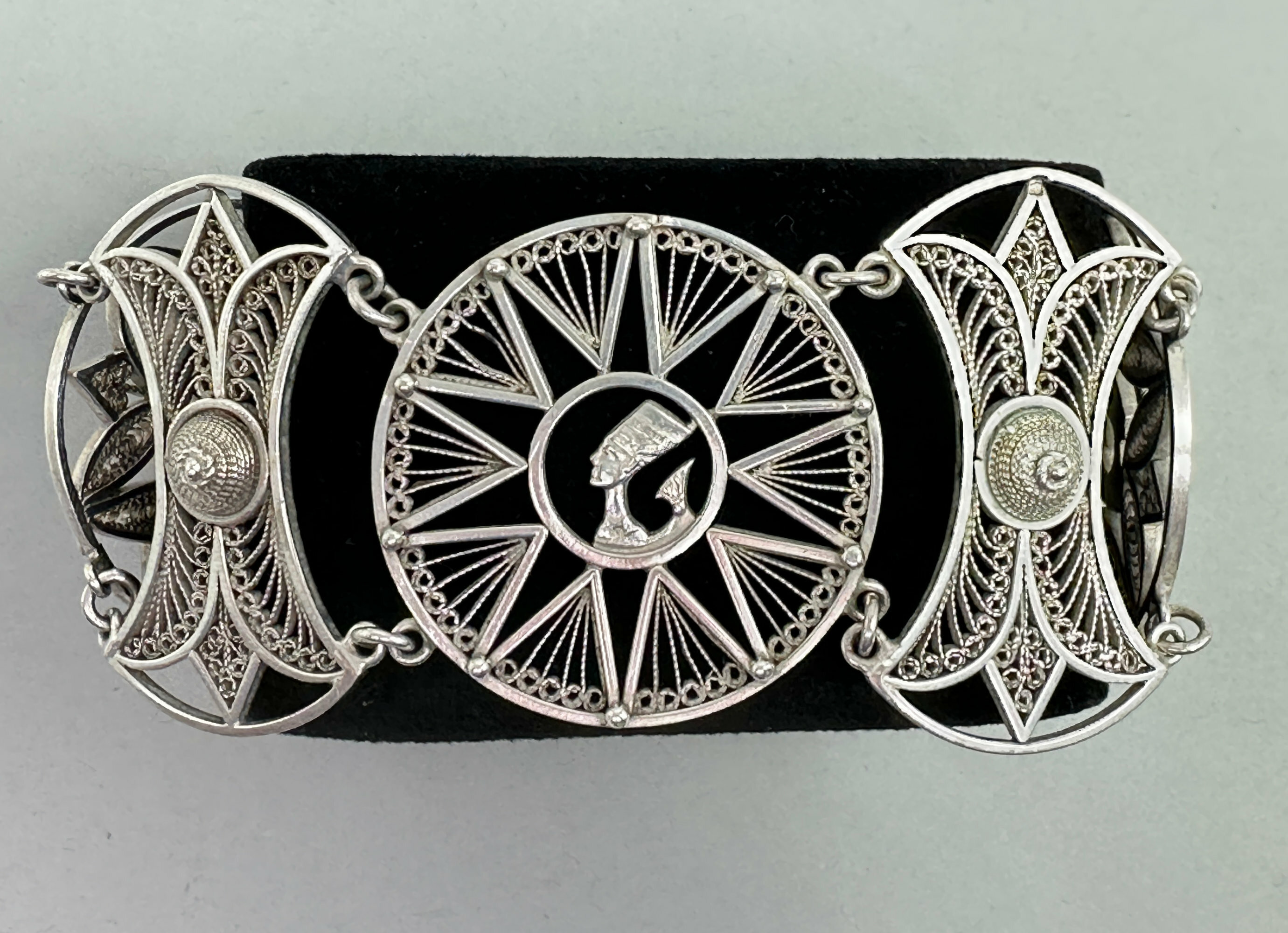
Egyptian Revival filigree cuff bracelet 1930s
Price: £95
Incredible Hobe suite of Earrings and a Brooch, 1950s
Price: £300Hobe was founded in 1887 by the French goldsmith Jacques Hobe as makers of fine jewellery. The costume jewellery division, Hobe Cie, was added 40 years later by his son, William Hobe, who brought the firm to America in 1927 and was commissioned by Flo Ziegfeld to design and manufacture jewellery for his Ziegfeld Follies costumes. By repute this is the origin of the expression costume jewellery. Production continued from the 1930s to the 1990s and the form of mark here suggests a more later dating within their range.
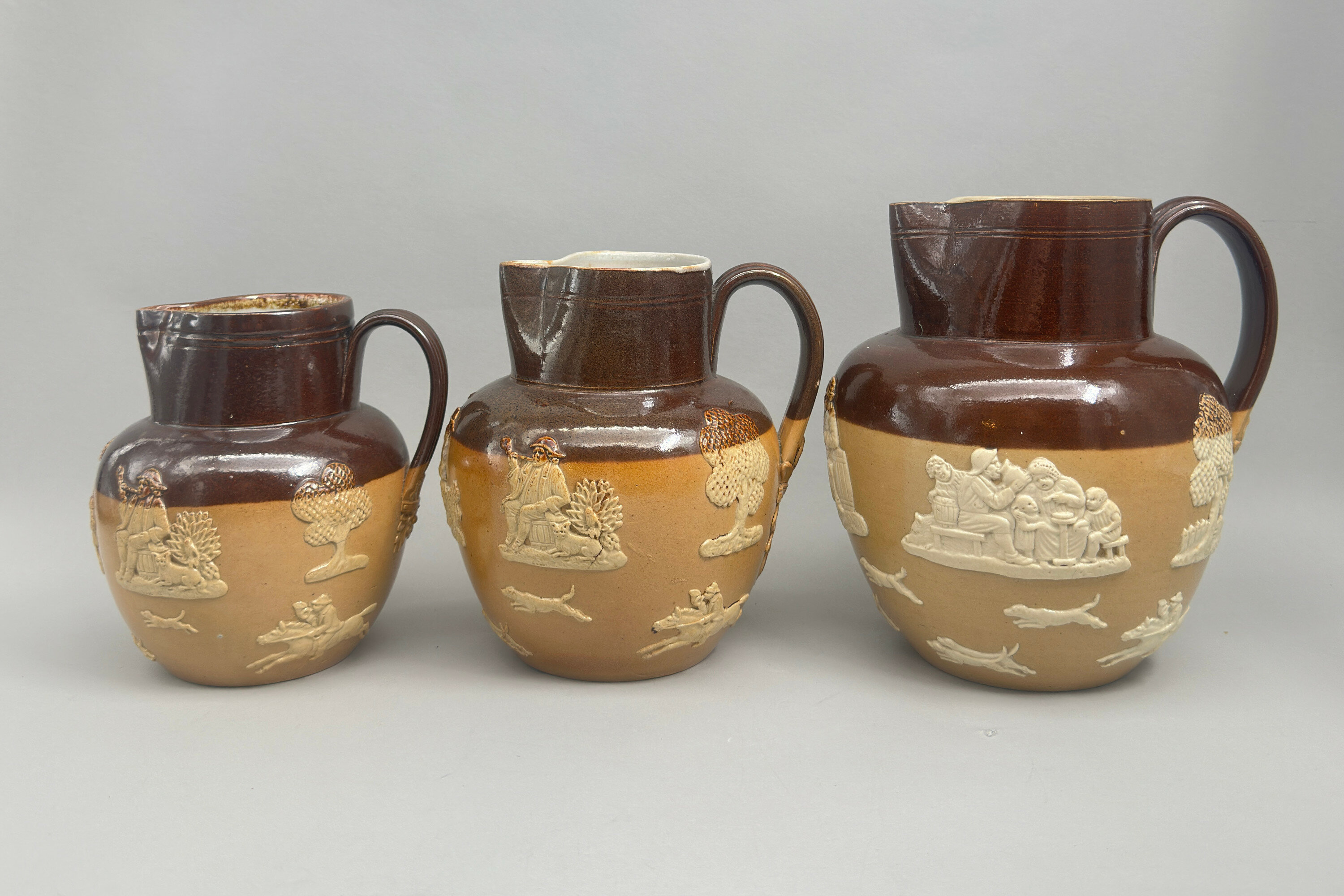
Graduated set of three Royal Doulton Harvest Pattern Jugs, early C20th
Price: £150While this model, often called the ‘harvest pattern’, is found quite often, it is very unusual to see a graduated set of three, all matching. The form of the mark, where the lion does not sit above a crown, was used between 1922 and 1927 which gives us the dating here. The largest jug carries the letter ‘a’ which was a decorator’s mark and stands for Louisa Ayling. Perhaps she worked on all three, but this must remain a guess although the quality of the work on all three is quite consistent producing a highly decorative and attractive ensemble.
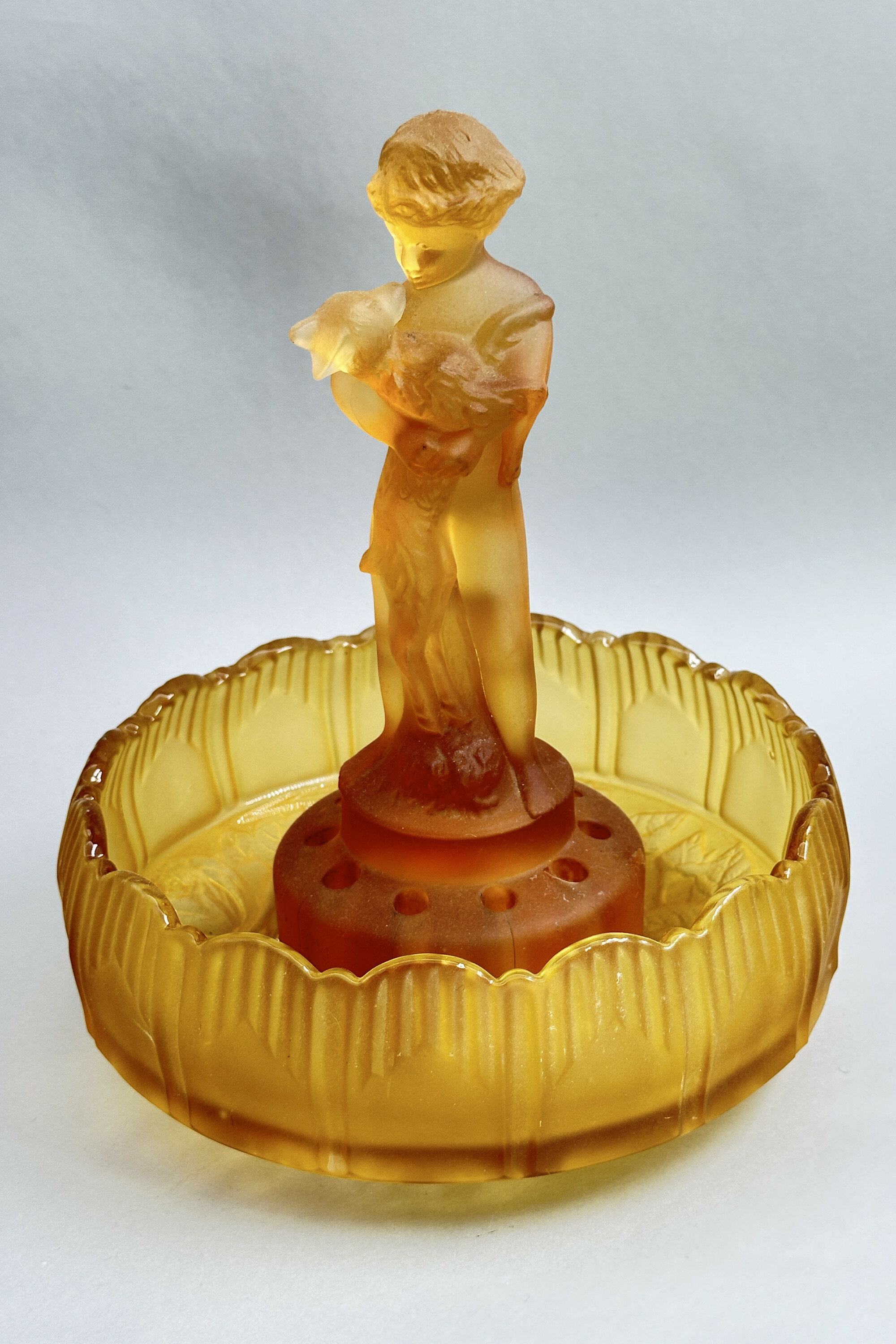
Sowerby Amber Glass Centrepiece circa 1930
Price: £75The Sowerby family came from the North West of England near Carlisle and settled in Gateshead in the late eighteenth century. The firm Sowerby Glassworks is known from 1807 onwards and continued production until 1972, concentrating on pressed glass. Catalogues of their wares still exist and they produced pieces in a wide variety of styles and shapes which retain their popularity today.
The centrpiece figurine, which was intended as a flower holder or ‘frog’, is rather unusual; normally the figures are female but the style of the modelling is identical. Similar designs to the bowl can be found in a 1936 catalogue but versions of it even appear in another catalogue from 1882. Many centrepiece/bowl combinations are found and some of them are not always original. This may possibly be the case here but if so the ‘match’ is extremely pleasing to the eye and the two elements set one another off perfectly to produce a striking example of Art Deco decorative design.
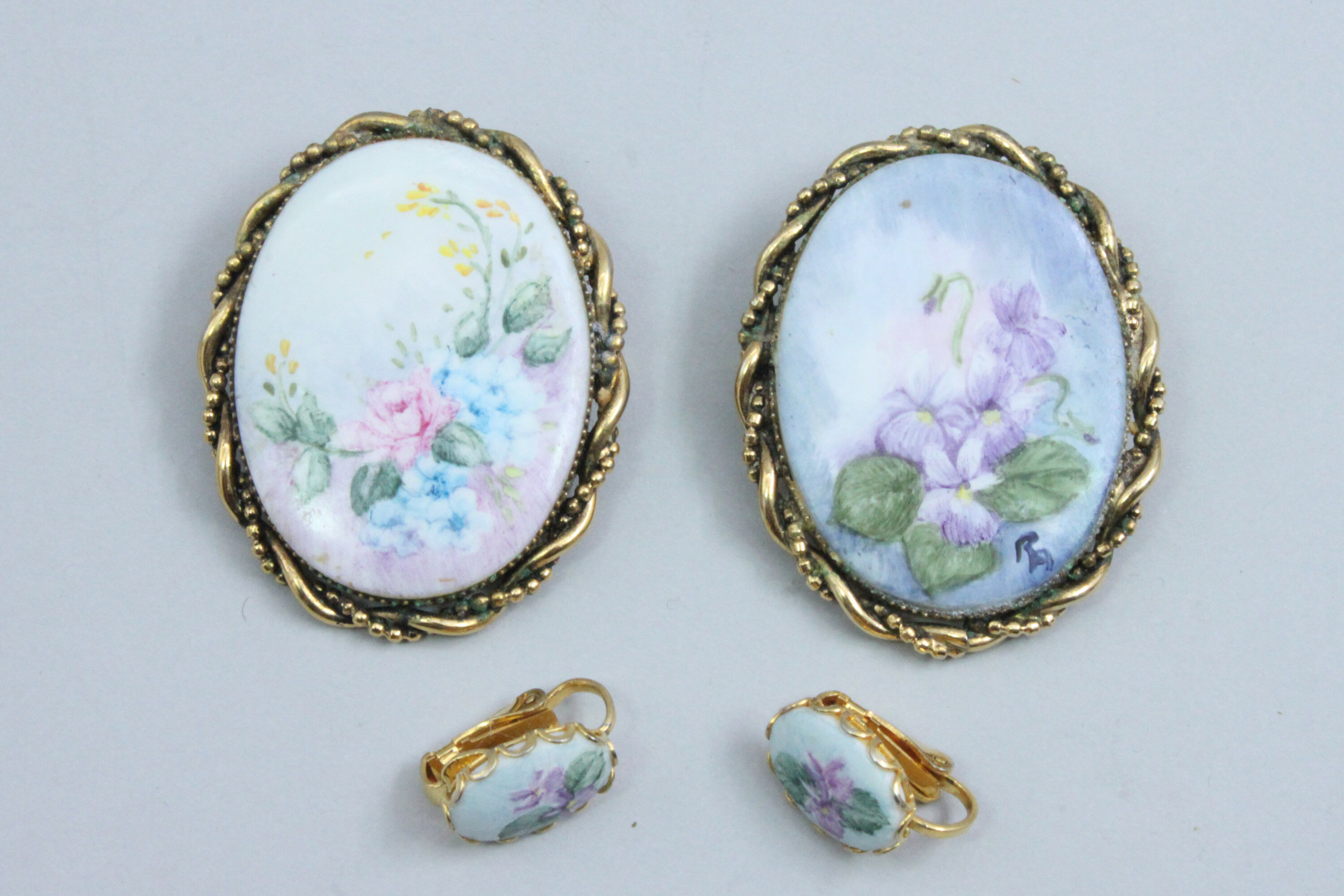
Fun group of two porcelain brooches with paid of small earrings 1960s
Price: £15
Pair of Beige Opaline Glass Vases, enamelled decoration, probably French late C19th
Price: £75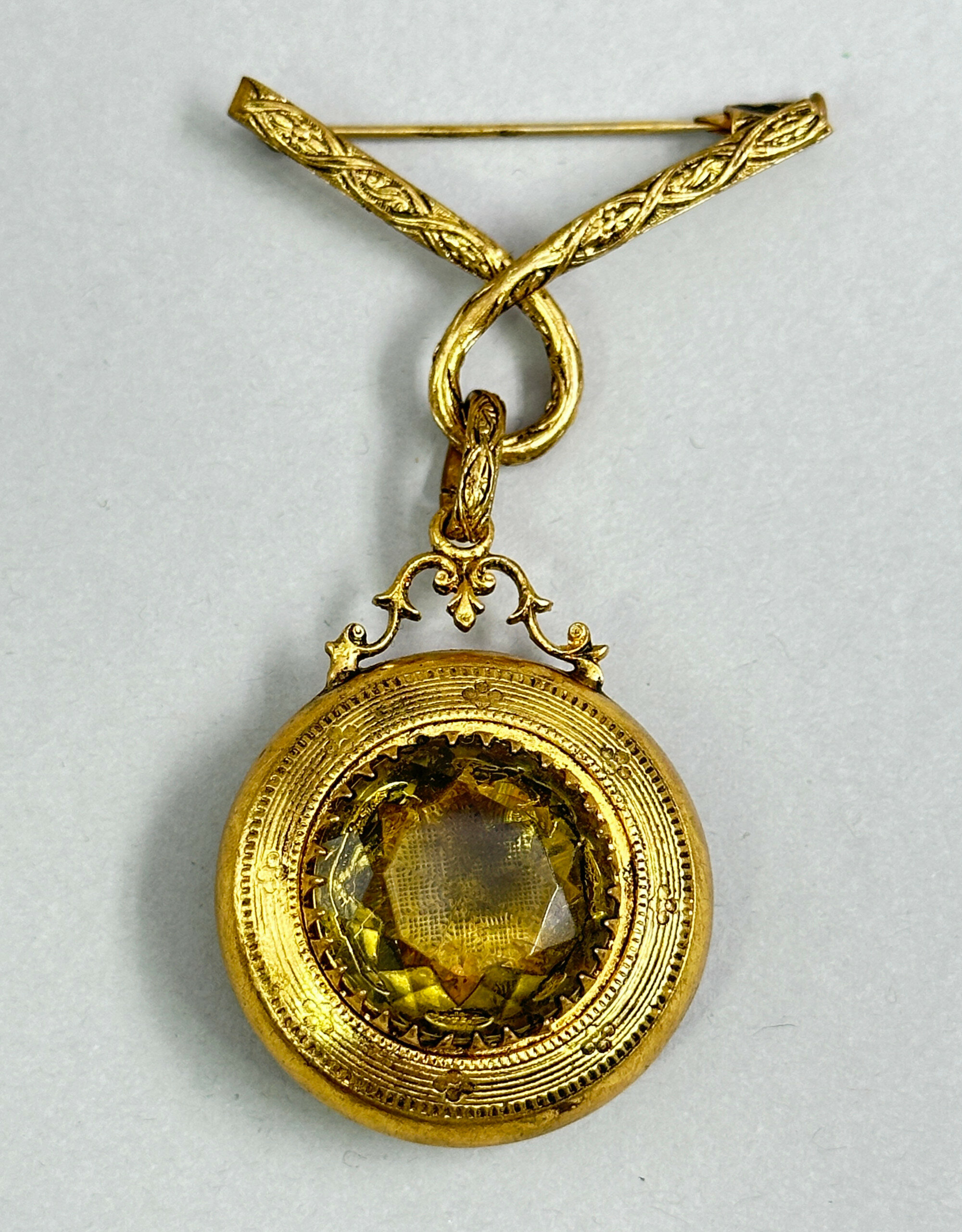
Statement fob brooch with large faux citrine drop c1950
Price: £15
Framed Oil Painting on Board of a Winter Landscape Scene, C20th
Price: £55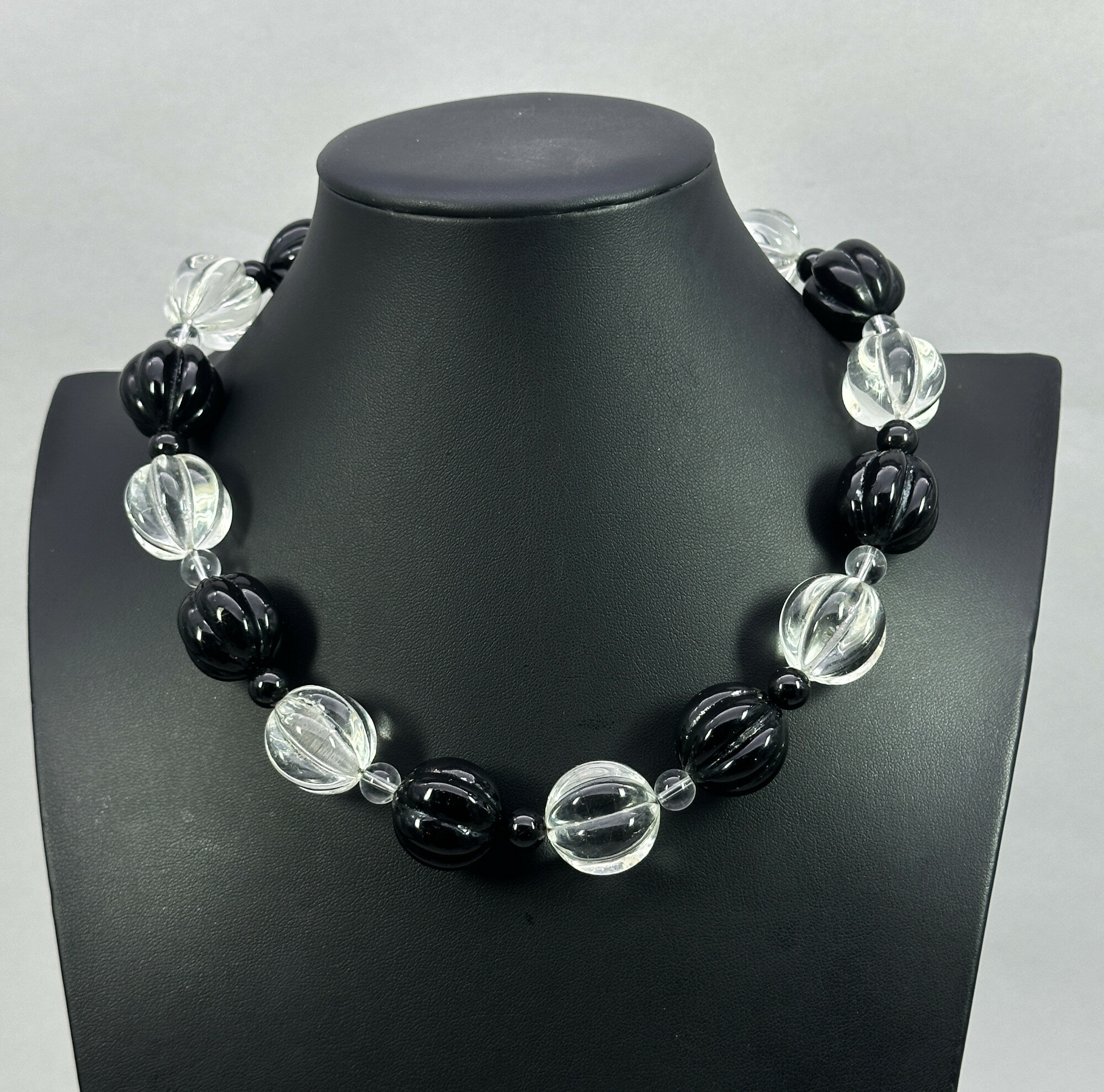
Stunning Art Deco onyx and rock crystal necklace
Price: £250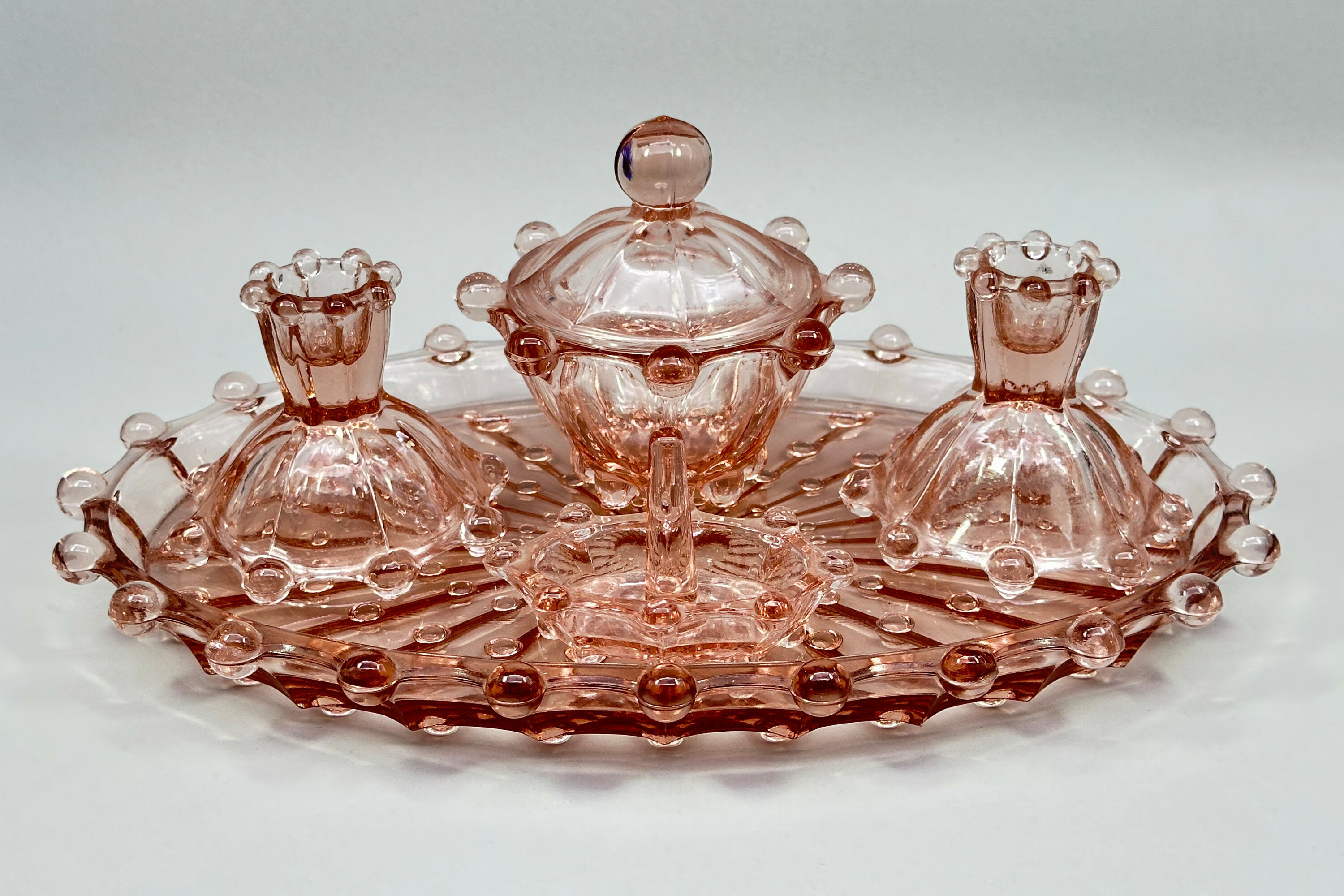
Pink pressed glass dressing table set, Libochoviche, Czech, 1950s
Price: £35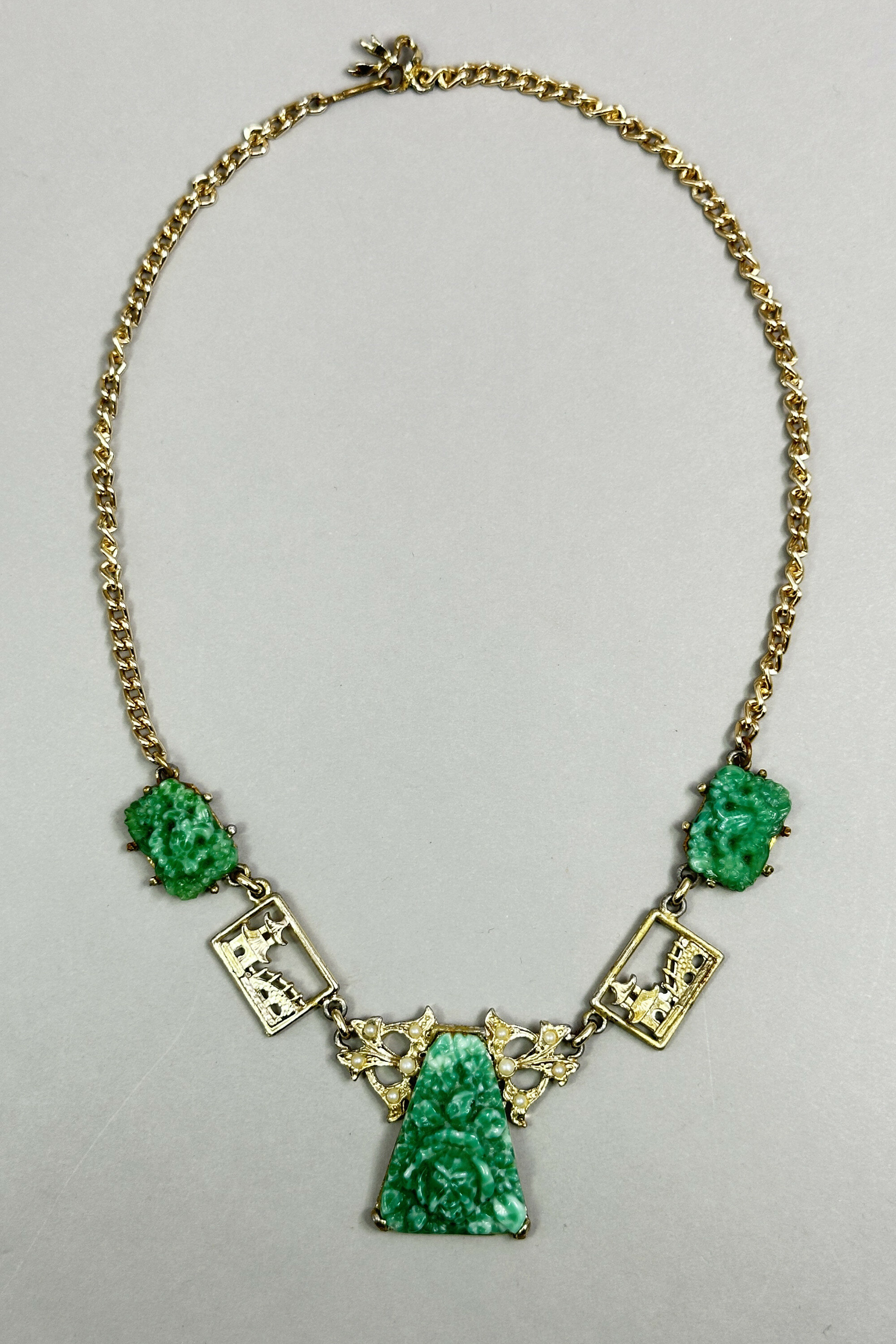
Chinoiserie necklace with peking glass plaques c1960
Price: £45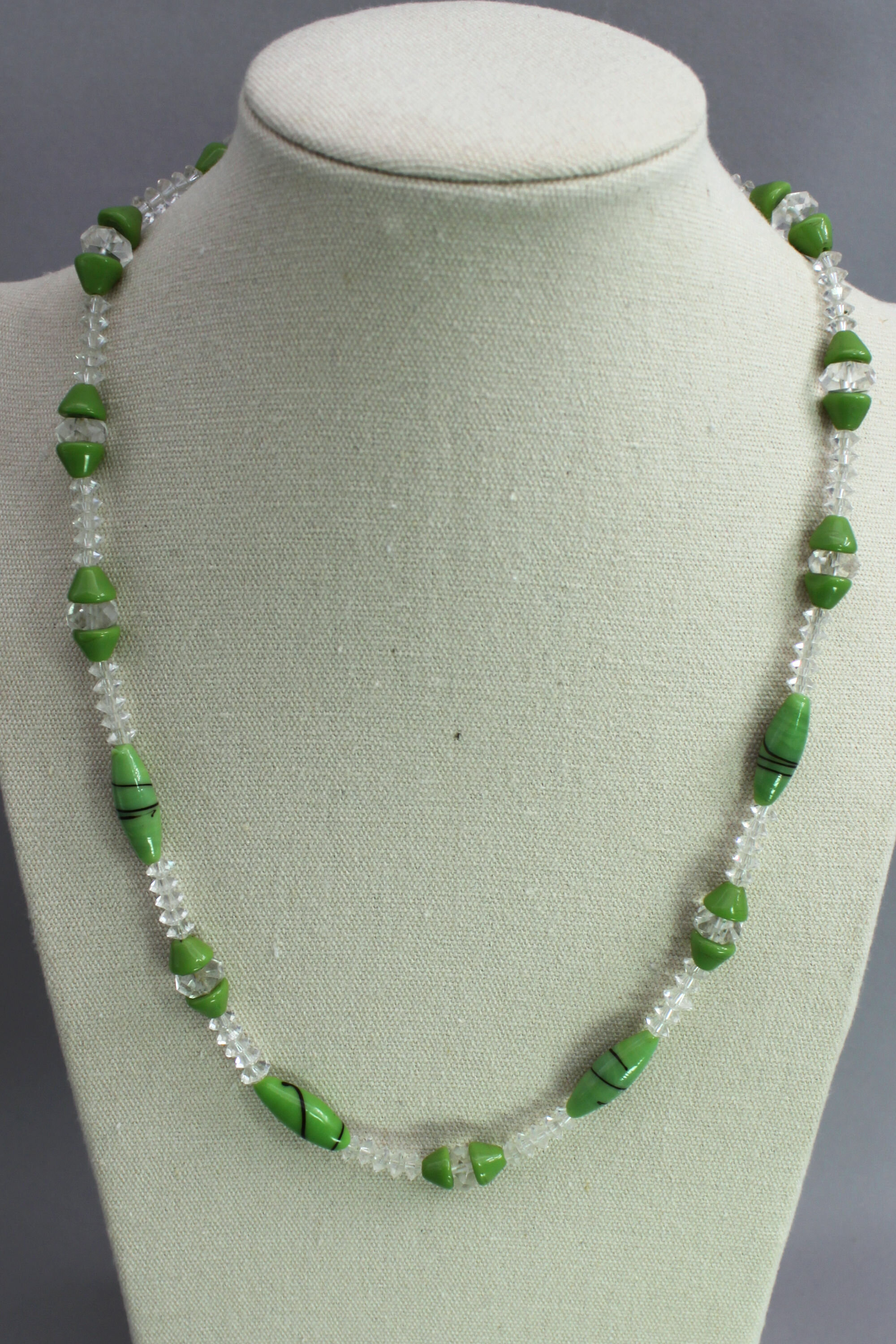
Art Deco glass bead necklace
Price: £20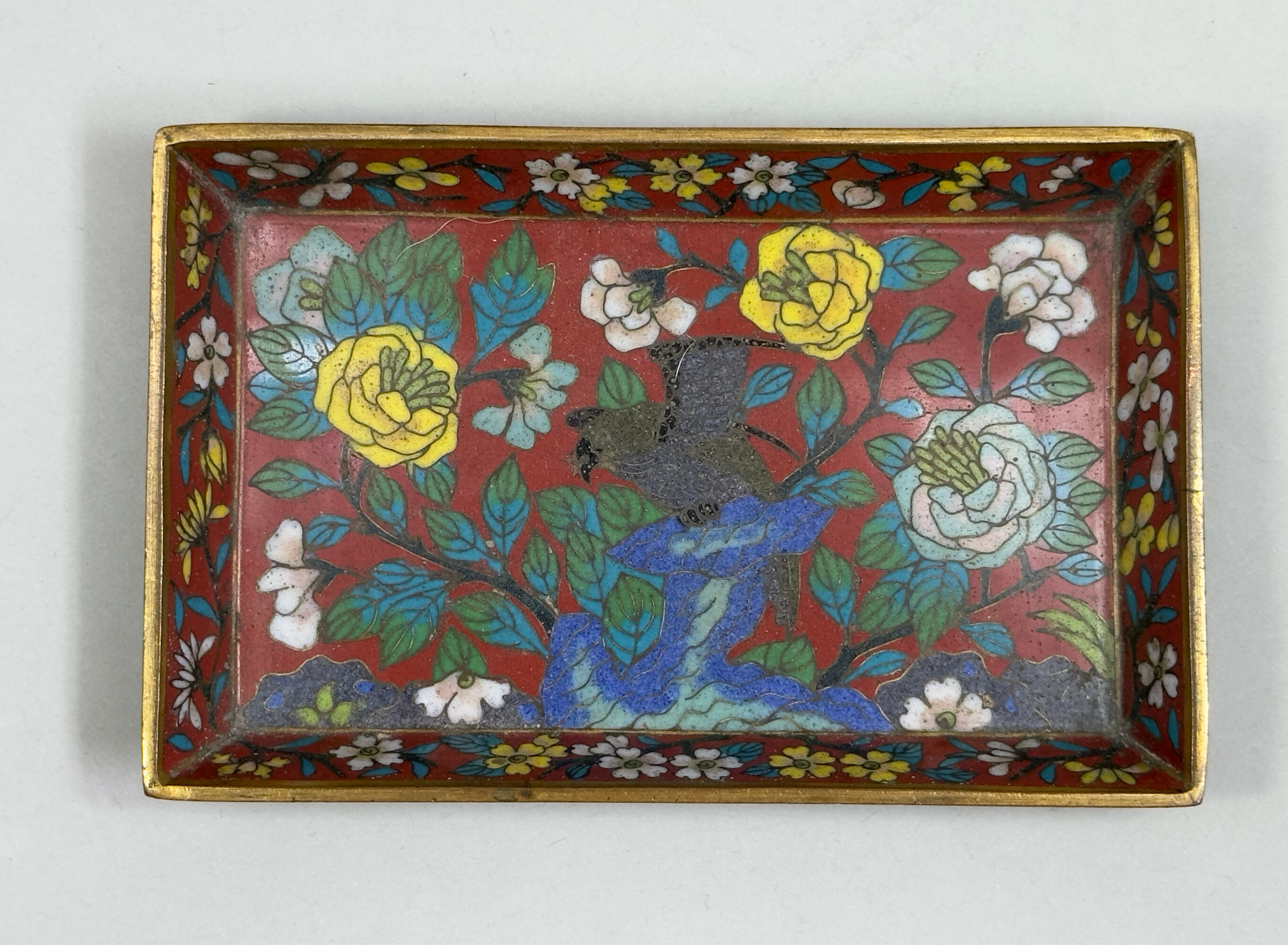
Chinese Cloisonne Small Tray decorated with Flowers and Rocks, 19th Century
Price: £150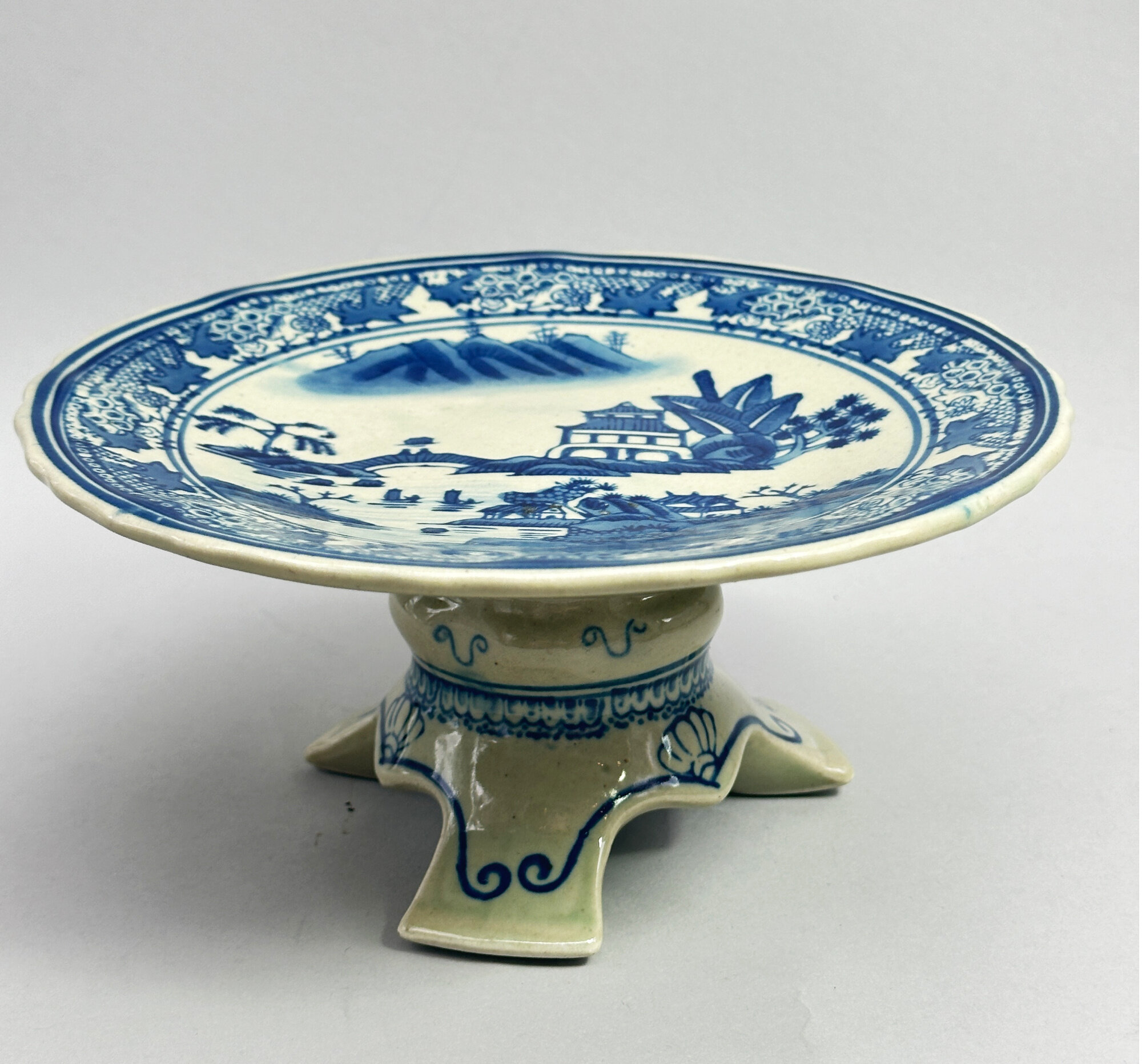
Japanese Celadon Ground Tazza with Chinese Nanking decoration, late C19th
Price: £25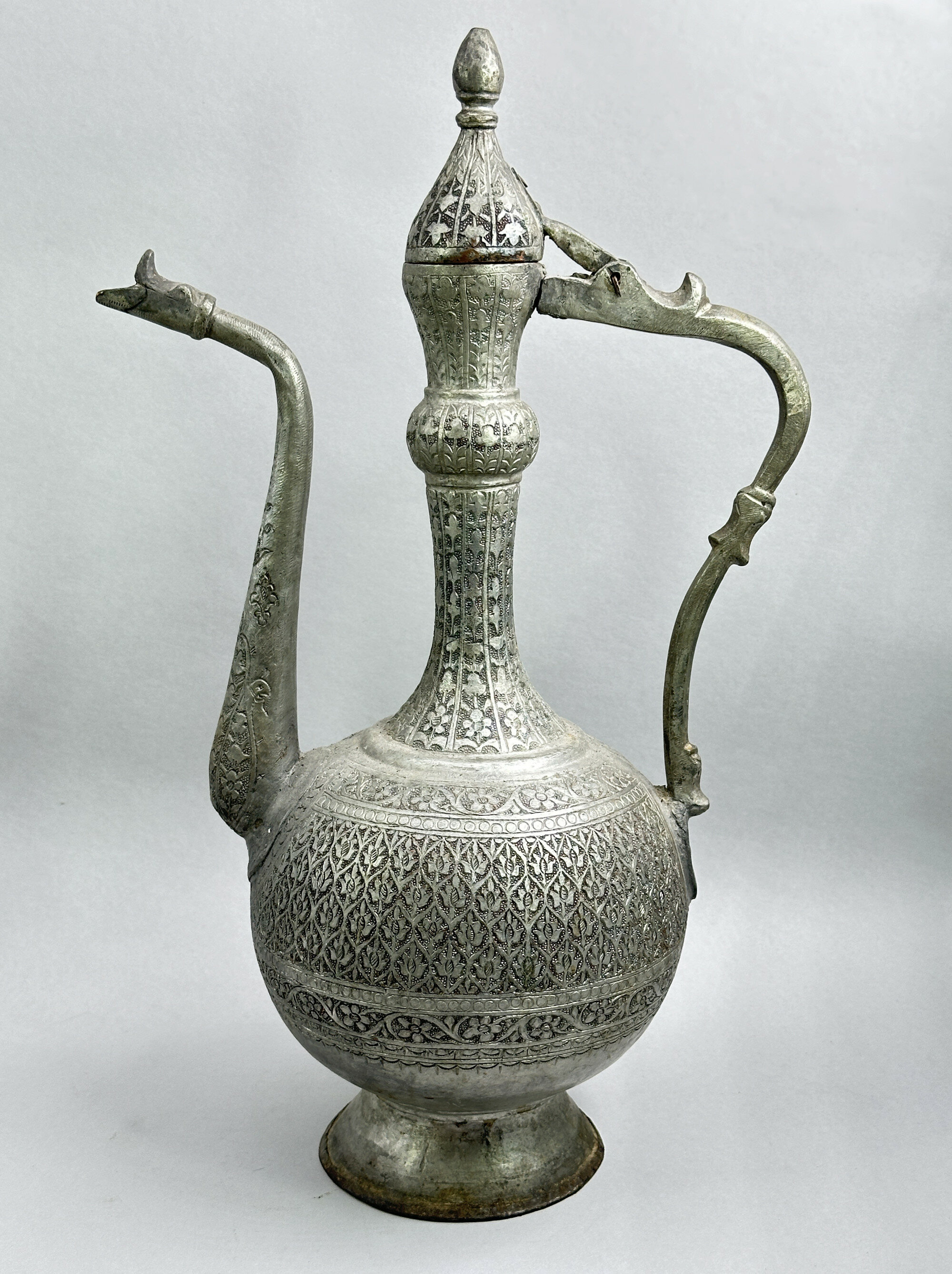
A Large Islamic Pewter Ewer, C20th
Price: £45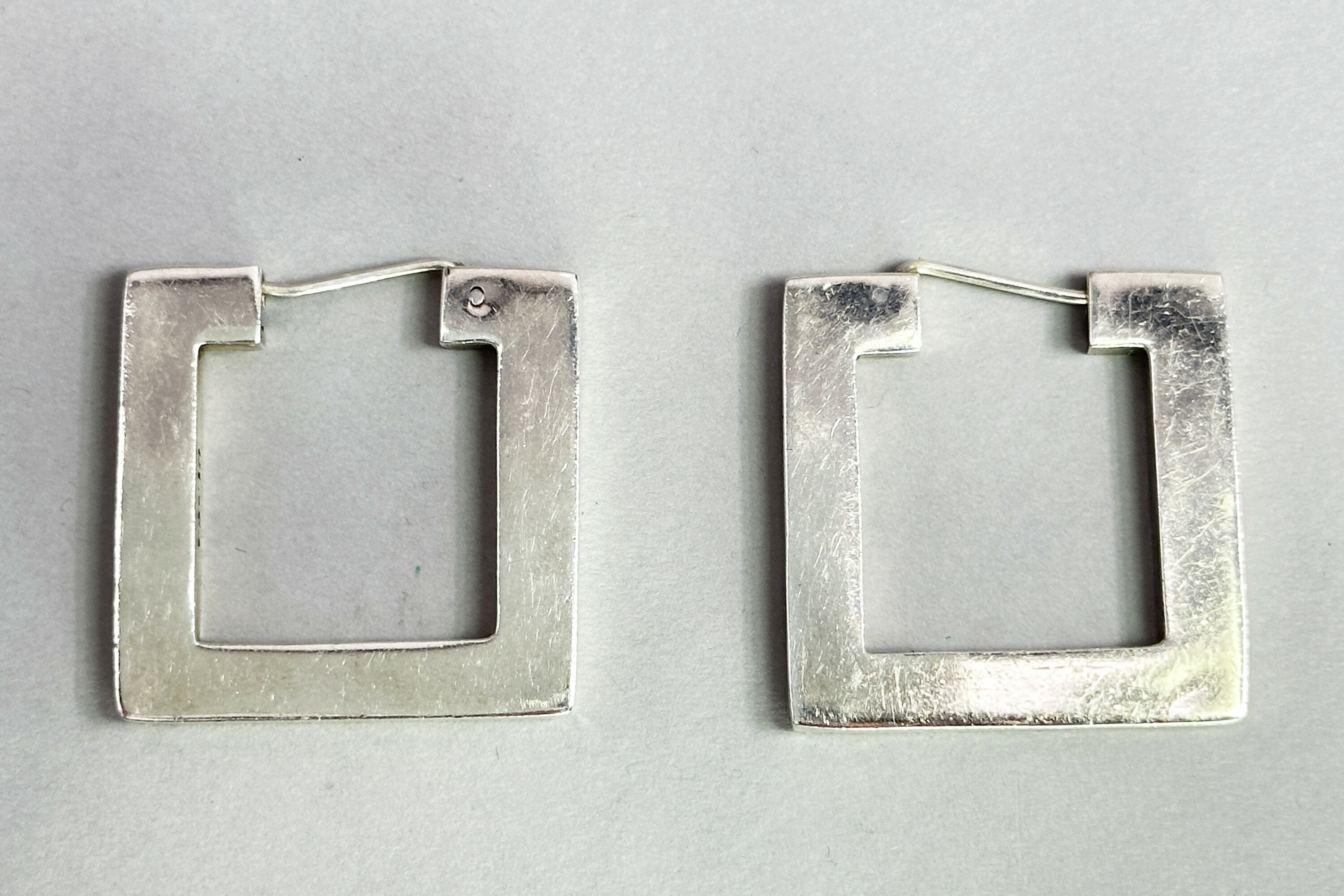
Pair of Modernist Taxco earrings, c1980
Price: £45
Victorian tortoiseshell hair ornament
Price: £20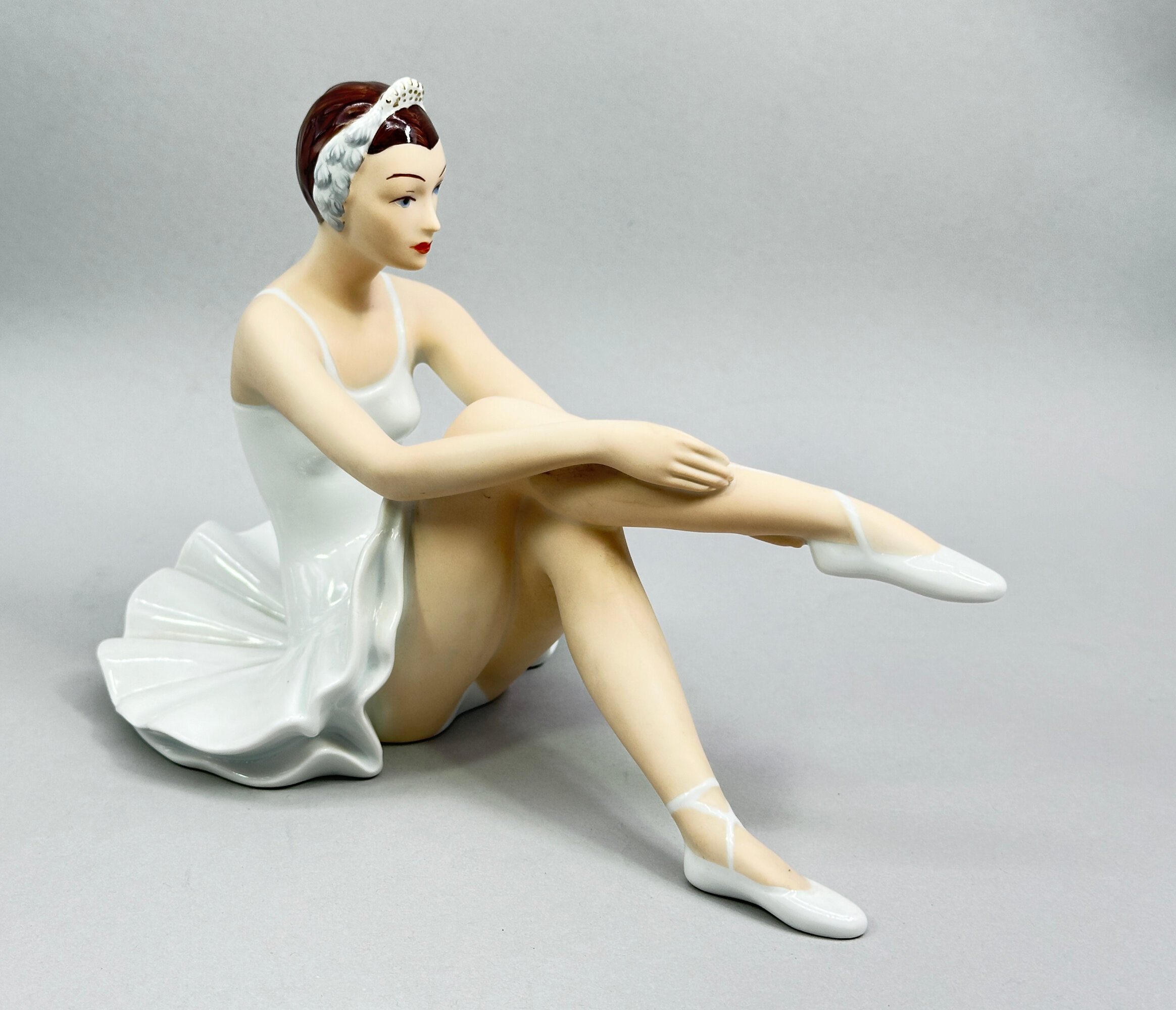
Figure of a Seated Ballerina, Royal Dux, late C20th
Price: £75Duxer Porzellanmanufaktur, or the Dux Porcelain Manufactory, was started in 1860 by Eduard Eichler in what was then Duchov, Bohemia, later to become part of Czechoslovakia. Production was to continue until the beginning of the second world war and beyond and their later pieces are now generally referred to by the abbreviated name, ‘Royal Dux’. The distinctive pink triangle plaque mark was first used in the late nineteenth century but appears on pieces from all dates, the version found here indicating late twentieth century work which is also confirmed by the rather indistinct stamped mark comprising a triangle surrounded by the wording ‘Hand Painted Made in Czech Republic’. The artist is named as ‘V.David’ and there seem to be two other companion pieces in different poses. The quality is quite excellent and explains the original popularity of the firm when it began manufacturing in the nineteenth century and produced highly successful imitations of its contemporary rivals.
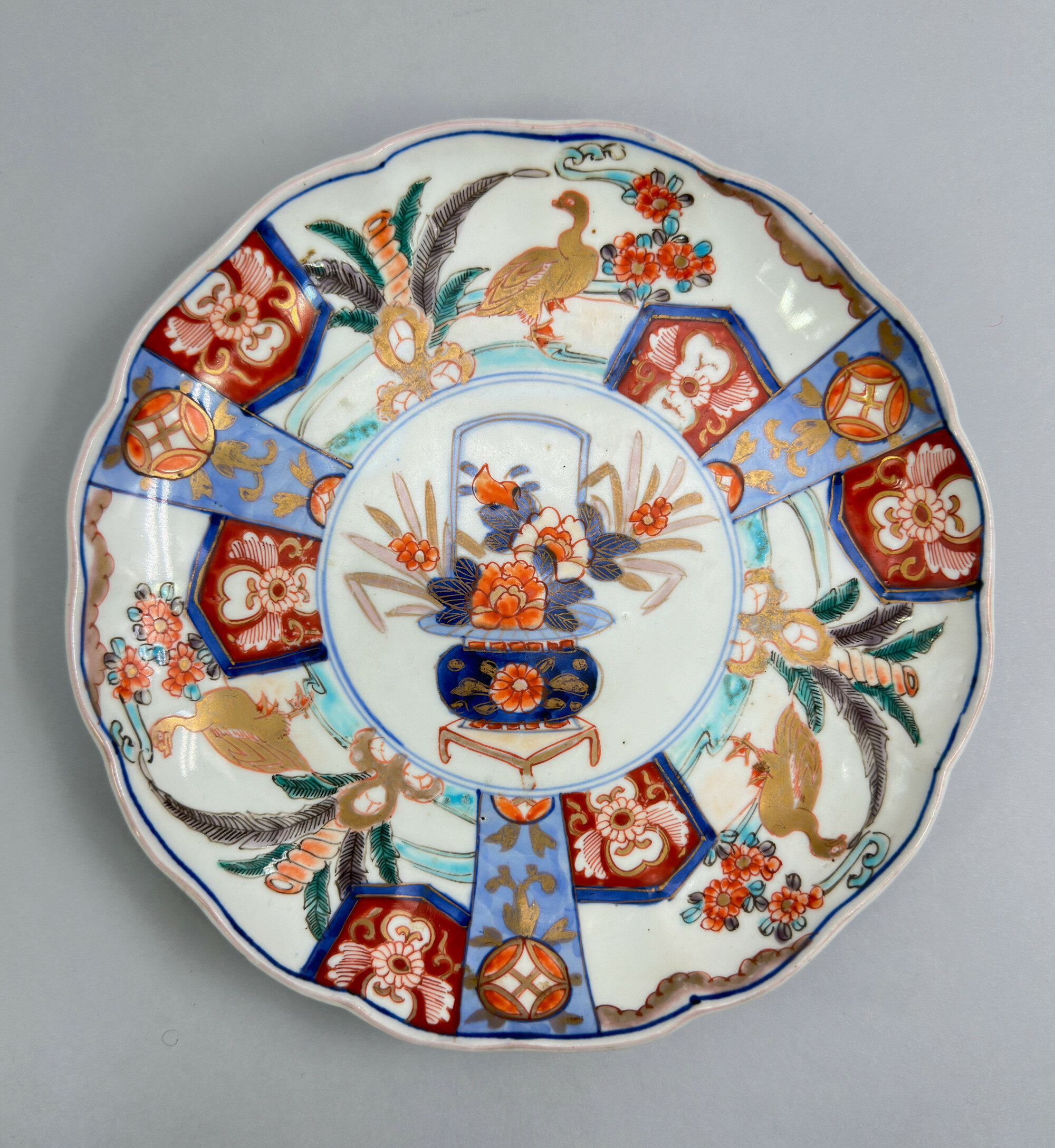
Japanese Arita Dish circa 1880
Price: £45The town of Arita in the former Hizen Province, northwestern Kyūshū island was a major cente for the production of porcelains in Japan. Best known for blue and white pieces it also produced polychrome wares as well, including the familiar imari colourings. While similar to Imari, the wider palette of colours used here is usually termed ‘Arita’ and the decorative appeal of the style is clear. This plate probably comes from an original set of five and its quality is much above average. Dating is to the Meiji era (1868 - 1912) probably around 1880.
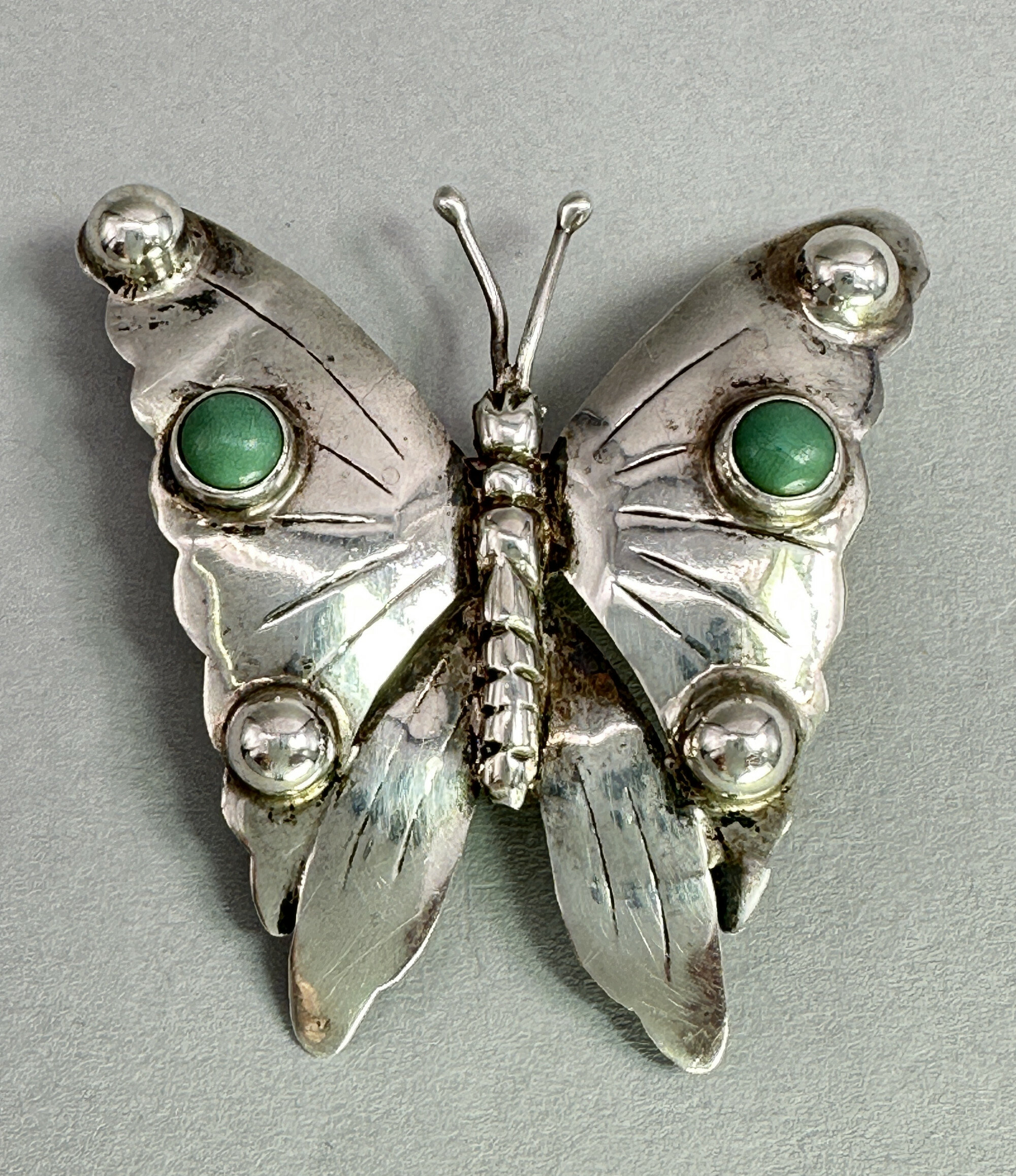
Silver Brooch in the form of a Butterfly, Taxco 1940s
Price: £65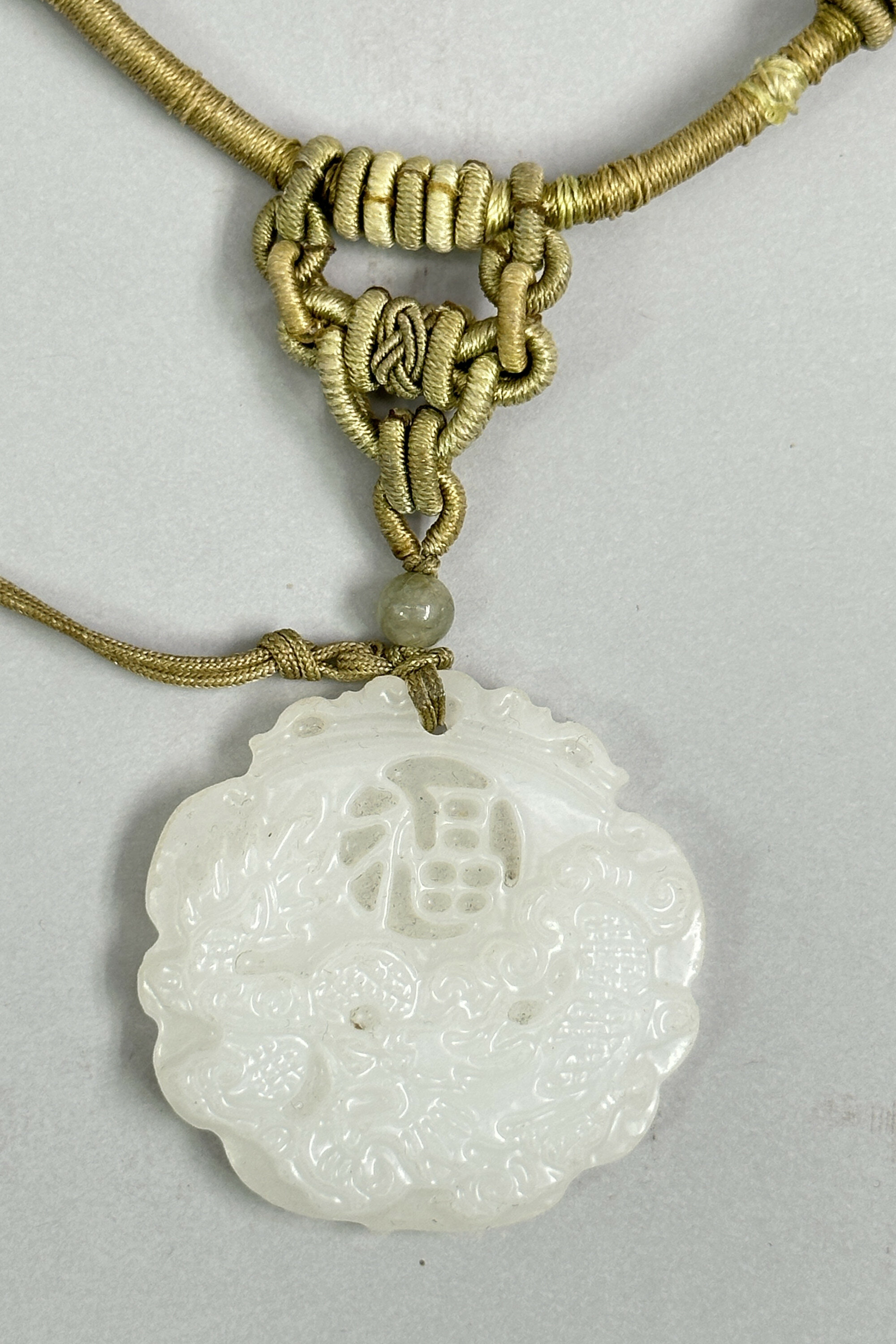
A very finely carved white pendent on traditional silk cord, Modern
Price: £25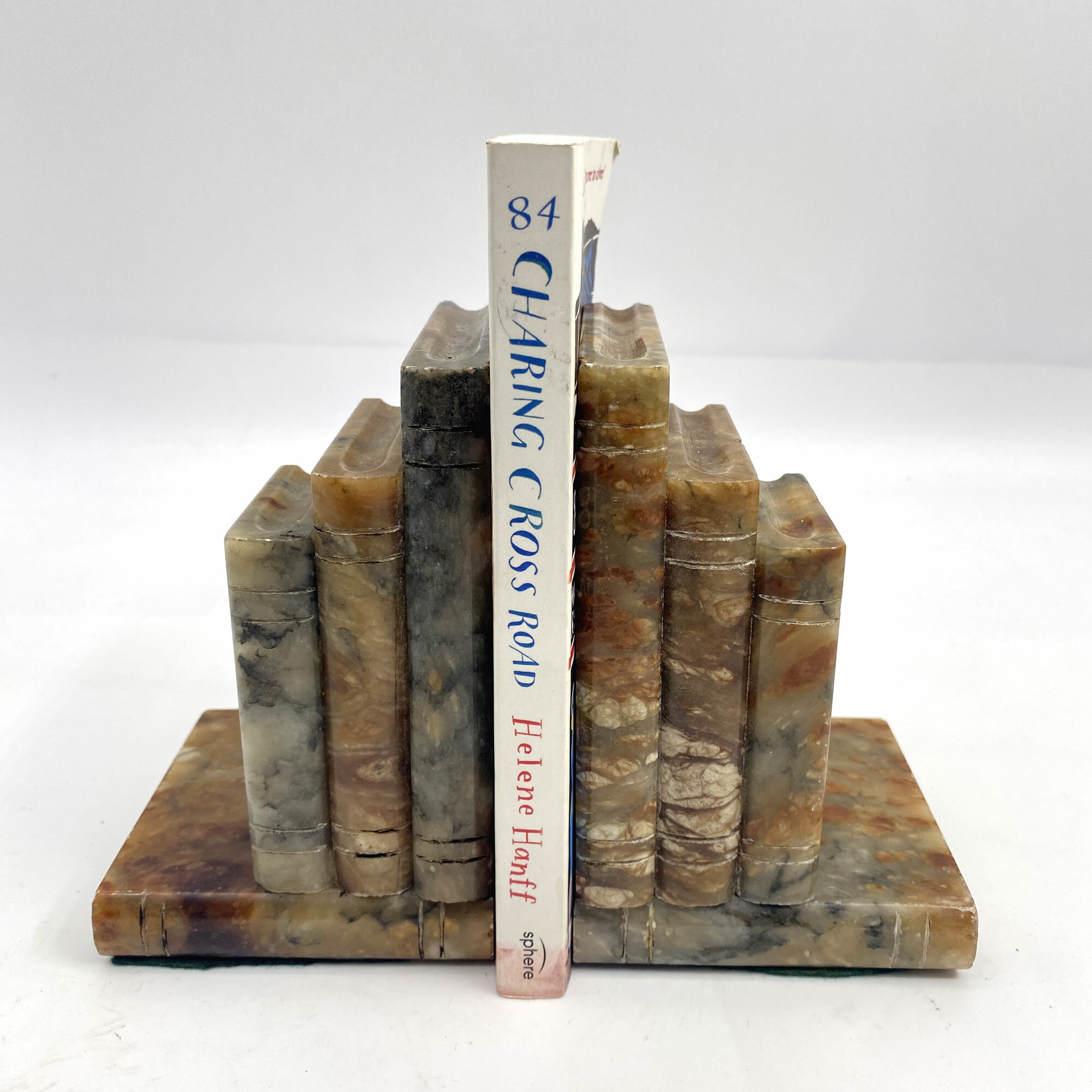
Pair of Italian Art Deco style alabaster Bookends in the shape of books, first half C20th
Price: £75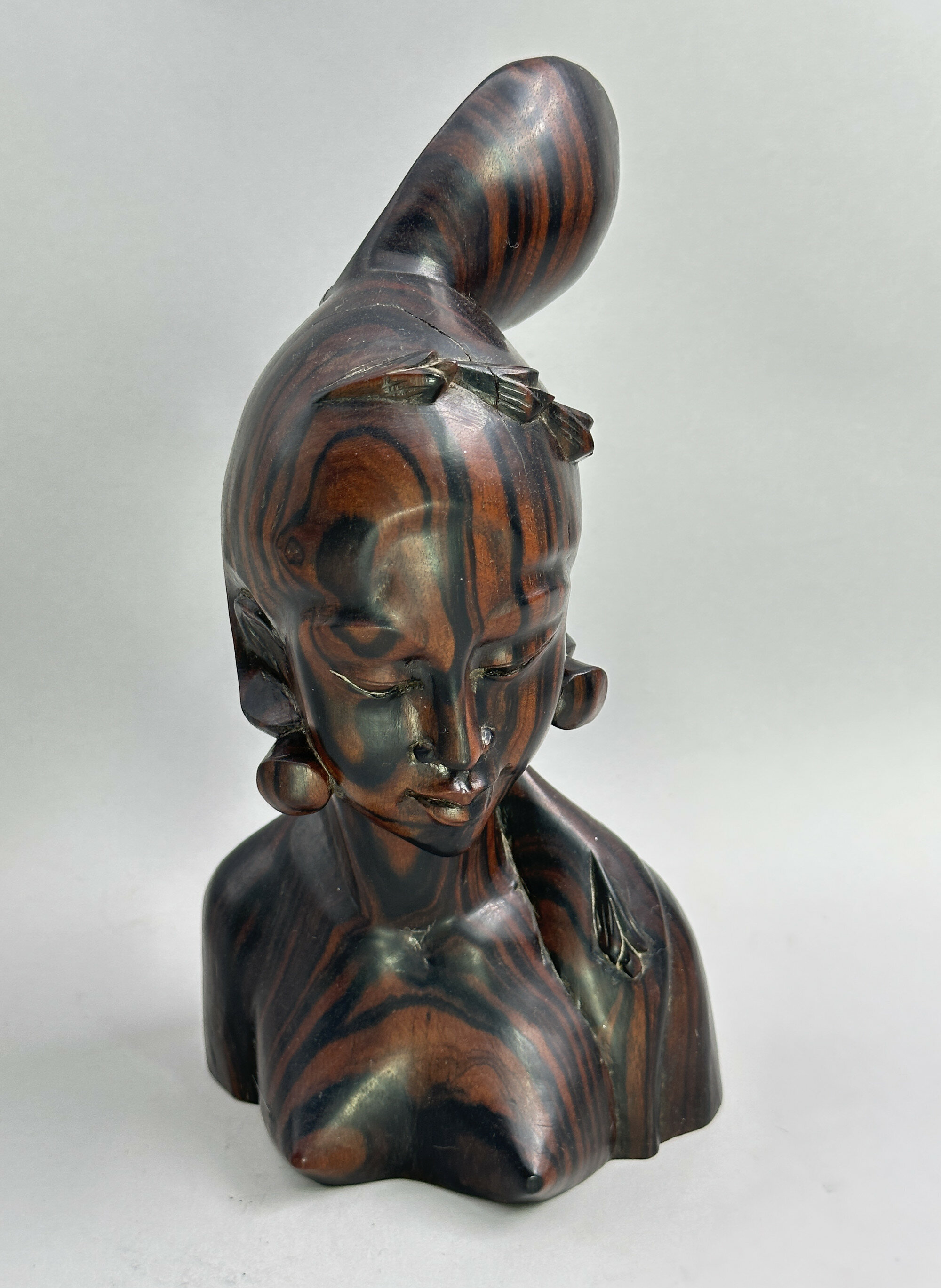
Vintage Carved wood bust of a Lady, Bali, Indonesia, second half C20th
Price: £75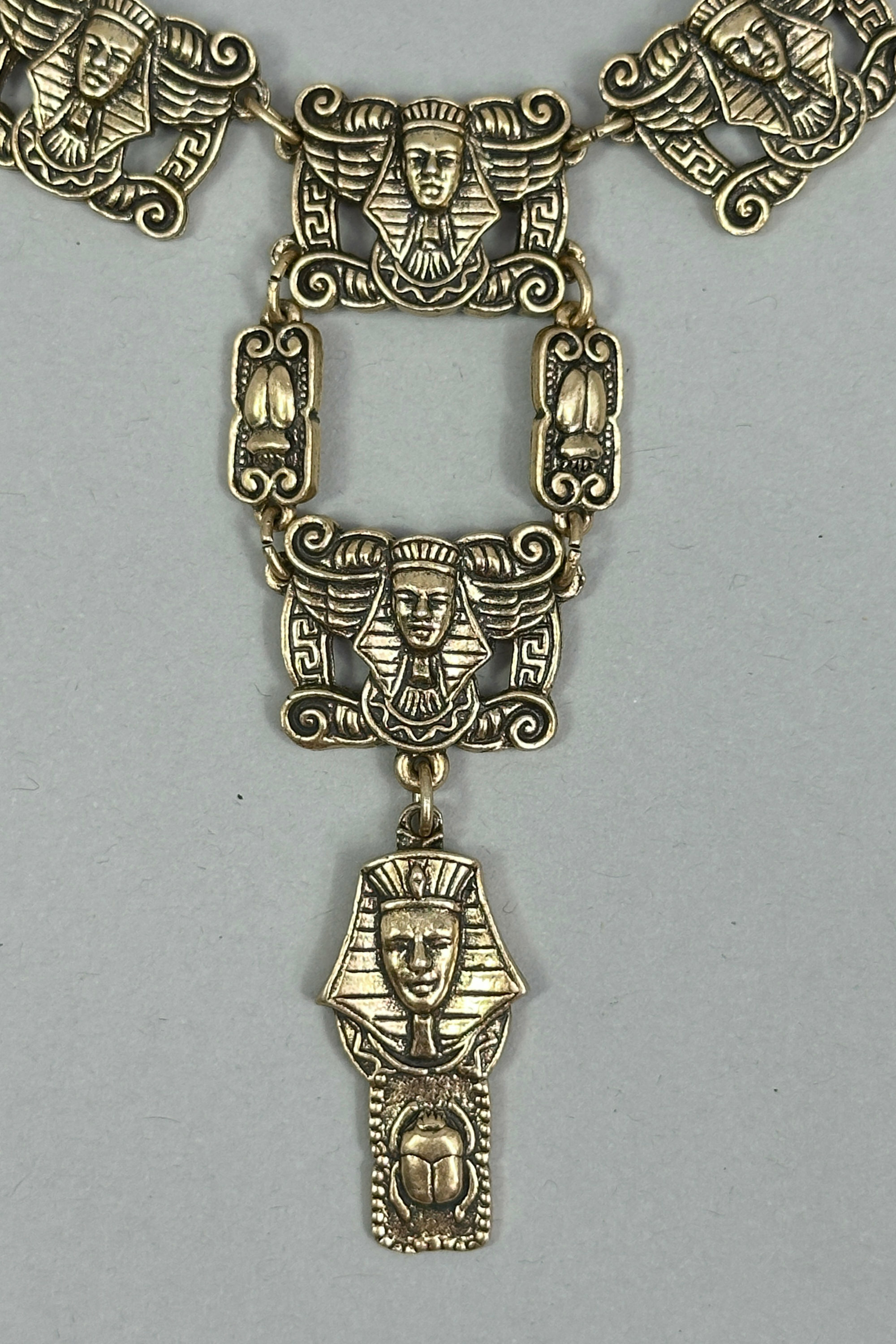
Egyptian Revival necklace depicting Tutankhamun c1980
Price: £45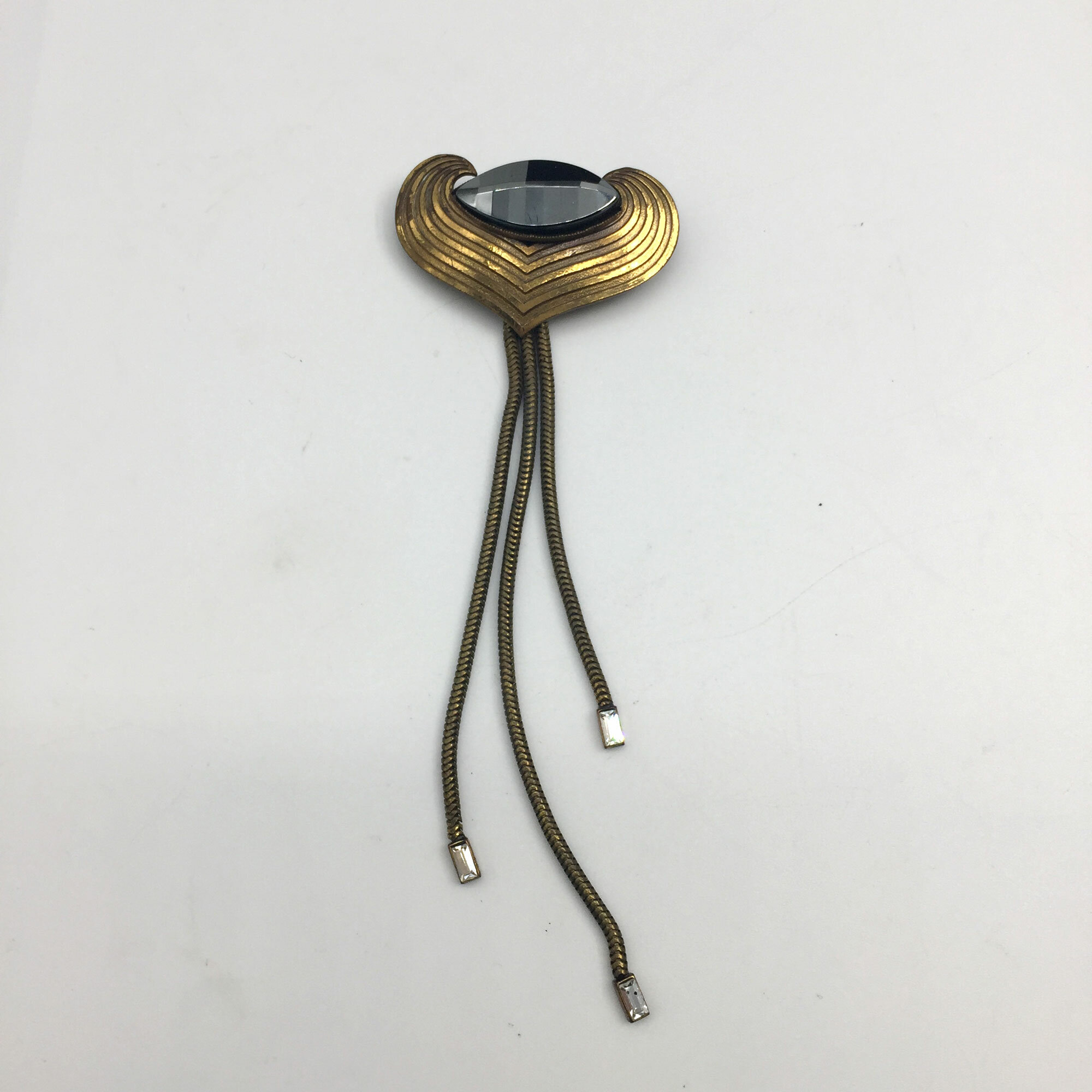
Rare Ermani Bulatti brooch 1980s
Price: £45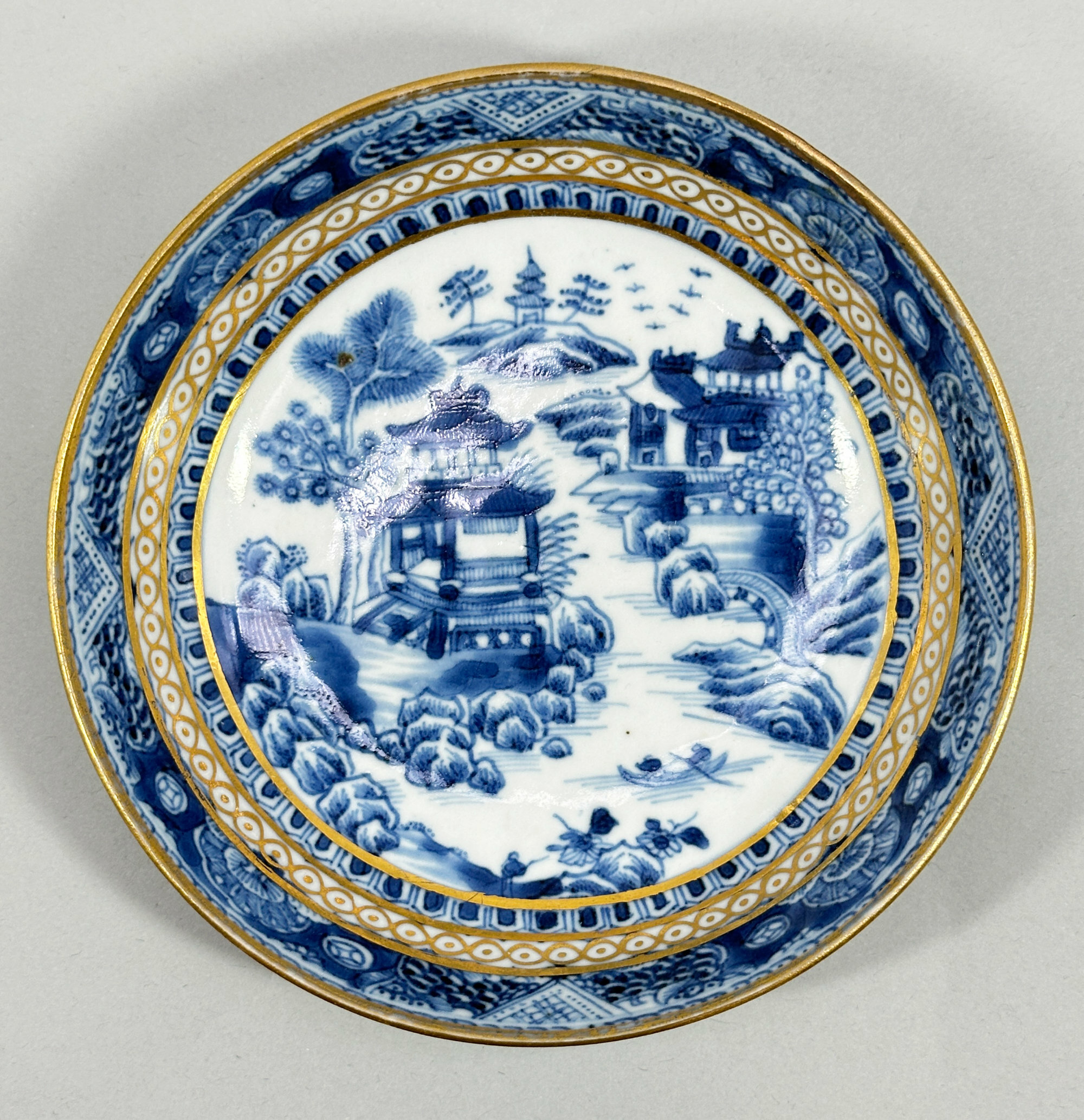
Chinese Export Nanking Pattern Saucer, Qianlong period (1736-1795)
Price: £75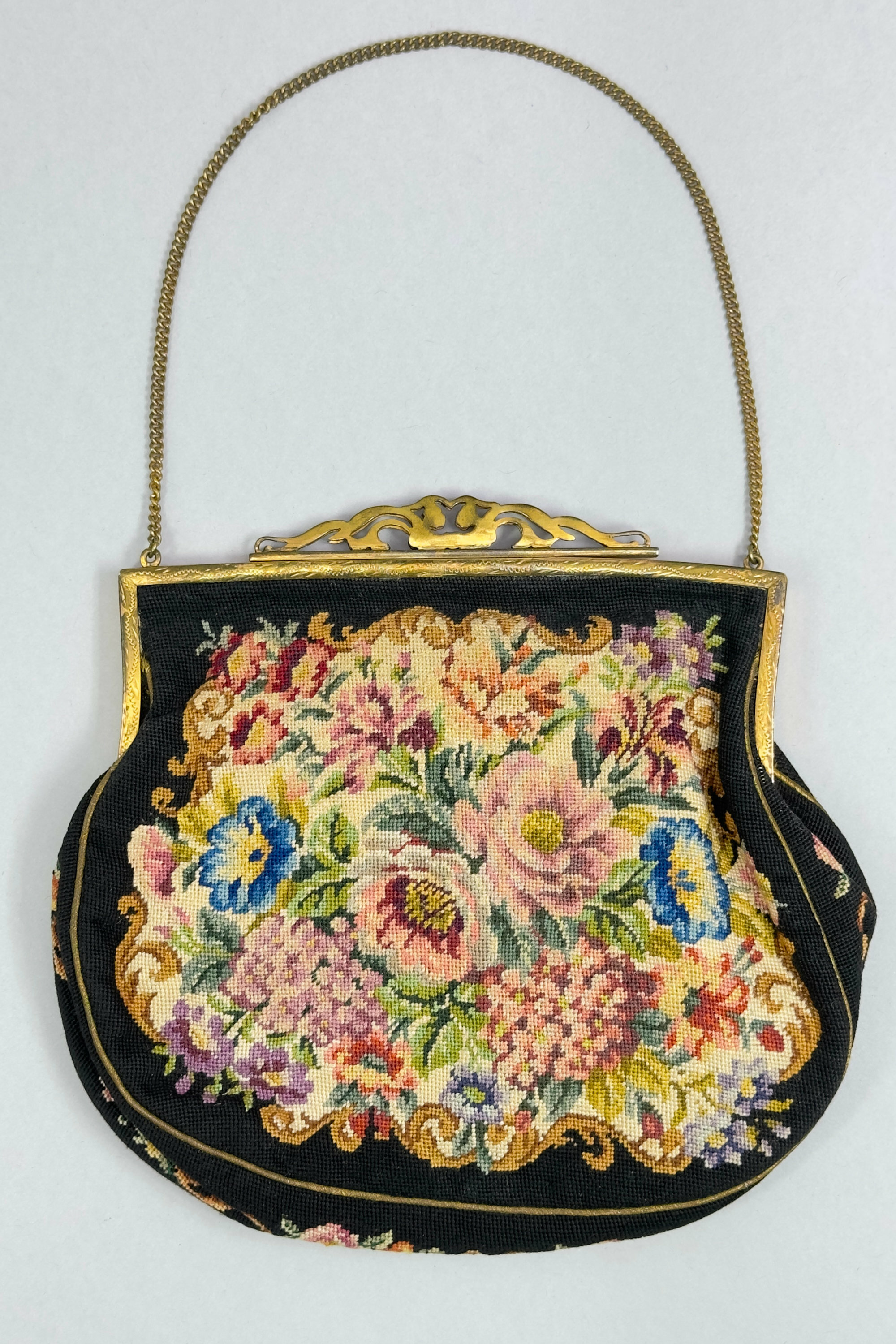
Vintage Petit Point Tapestry Bag, Austria, 1920s
Price: £15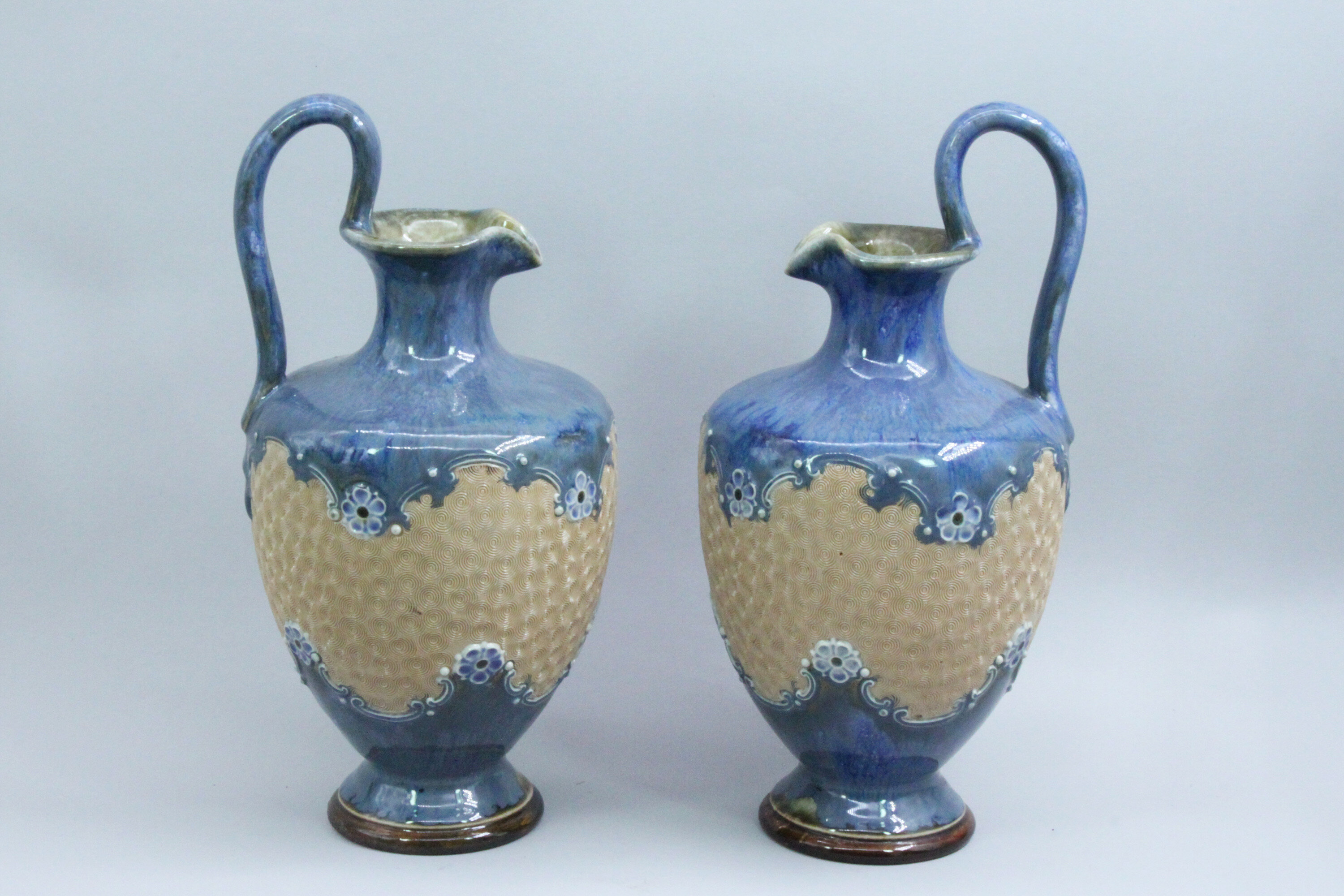
A Pair of Royal Doulton Ewers, marked, early C20th
Price: £150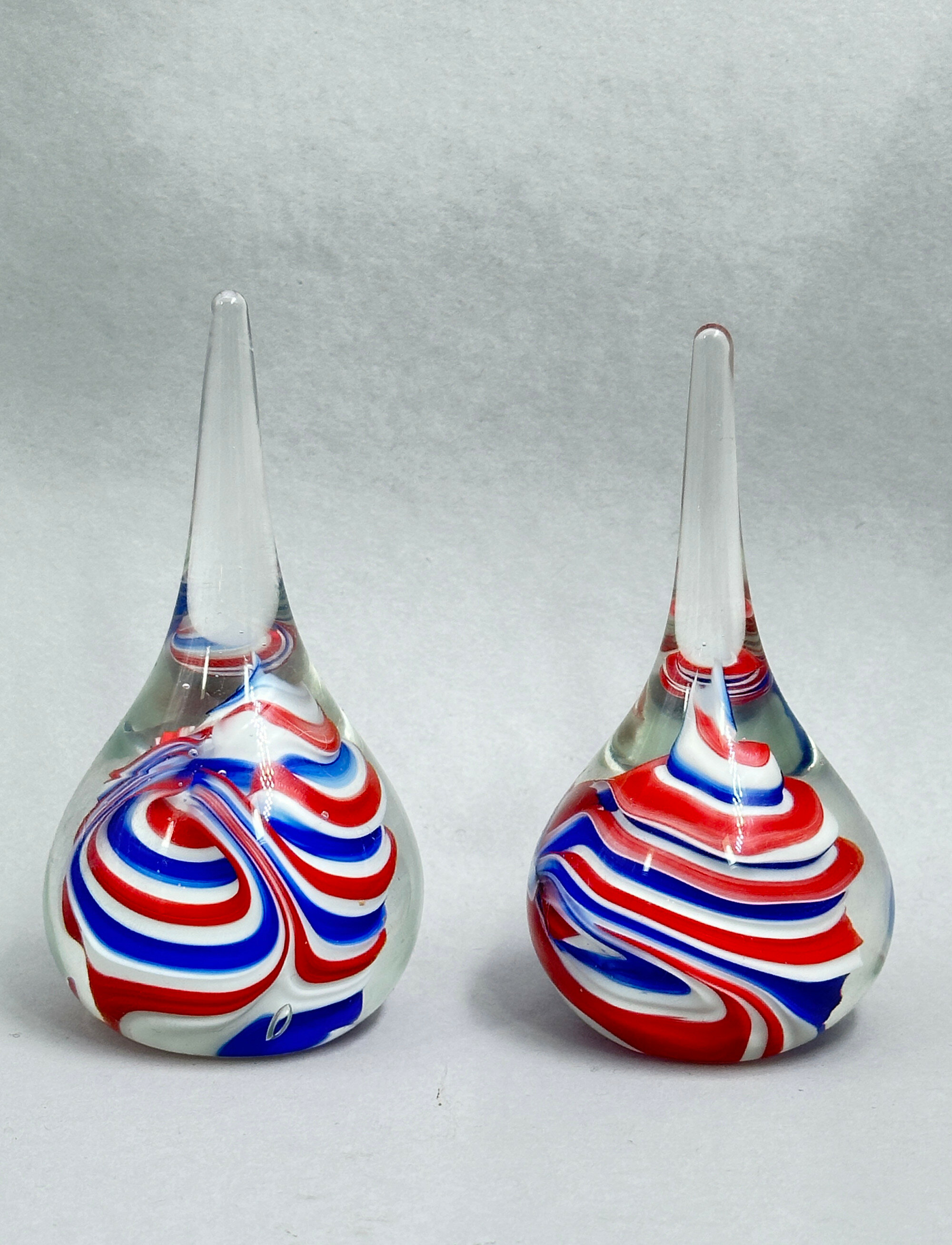
A Pair of Glass Vases or Paperweights, probably Selkirk Glass, Scotland, 1980s/1990s
Price: £25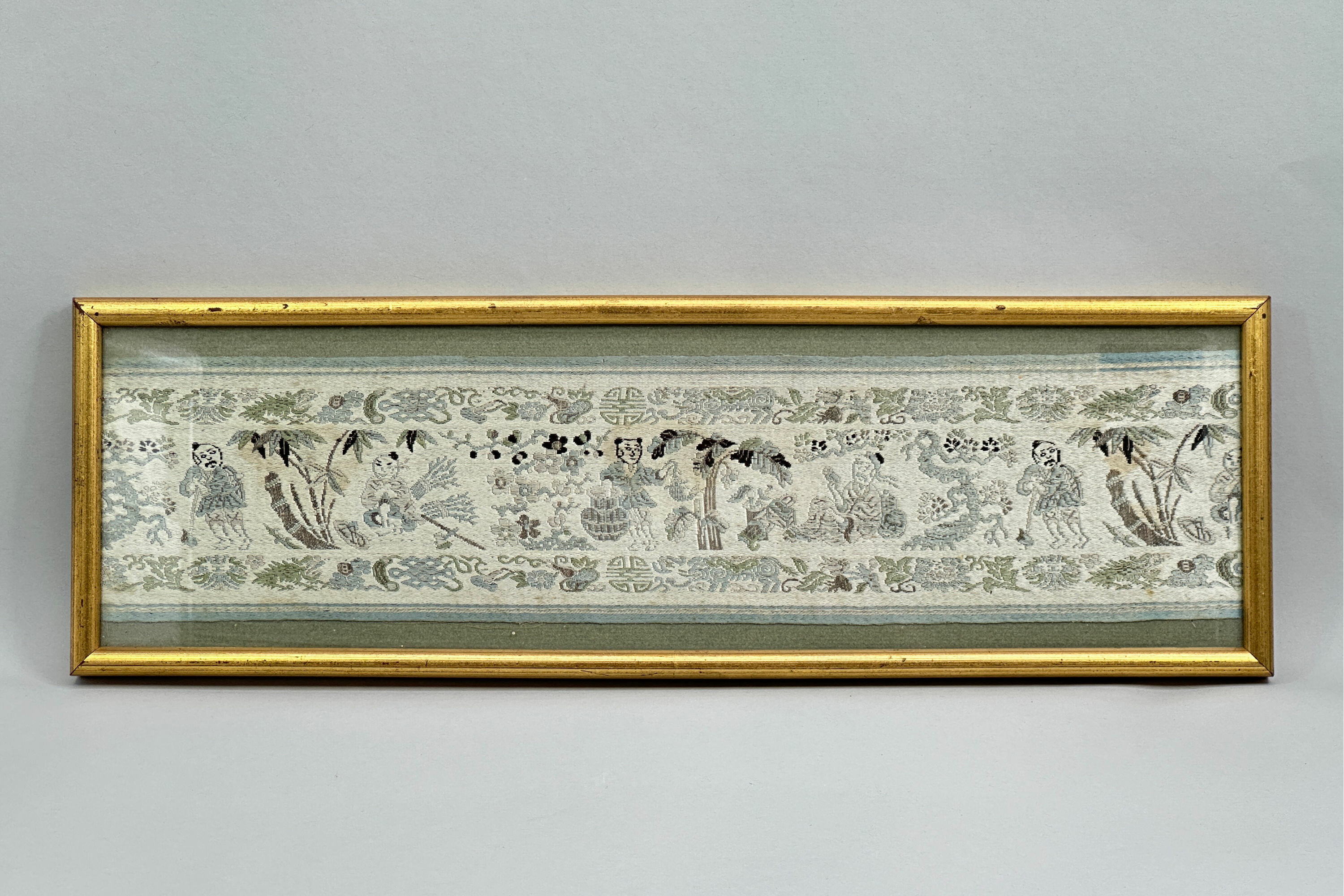
Framed Chinese Silk Embroidered Runner Panel, garden scenes, C20th
Price: £15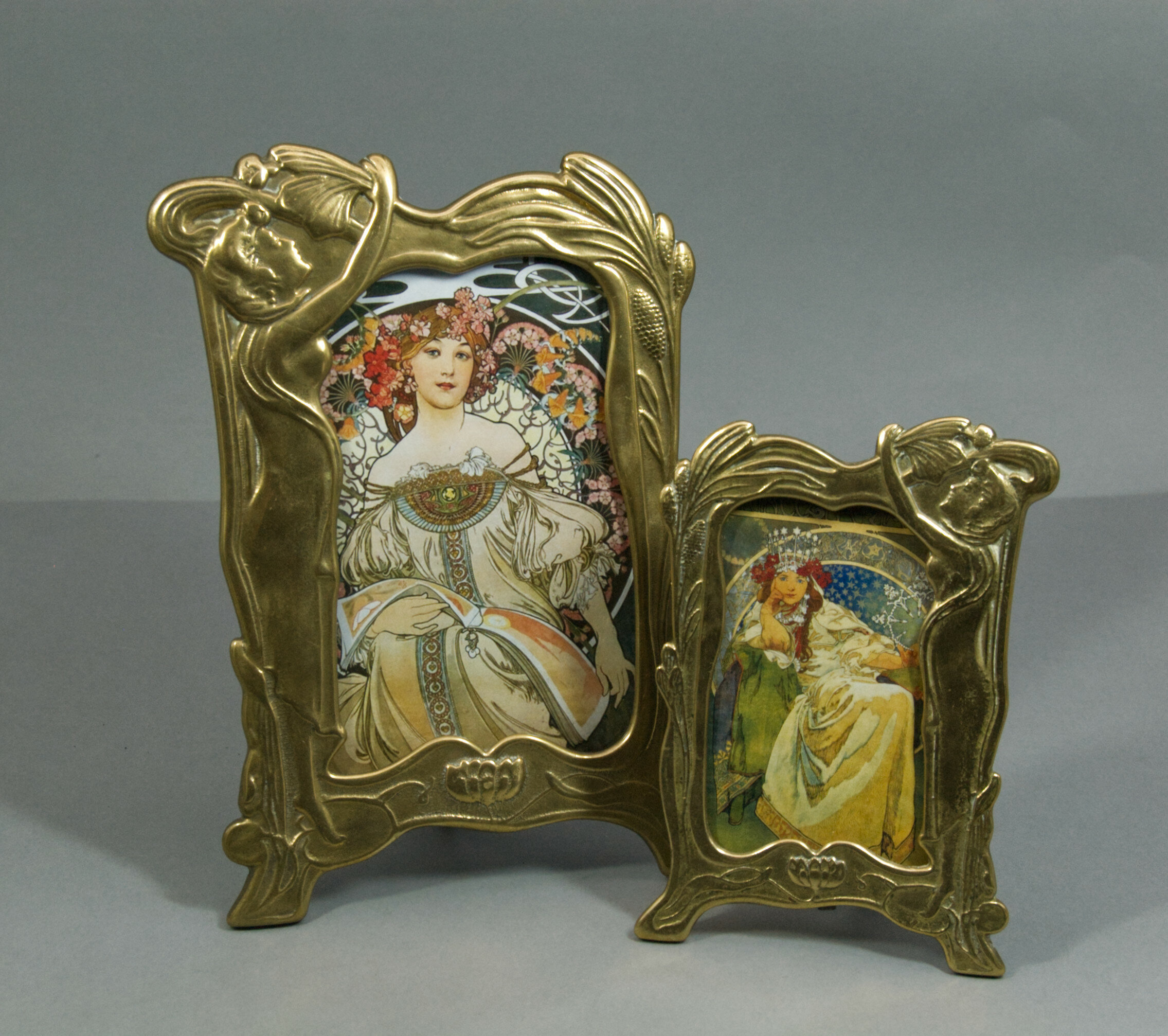
A Complementary Pair of Gilt Metal Art Nouveau style picture frames, 20th Century
Price: £45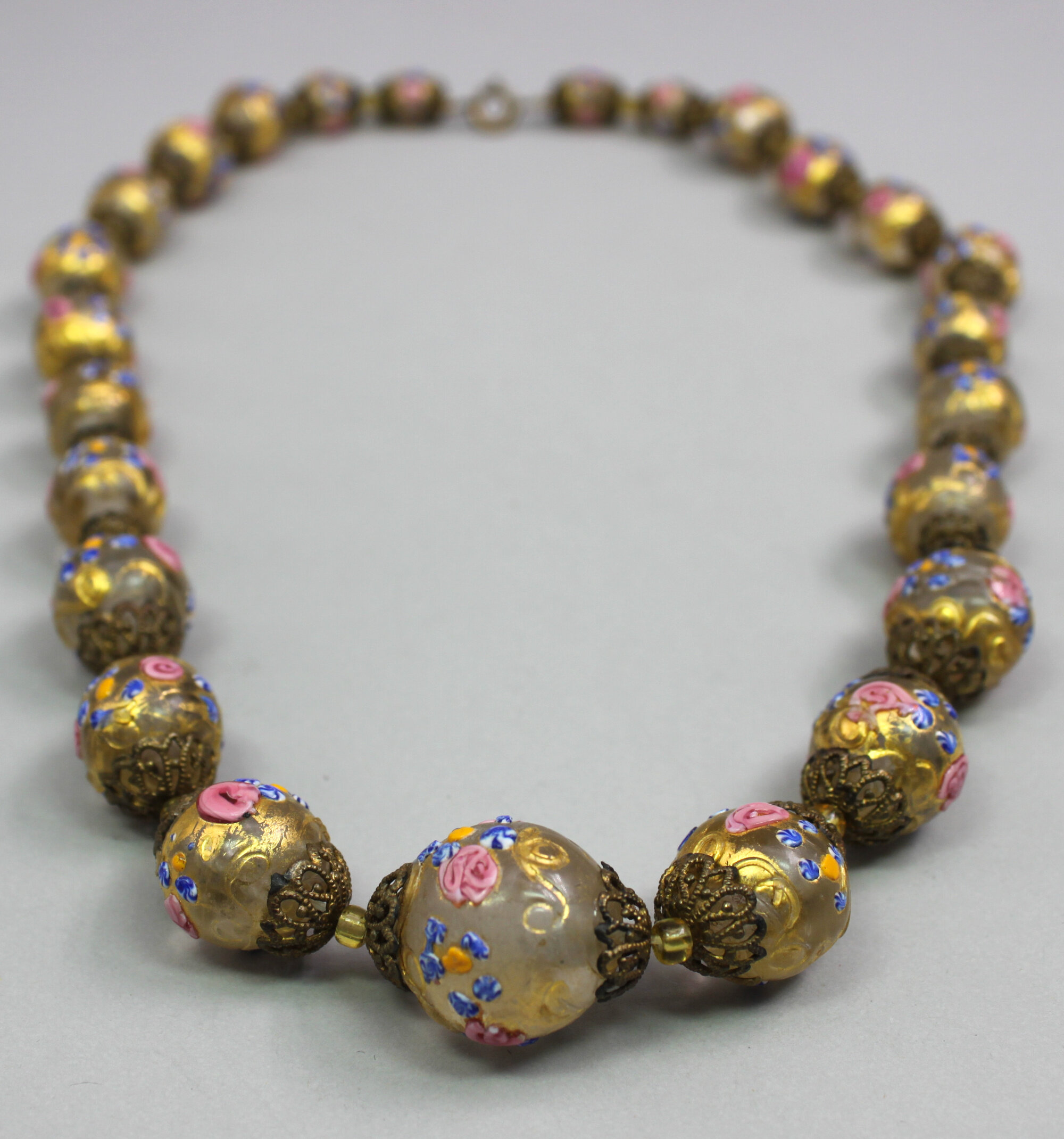
Victorian Grand Tour Wedding Cake glass necklace
Price: £125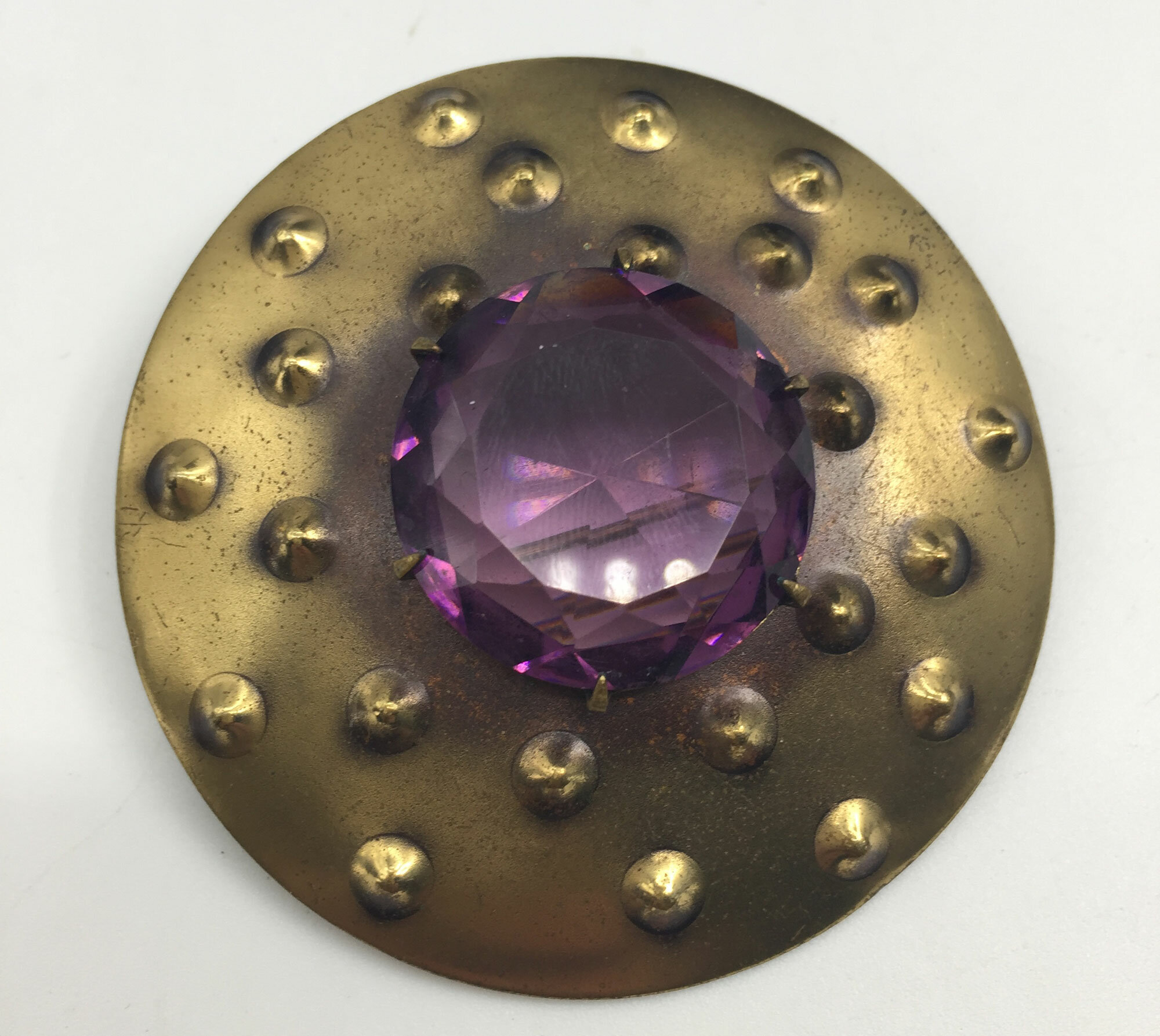
Art Deco Scottish shield brooch
Price: £20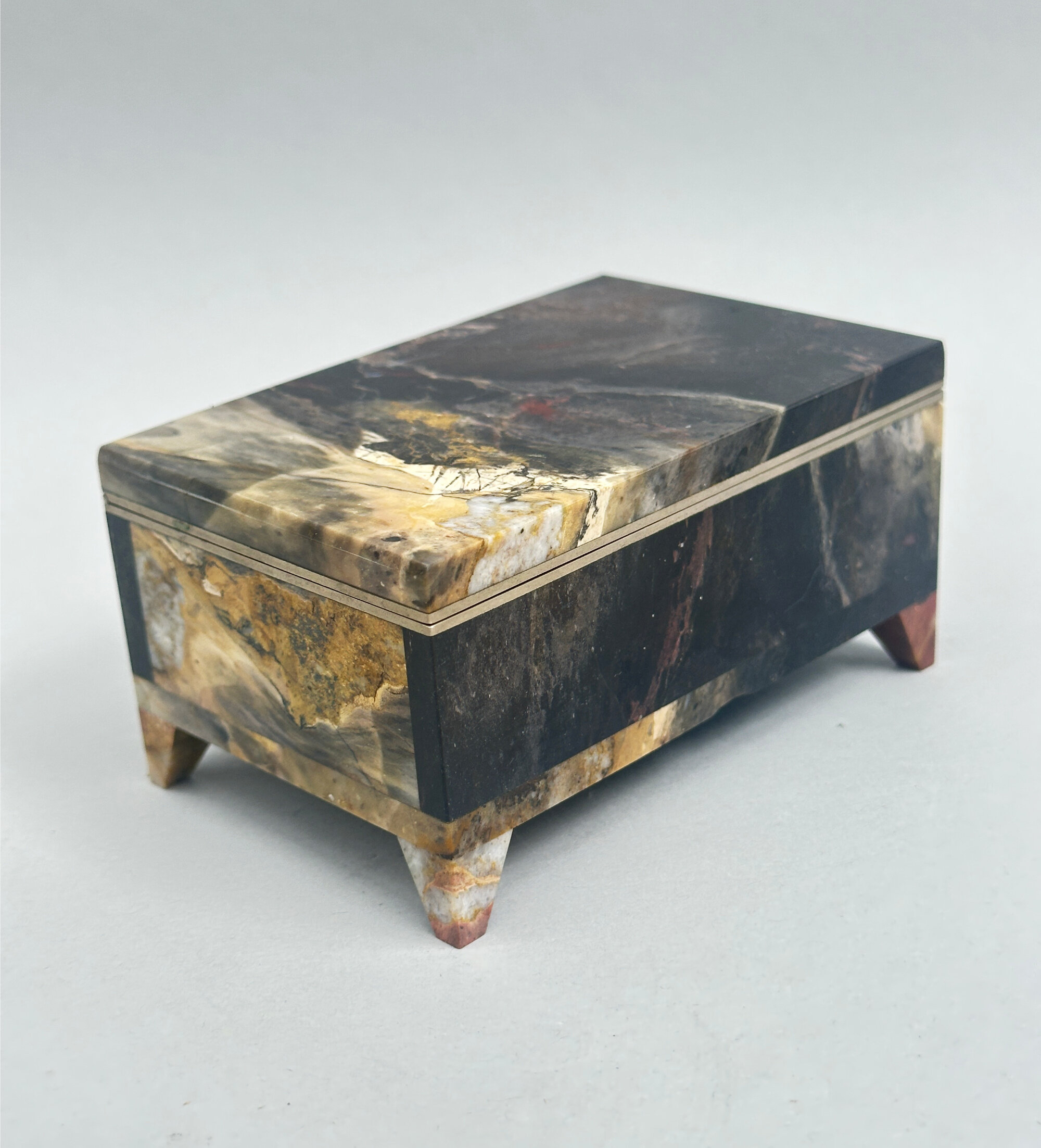
Rectangular Box and Cover, Basanite Jasper, C20th
Price: £95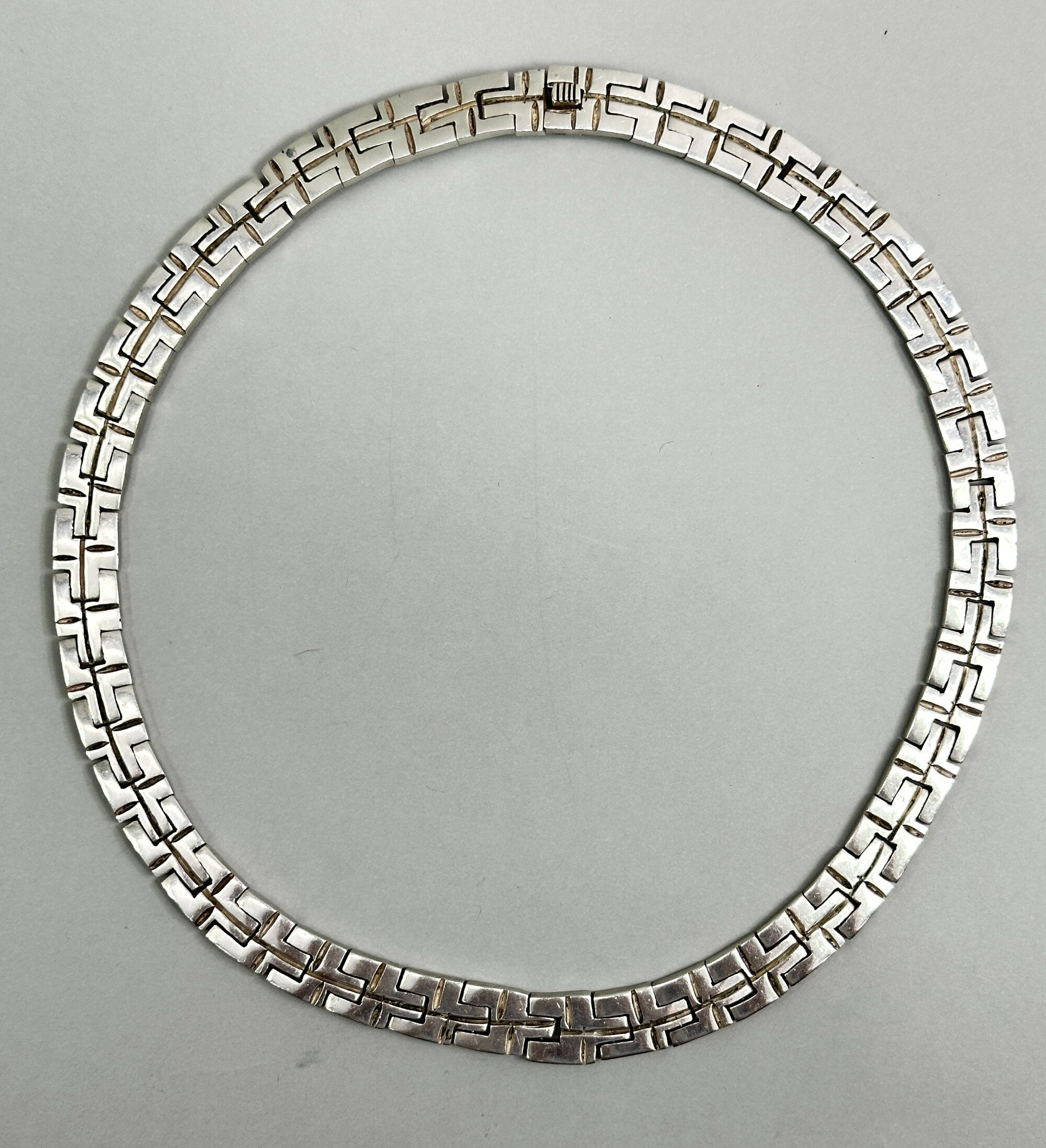
Taxco collar necklace by Rubi Ramirez c1950
Price: £350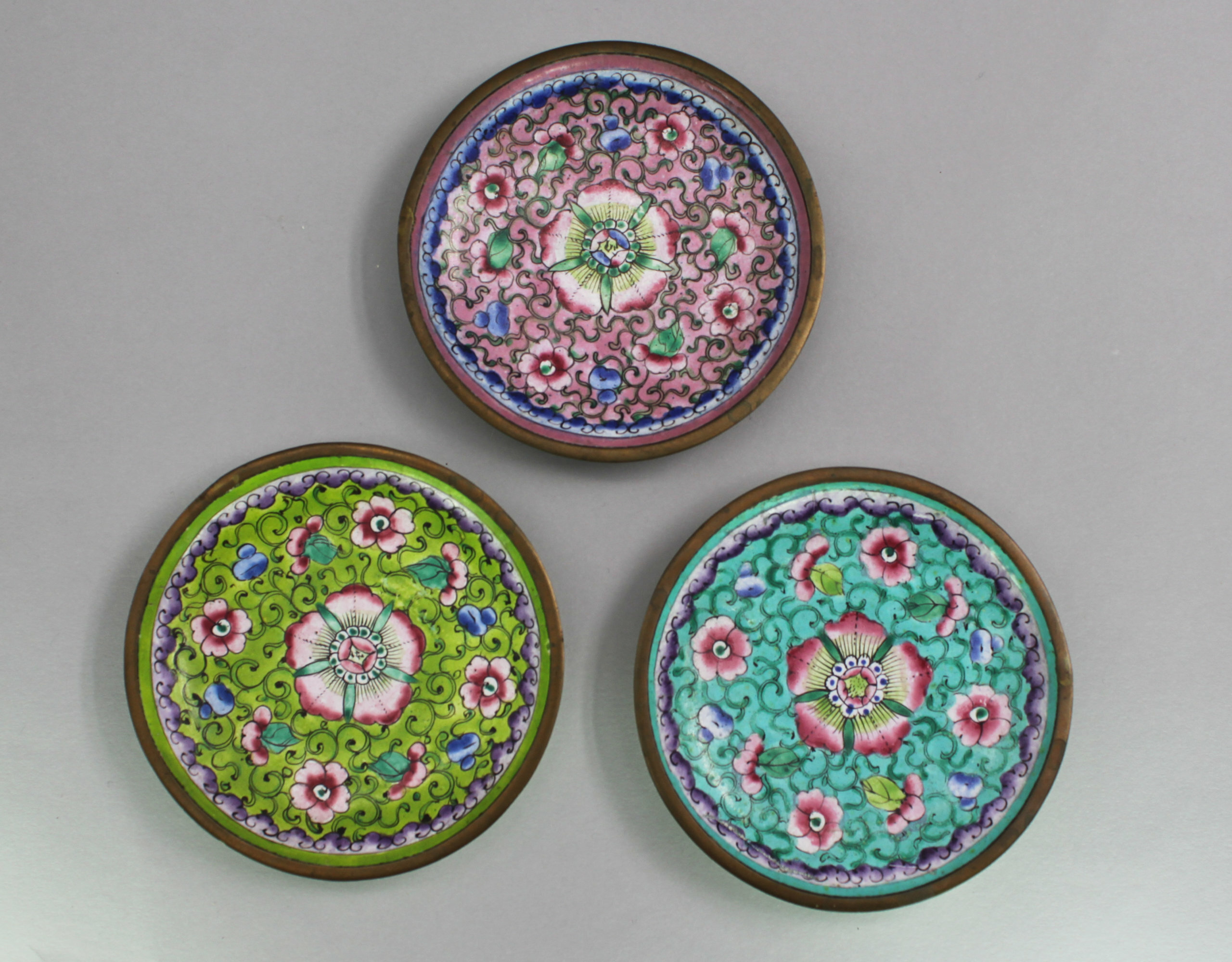
Three Chinese Canton Enamel Dishes, Nineteenth Century
Price: £45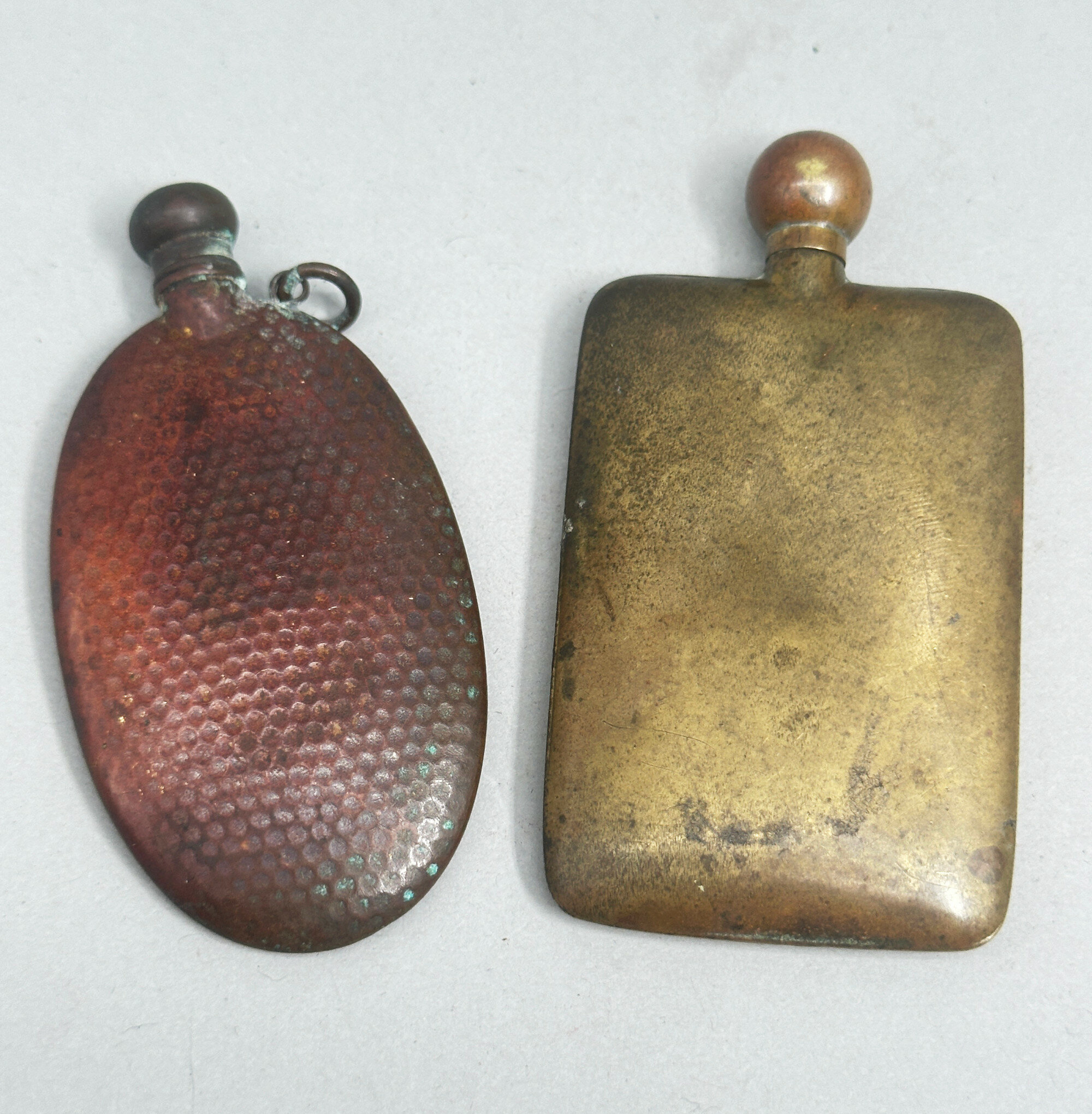
Two small metal perfume Flasks and Stoppers, 1920s
Price: £35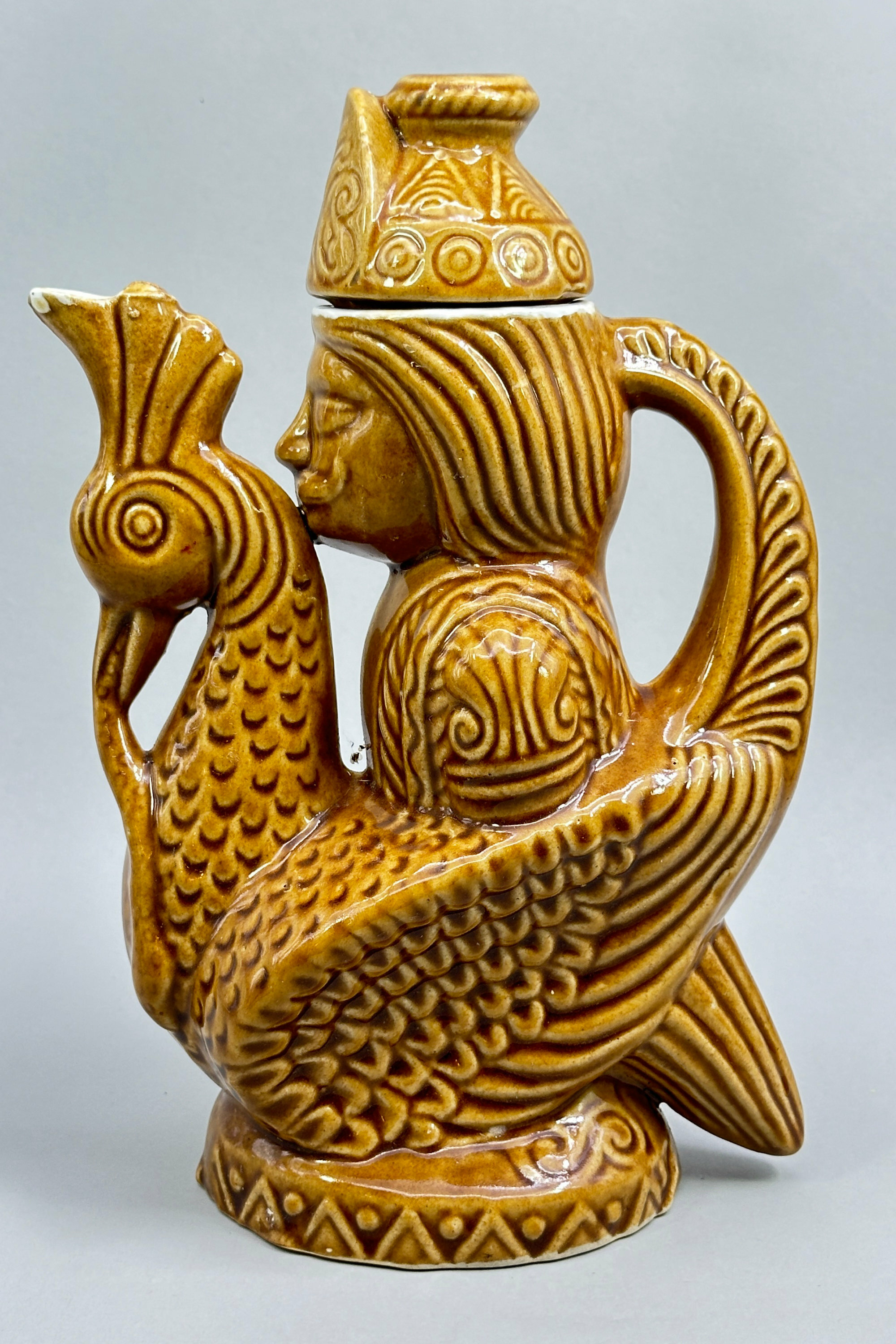
Bird form ewer with cover, possibly Russian c1960
Price: £45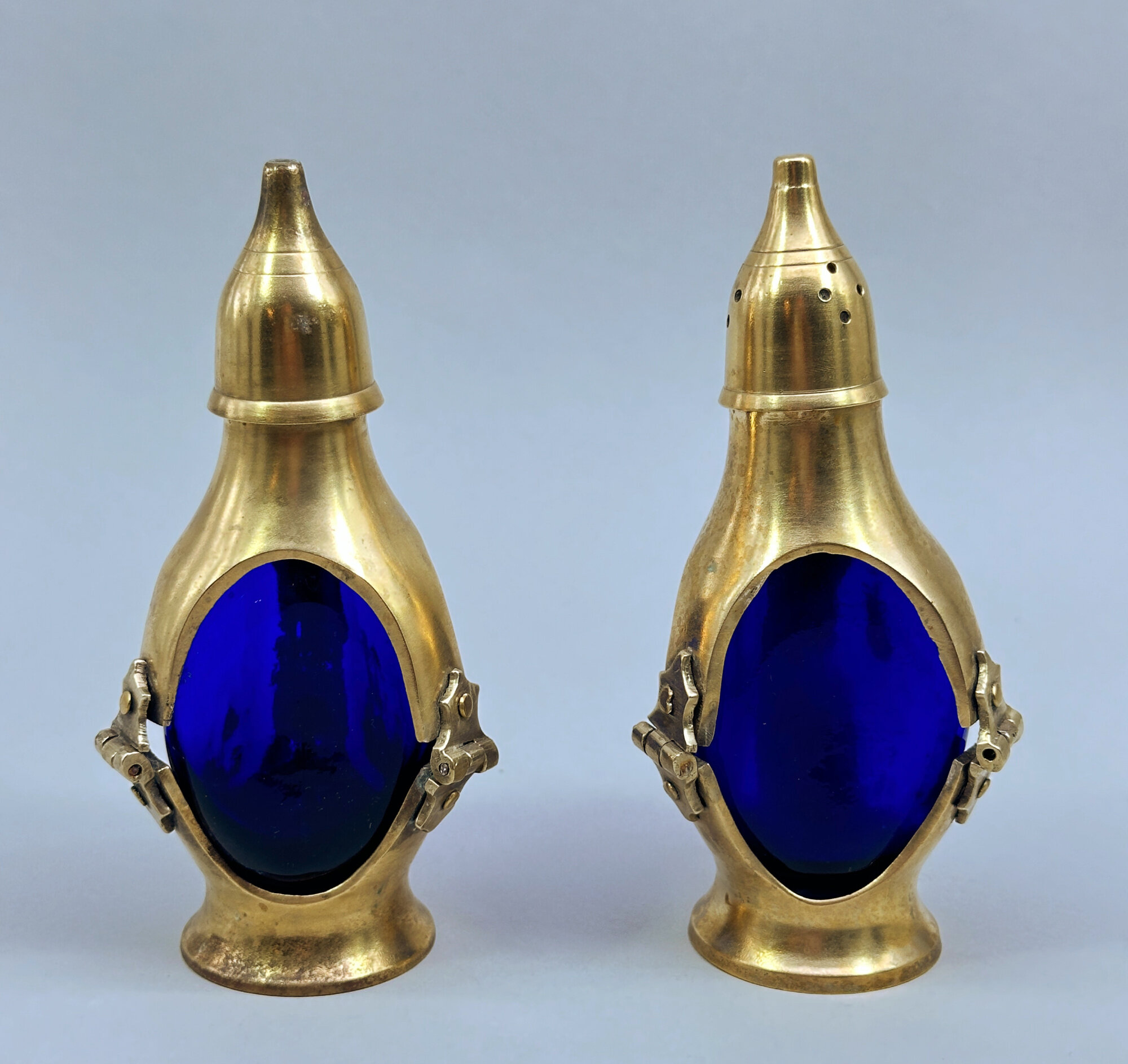
Arts and Crafts Brass and Cobalt Glass Salt and Pepper, early C20th
Price: £55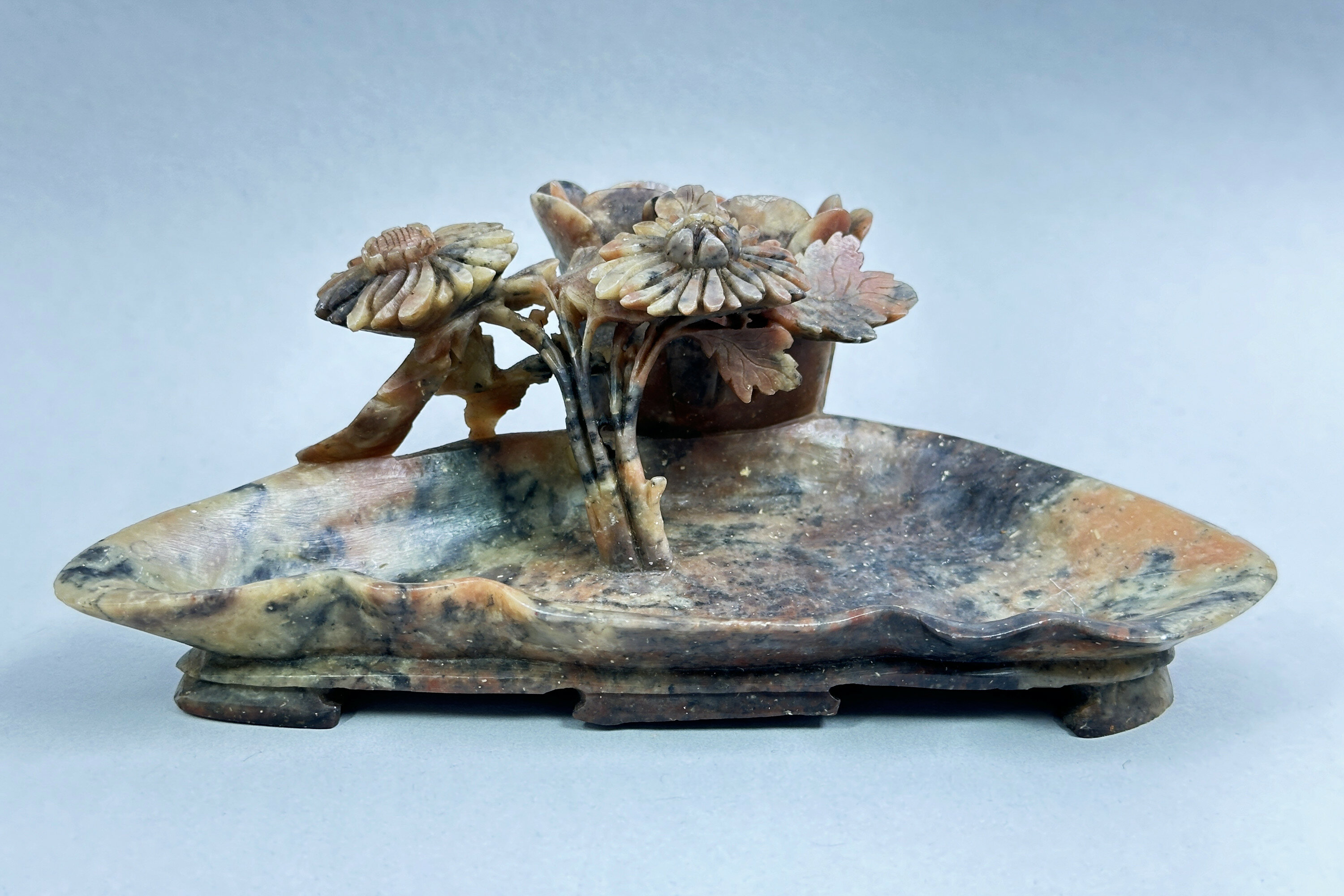
Chinese Soapstone Brushwasher with flowering lotus, early C20th
Price: £95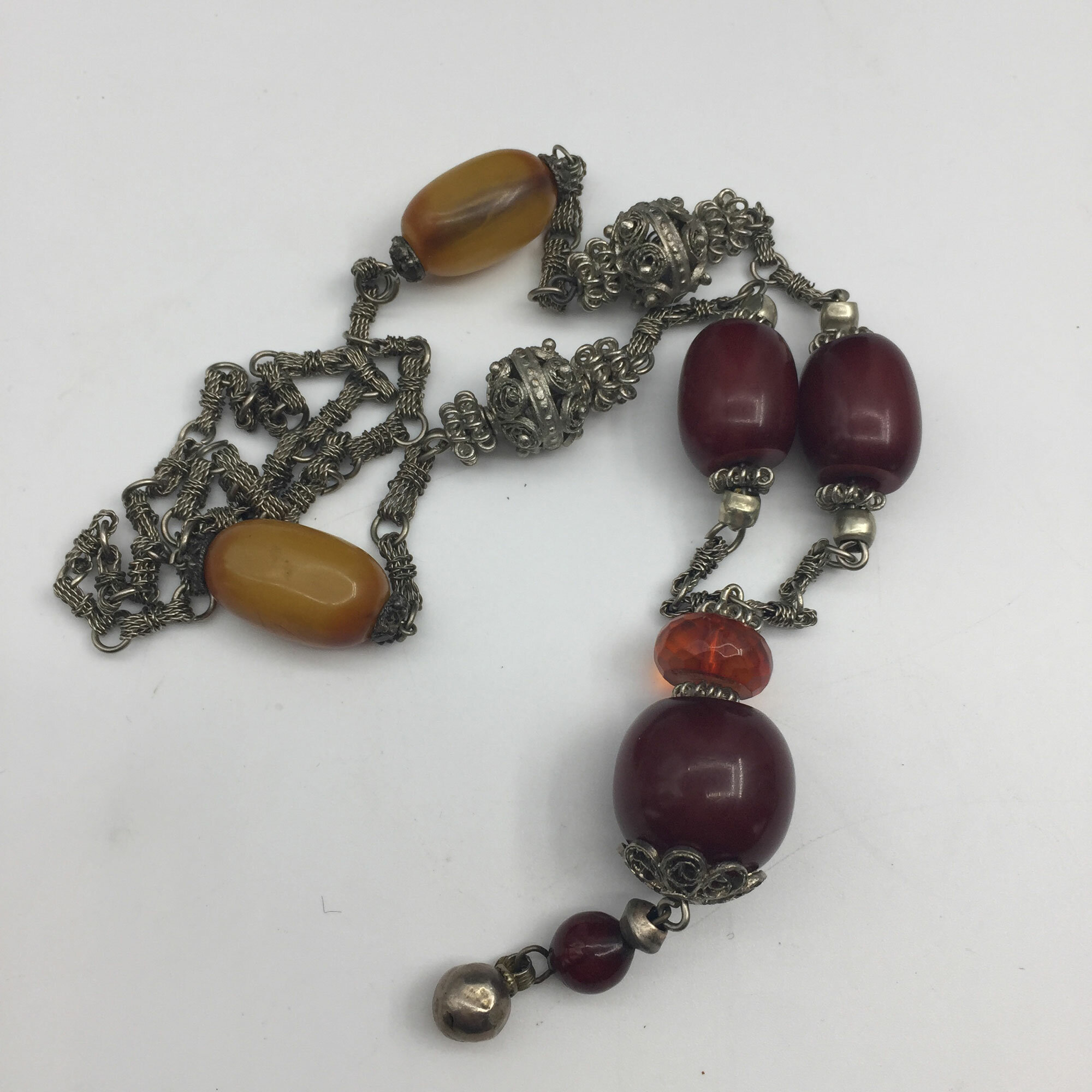
Stunning Amber and Islamic silver necklace
Price: £45
Chinese Republican Style small Famille Rose Ginger Jar and Cover, late c20th
Price: £20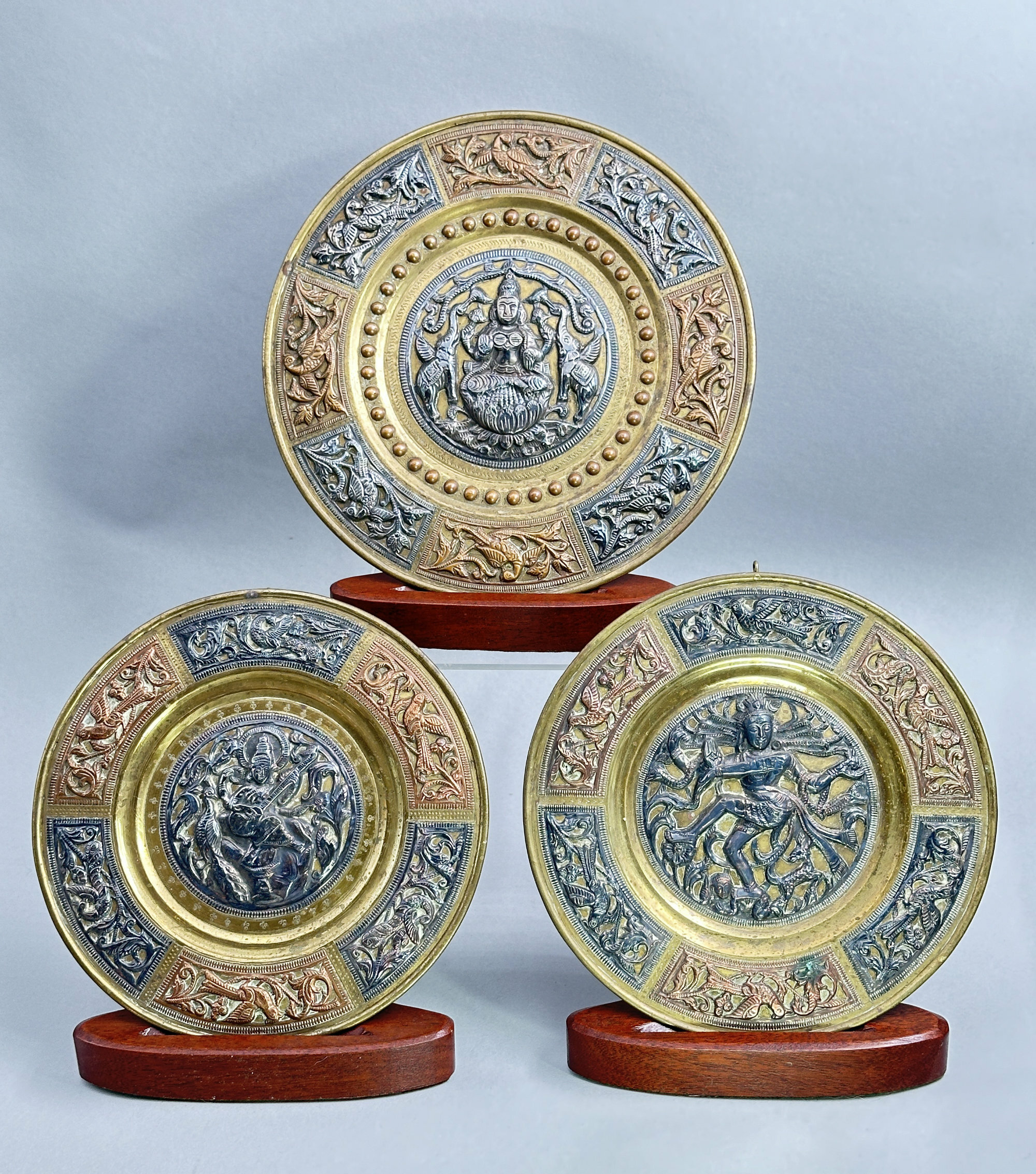
Three Indian Brass hanging plates, Thanjavur, C20th
Price: £55The style of decoration here is typical of the art brass hanging plaques produced by the metalworkers of Thanjavur, formerly known as Tanjore, from the late eighteenth century onwards. A Tanjore Art Plate consists of three components: the base plate (brass), a circular central relief panel of a deity worked in silver surrounded by relief panels in copper and silver often depicting flowers. Various deities are depicted here including the well known many armed Shiva. All the reliefs have milled borders but the wells are finished differently, some with engraved designs and one with circular bosses. Dating is probably to the mid C20th but the style of these pieces was continuous and relatively unchanging so an earlier period of manufacture is quite possible.
NB Stands for display purposes only and not included
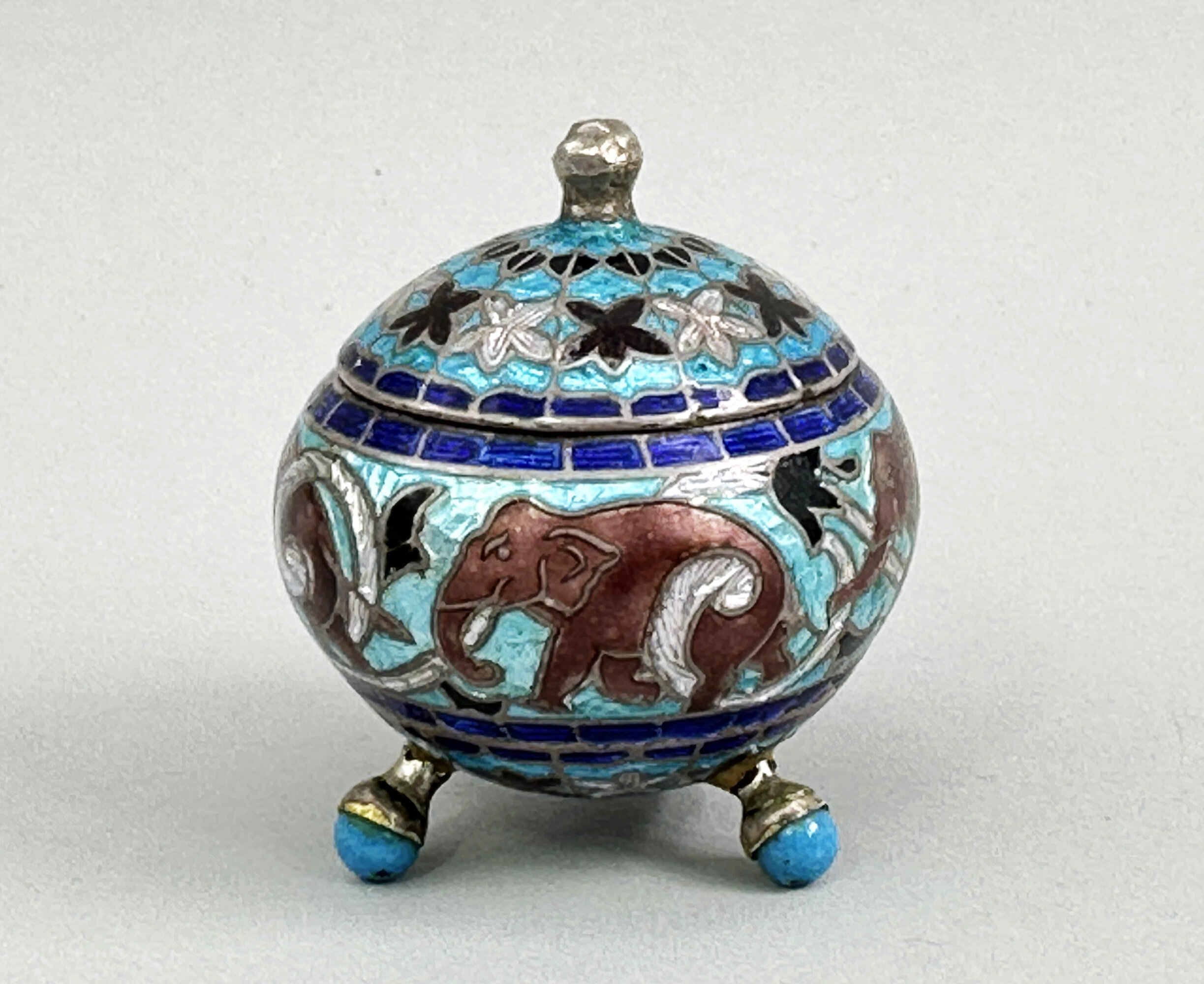
Indian Silver and Enamel pill or trinket Box, early C20th
Price: £55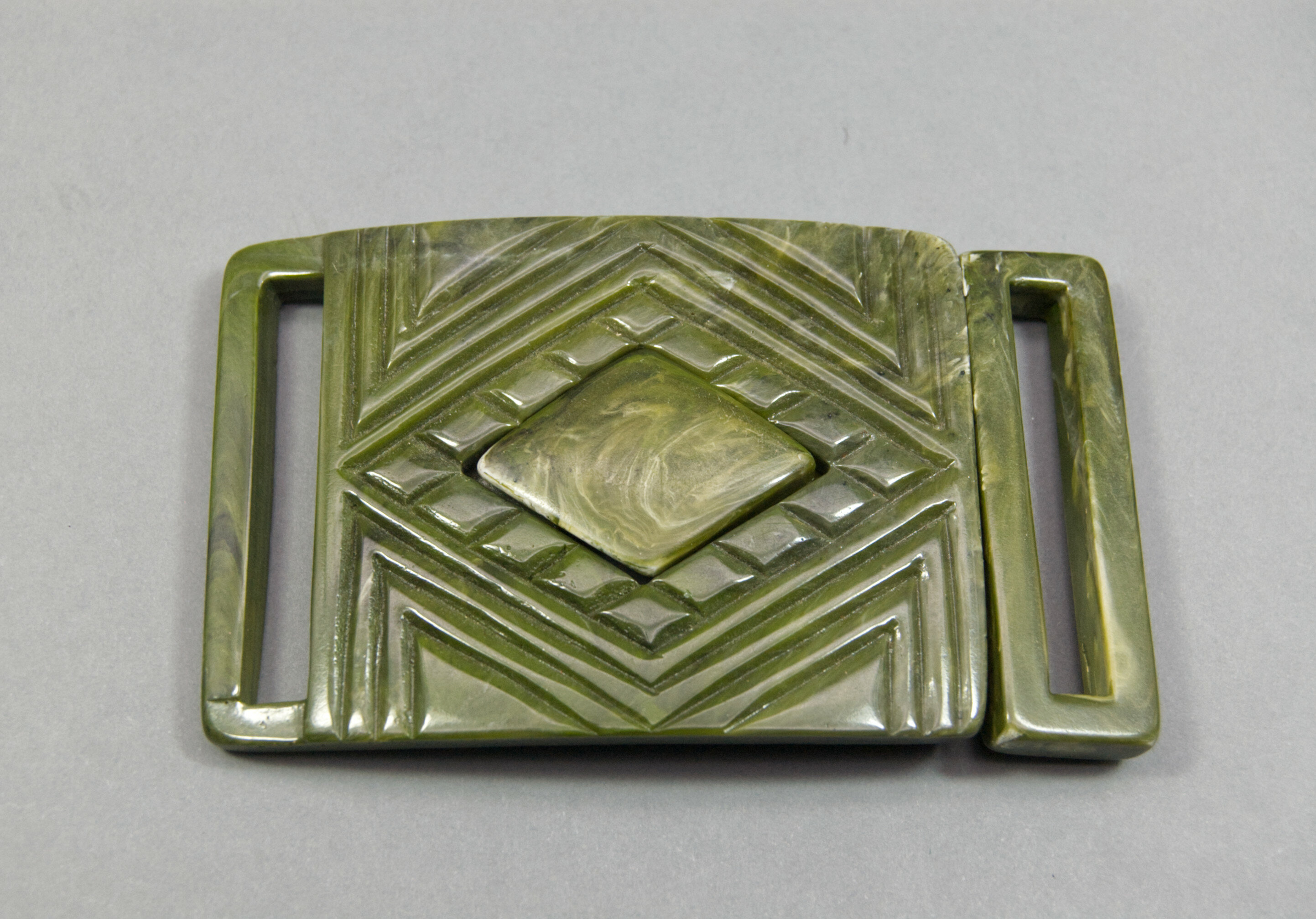
Large Art Deco green Bakelite Buckle with a label for Harlem Adler, American 1930s
Price: £35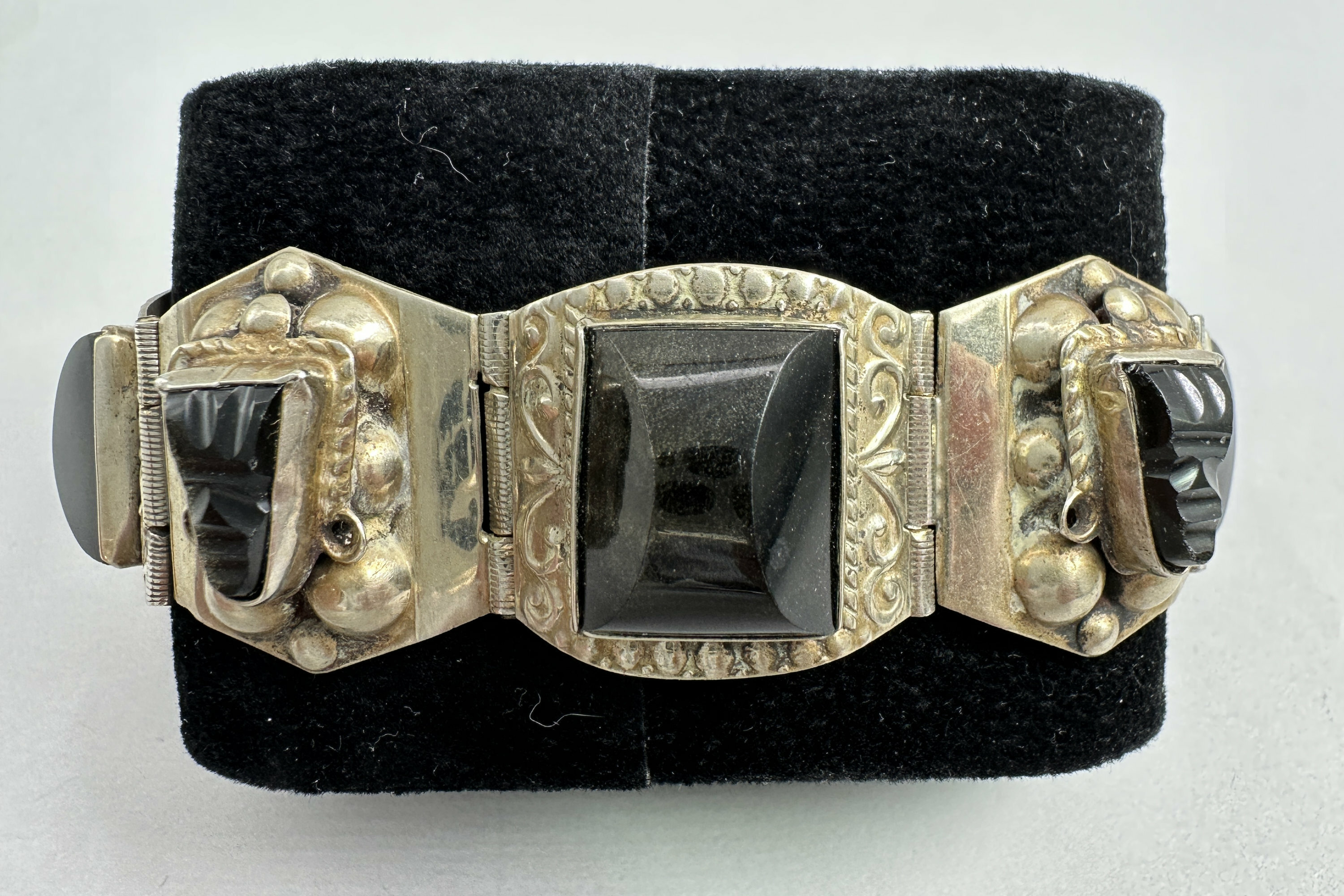
Taxco bracelet set with carved obsidian stones c1950
Price: £55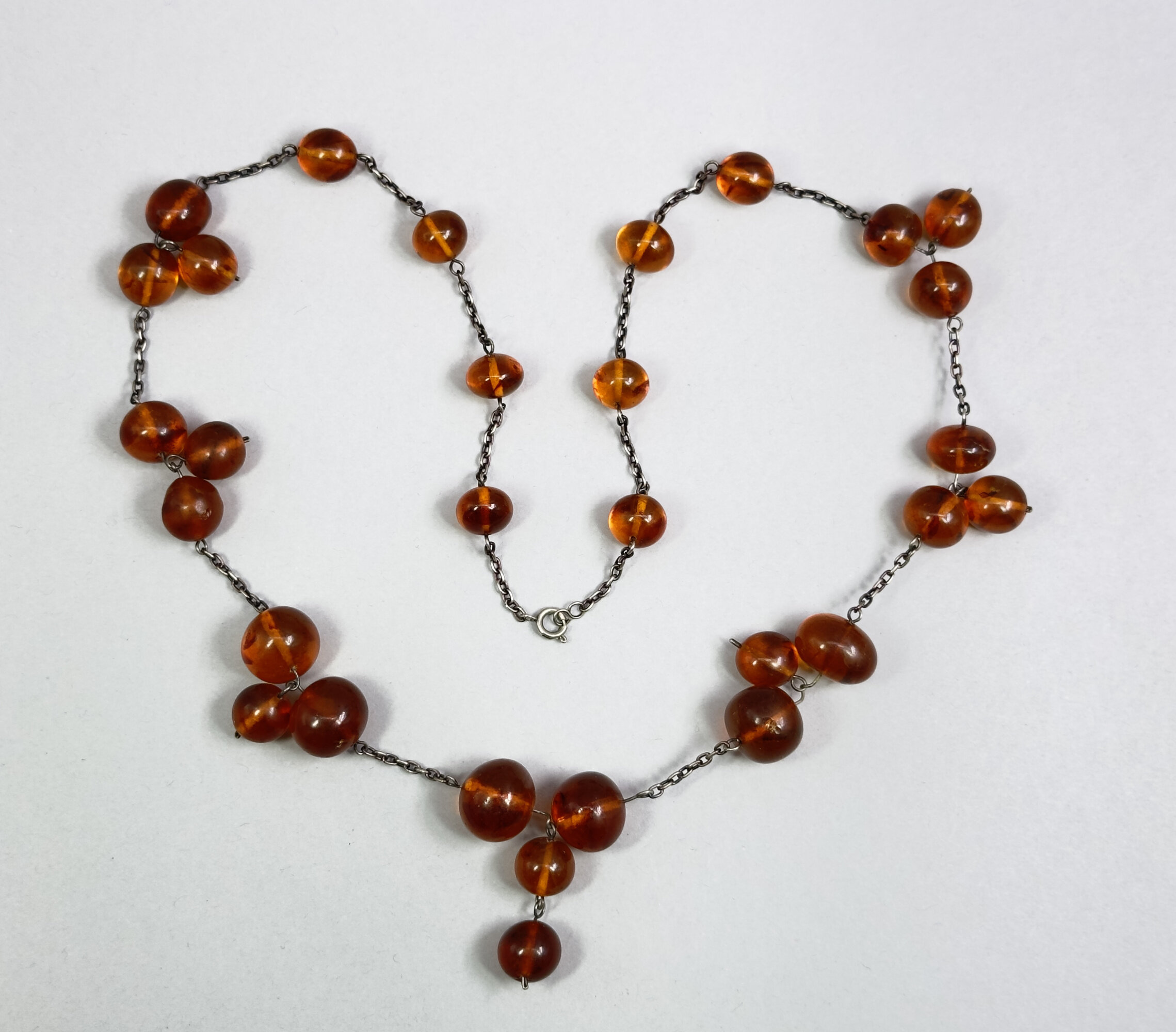
Amber statement necklace with round drops c1960
Price: £65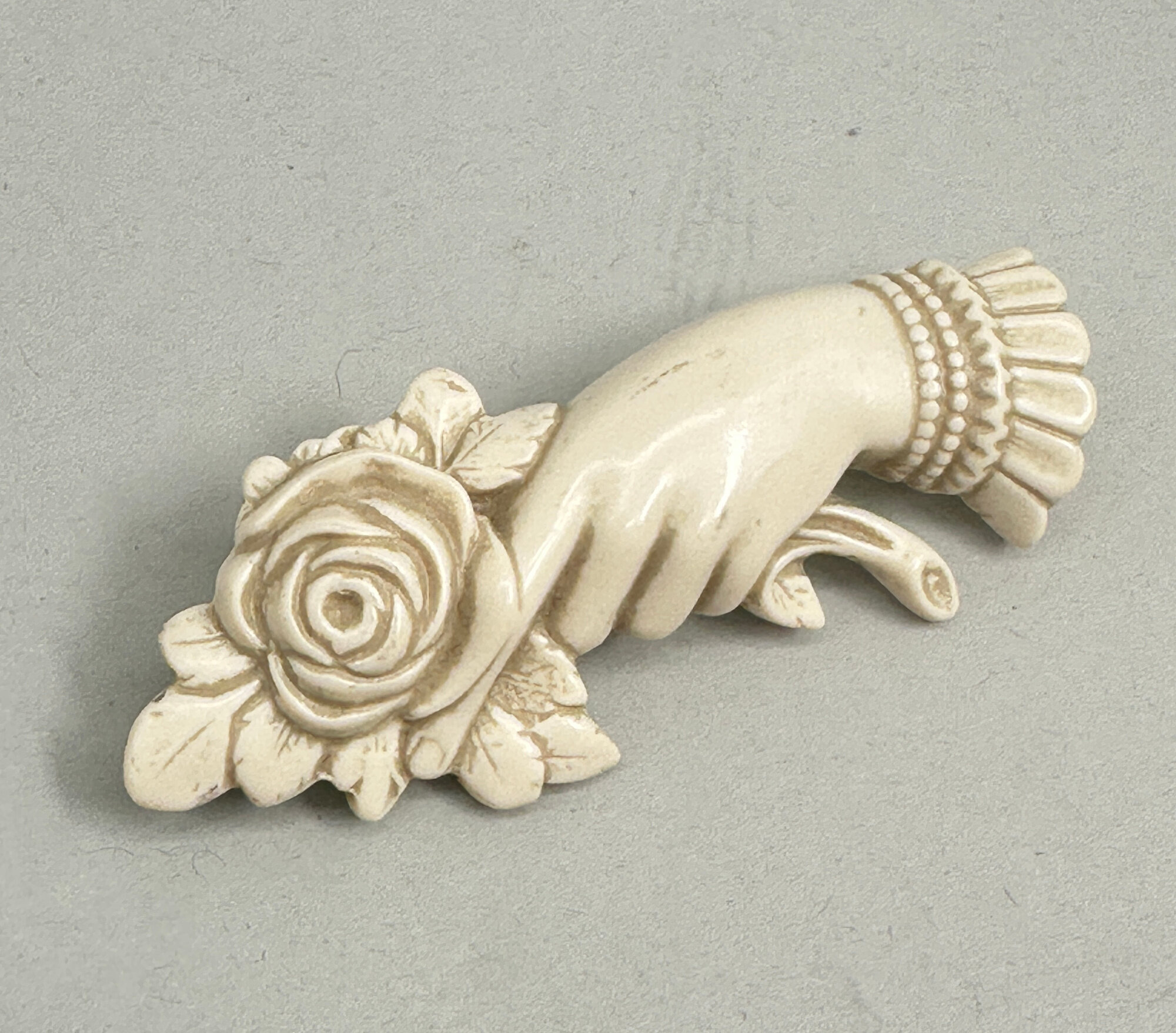
Bakelite Ivorine Mourning Brooch, British c1930
Price: £25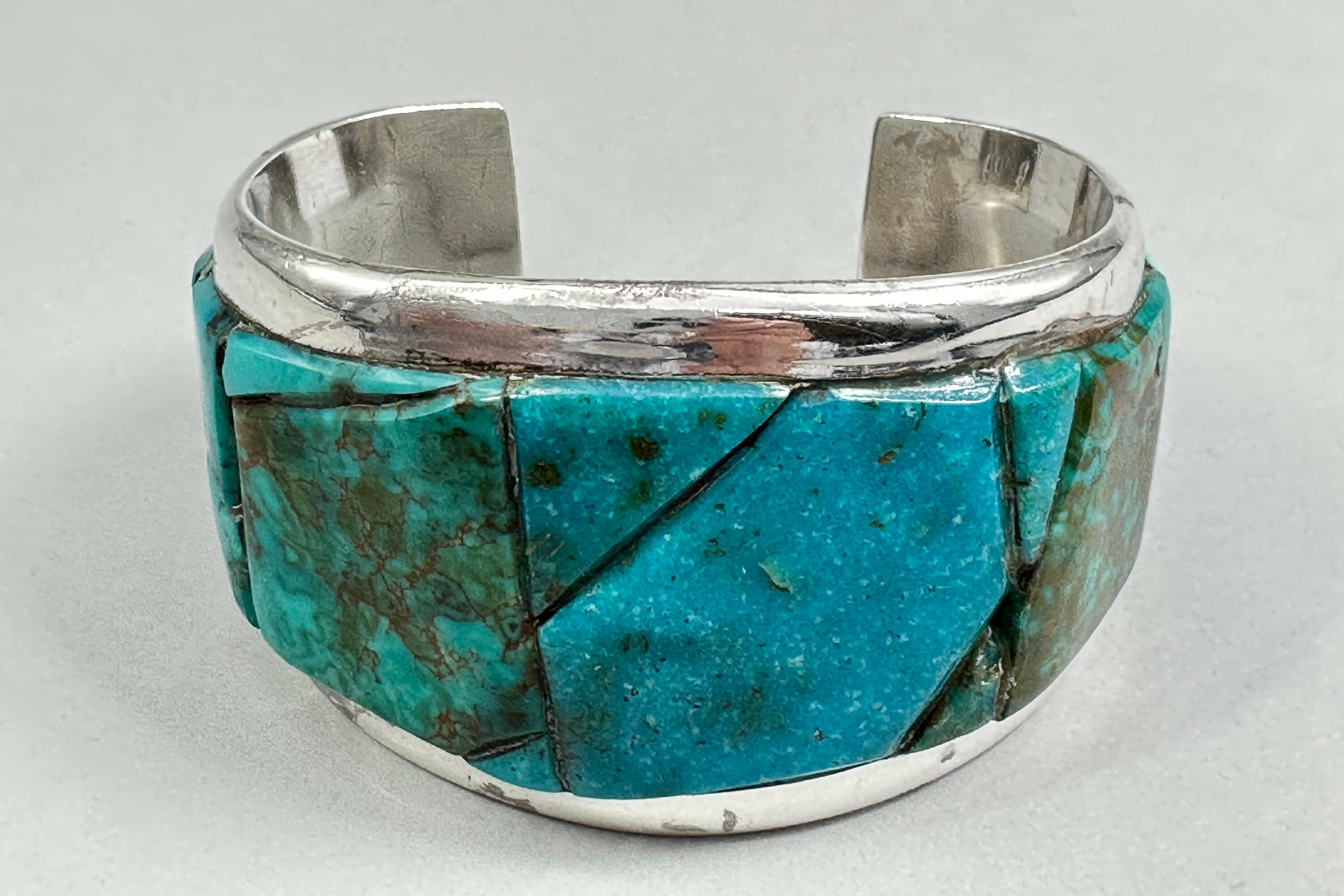
Turquoise Native American Cuff Bracelet, 1960s
Price: £95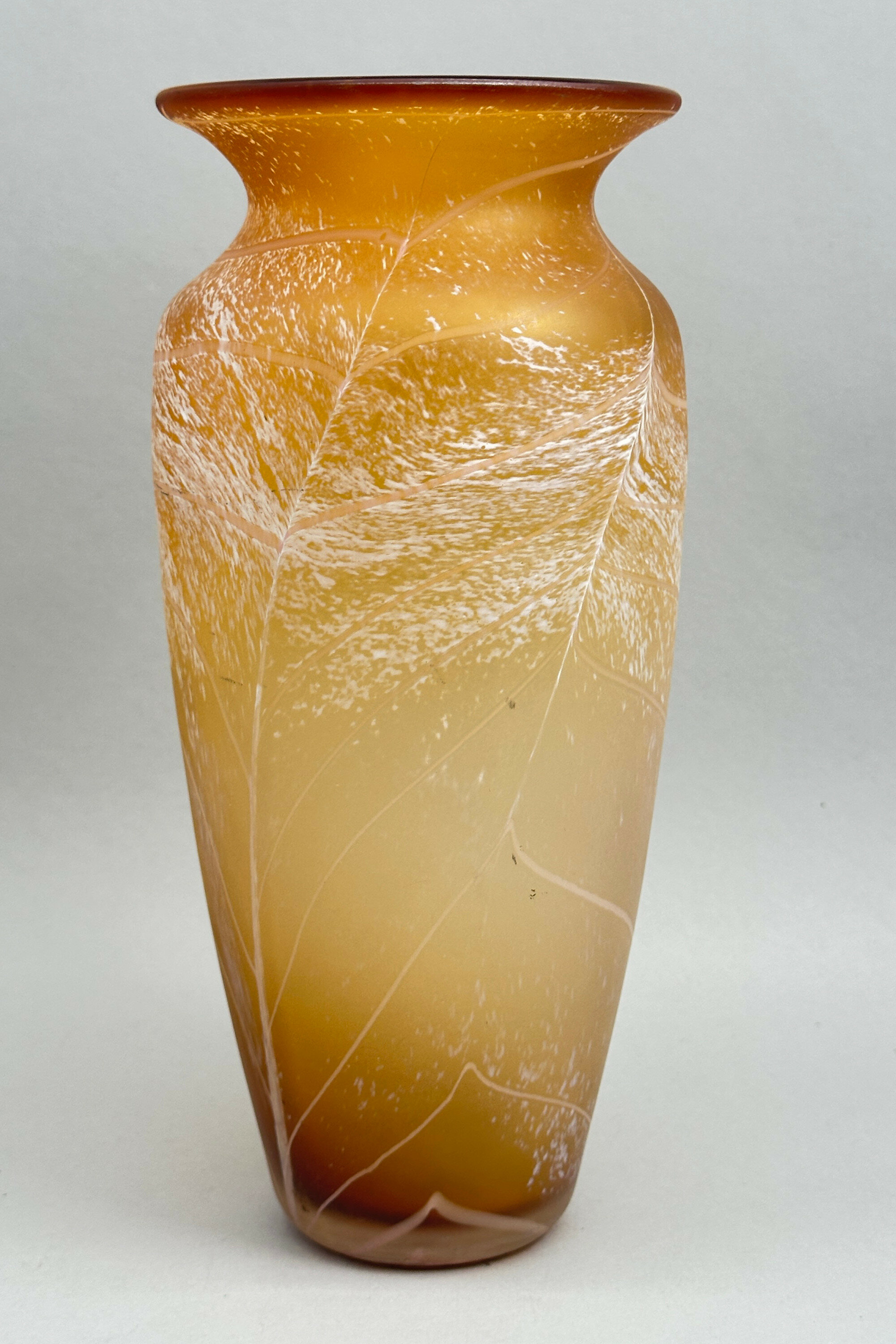
Art glass feather design Vase, probably German second half C20th
Estimate: £30 – 40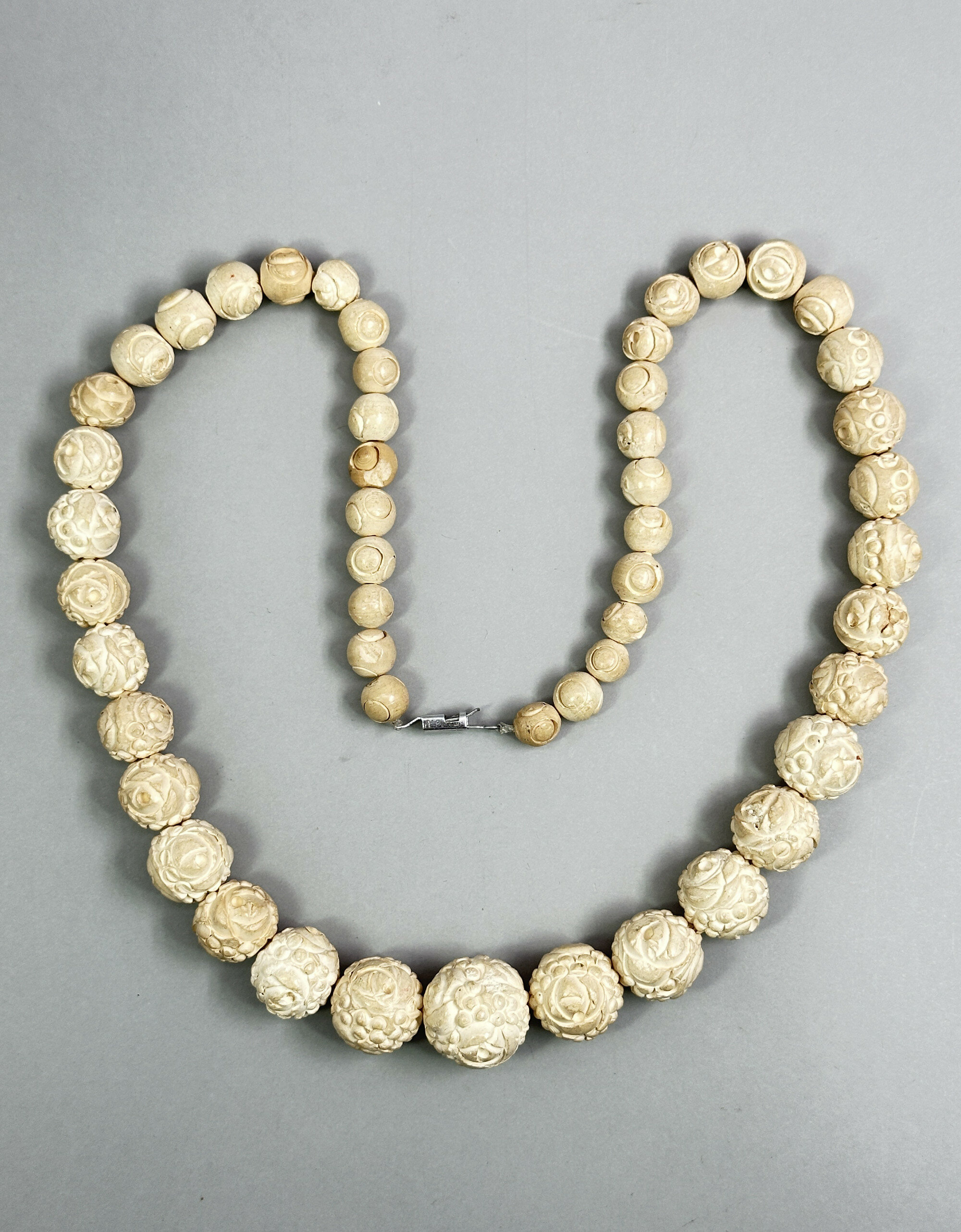
Large graduated necklace of nut carving beads, 1930s
Price: £25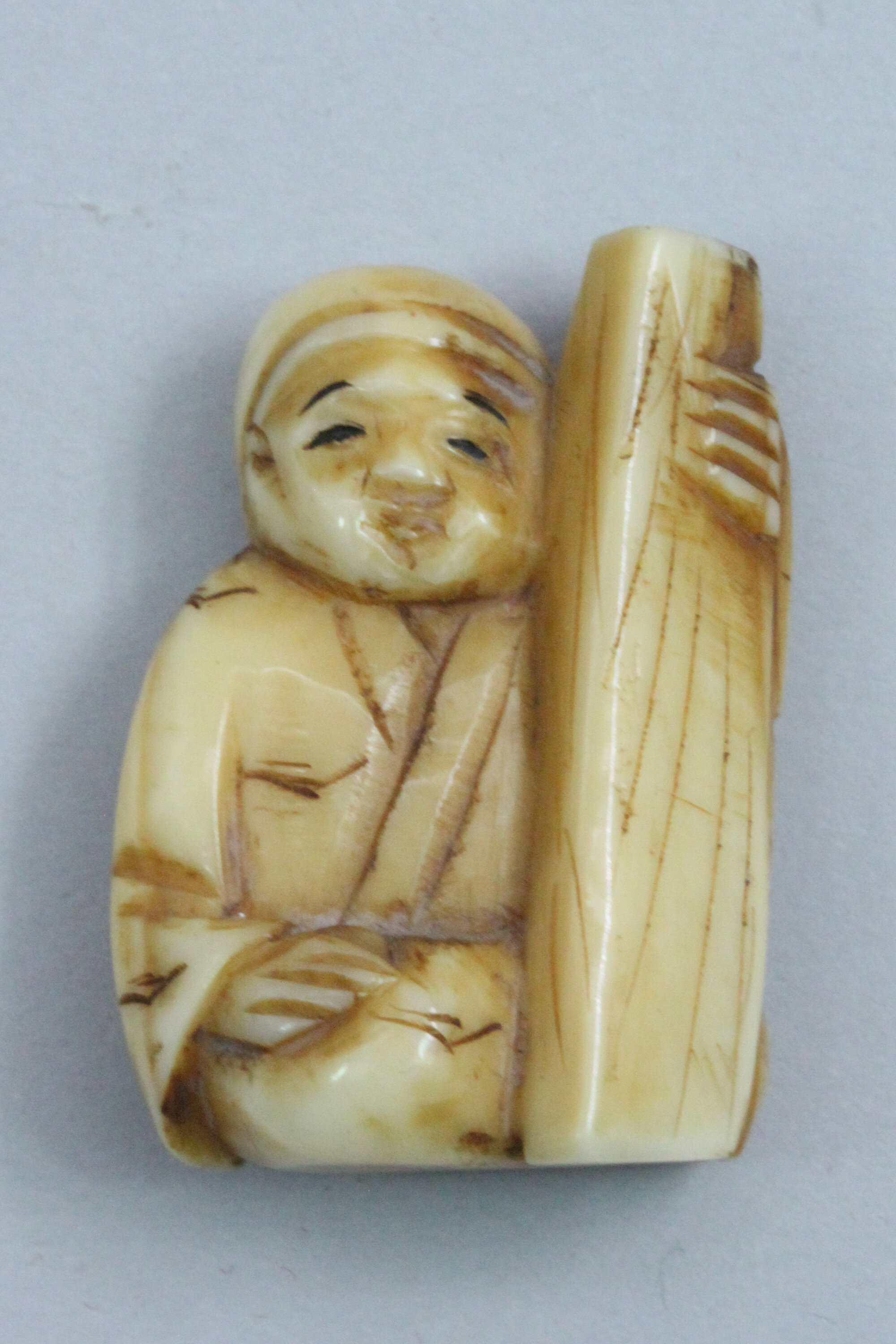
Chinese Bone Netsuke carving of a man holding a musical instrument, early C20th
Price: £25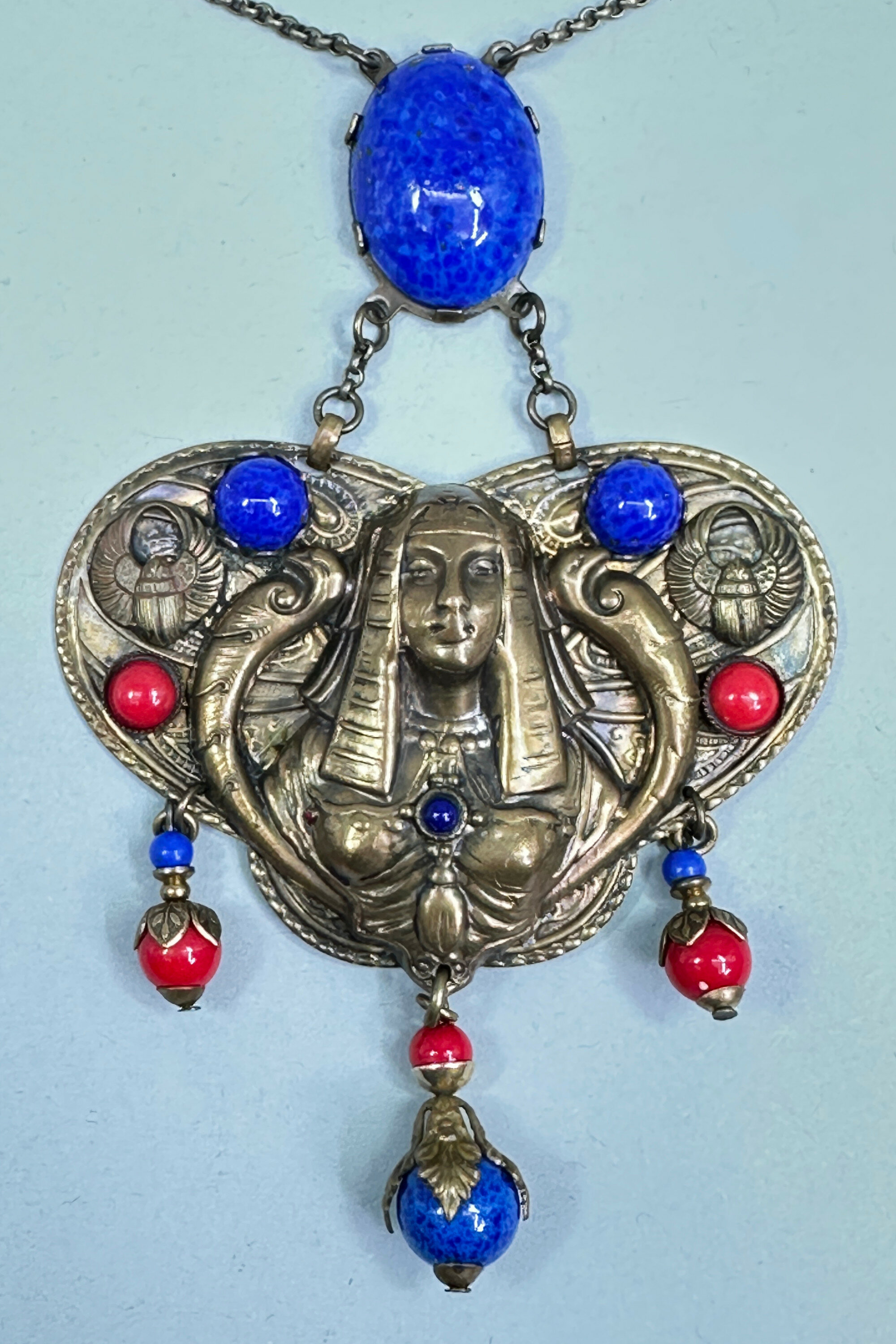
Czech Egyptian Revival Necklace with glass mounts and drops, Edwardian circa 1910
Price: £150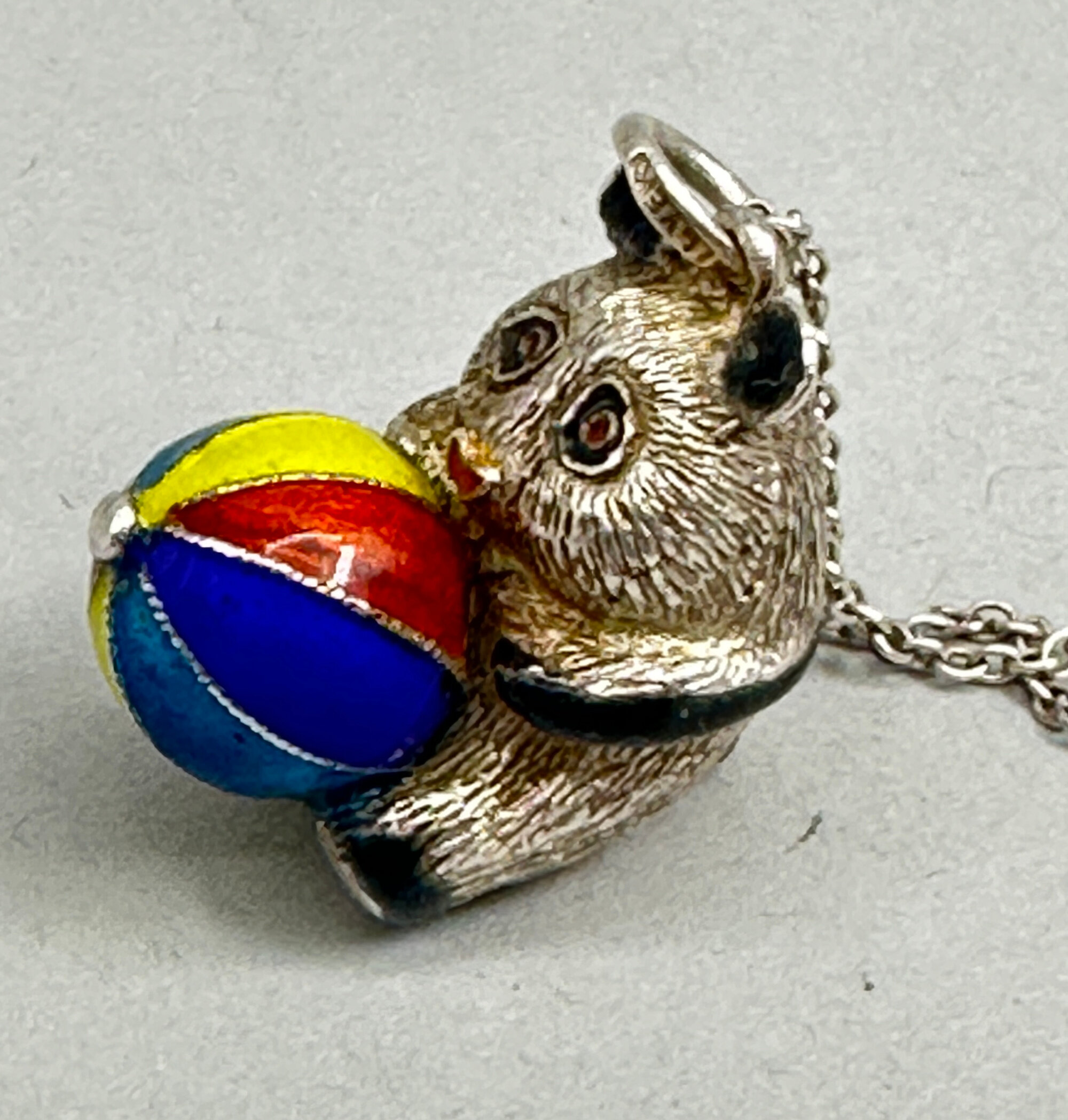
Sold silver and enamel Panda pendant necklace c1980
Price: £55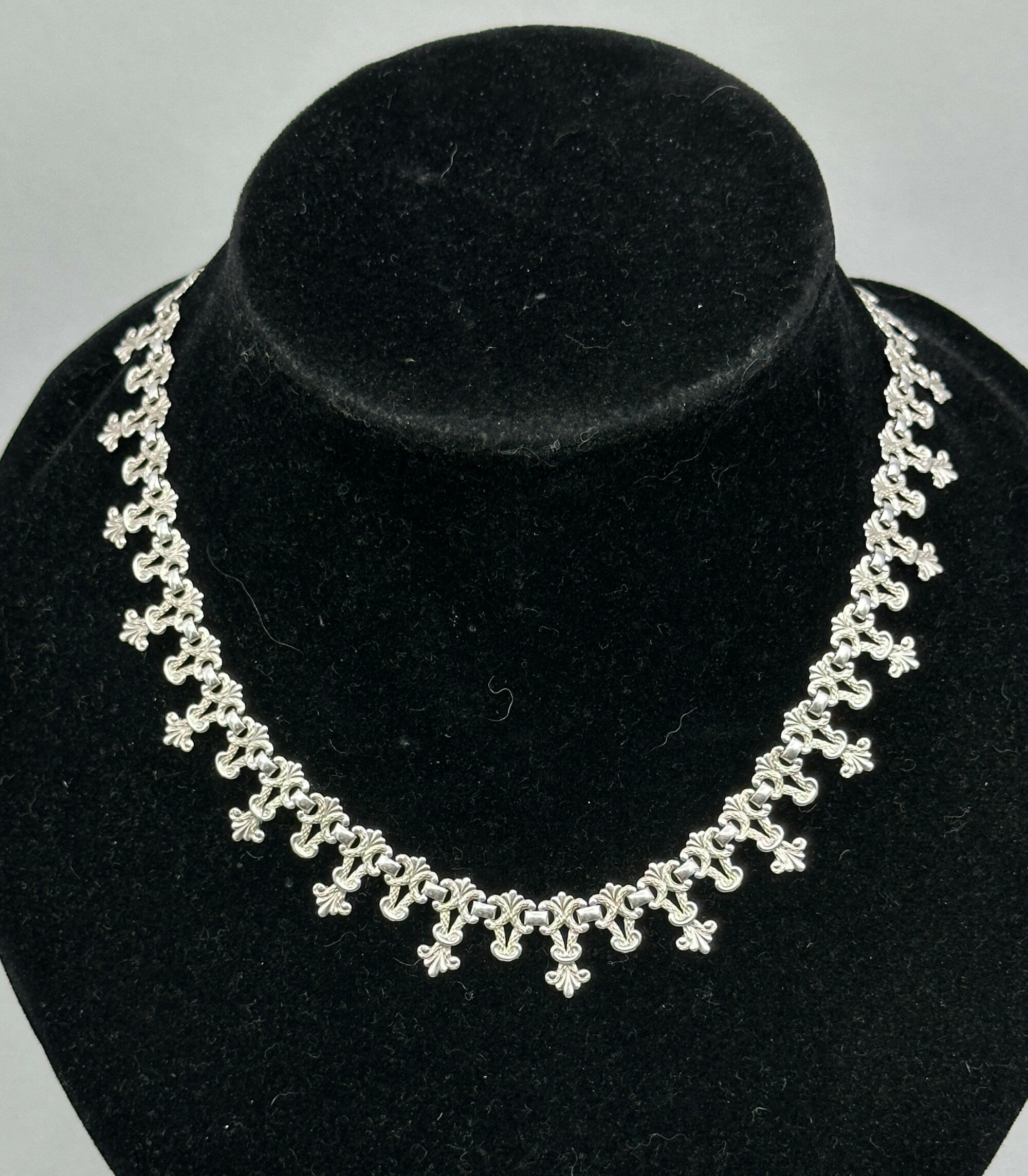
Edwardian silver fleur-de-lis collar necklace circa 1910
Price: £85Please note that the necklace is not marked for silver and has not been tested.
